Cyberpunk 2020 by SirPhoebos
The Dark Future (hold the grim)
Original SA post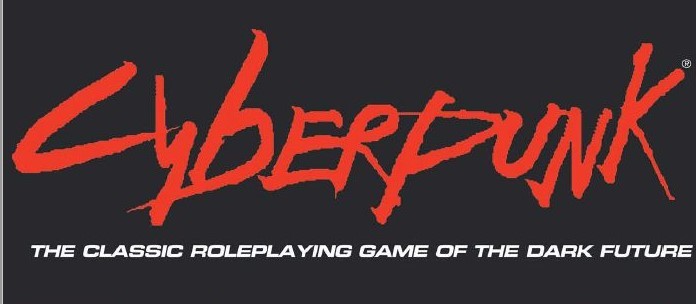
https://www.youtube.com/watch?v=4fWH5jw8JJ0
Part 1: The Dark Future (hold the grim)
My cousin introduced me to Cyberpunk 2020 when I was 12. I only played it a few times, but between then and leaving for college I collected a lot of Cyberpunk books. The big attraction was the gear porn - seeing all the guns, cyberwear, and cyberdecks. (what’s a cyberdeck? We’ll get to that). I loved reading about how great each thing was, and I loved making characters that would use them and picturing that character with that equipment. I didn’t follow the character creation rules admittedly - I wanted that Dragoon now, and damn the cost, whether Euros or Humanity! Basically, it was a weird form of fanfiction for me.
It’s been a long time since I’ve looked at the core books or its supplements. Time to see what I remember, what I’ve forgotten, what I never realized, and decide how it all holds together
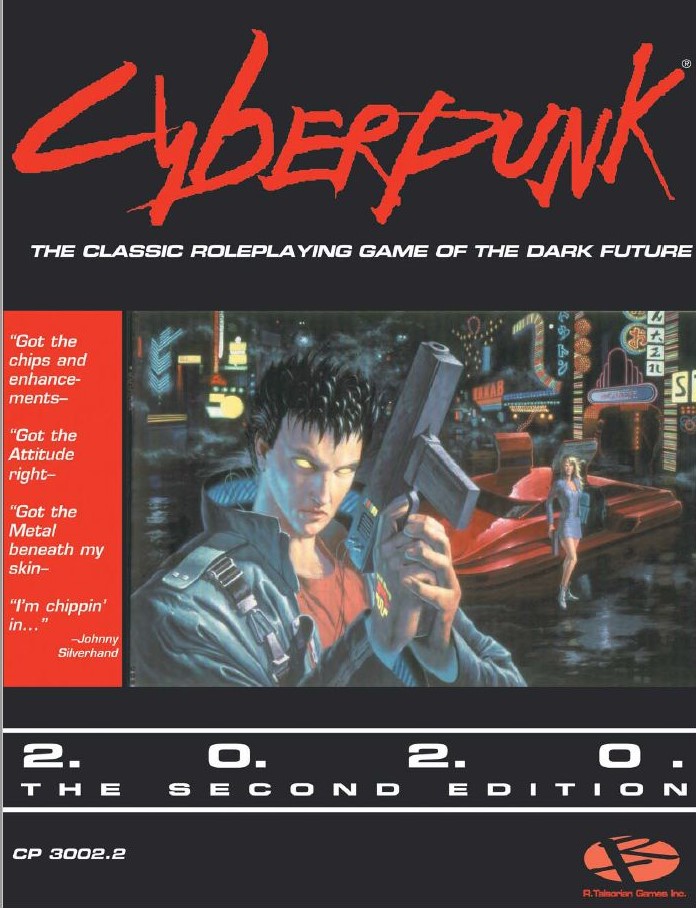
One of CP2020’s selling points was the art and in setting quotes did a lot to convey the setting. The quotes were colorful, but they never went so overboard with in-setting slang that you couldn't follow what was happening. The art and quote on the cover let you know right away what this game is about. This was the RPG for playing William Gibson’s Neuromancer. But it was also the game to play Escape From New York. And Blade Runner, Robocop, The Warriors, The Running Man, etc. Or just anything from Canon Films. Also all their Italian knockoffs. Basically if you can name a 80’s movie set in the Dystopian Future, CP2020 tried to make room for it.
The book is divided into two parts. The first part is the rules, how to create characters and run the game. One thing I like is that it gives just enough details about the world that you won’t feel lost, but doesn’t bog down on exact details. Those details are in the back of the book, along with advice for running the game, a sample adventure, and a layout of Night City, the presumed home base for the PCs.
So cracking open part on-
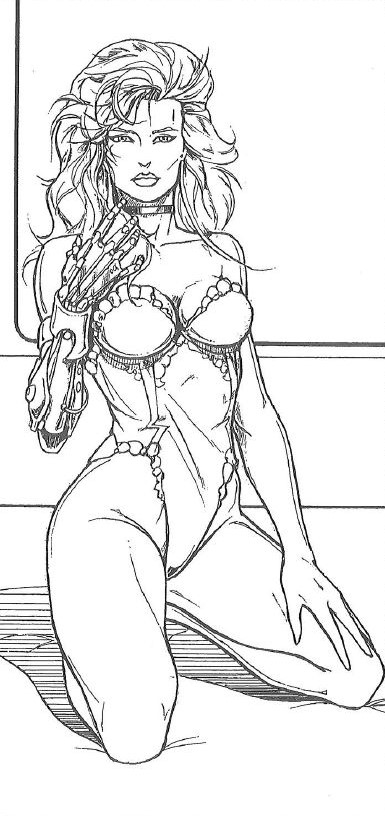
“Come play Cyberpunk, m’Cyberlod”
Oh that’s probably another reason why liked this game...
*ahem* our first chapter is titled “Soul and the New Machine”. The book gets right to the point of who Cyberpunk characters are and what they should be attempting to accomplish. Basically in the future of 2020, everything is fucked, and your character’s goal, whether it’s out of romantic idealism or as an side-product of just trying to survive, is to unfuck it. One thing I think that separates CP2020 from other nineties RPGs is that there’s an emphasis that success is possible. Sure the odds are stacked against you, but it can be done. Because as said earlier, this RPG is inspired by eighties action movies, and while a few of those had downer endings, more often they ended like this: https://youtu.be/AdxqkZc1tcY?t=250
CP2020 gives three tips to how you should roleplay your character. 1: Style of Substance, i.e. you need to look cool. How does this matter with a TTRPG that’s narratively driven, I’m not sure. I assume if someone’s agreed to play this game, they’re on board with their character looking the part. I don’t remember there being any rules or benefits for following fashion trends. 2: Attitude is Everything. This is gonzo 80s action, act like every Emilo Estevez character ever. Okay that’s more concrete. 3: Live on the Edge. This isn’t a game for being cautious, but for raising hell. I think most players will lean towards that, but good to have it out there. The last point is interesting because up until this paragraph your character was just a character, but here you are literally called a Cyberpunk. Which, while a little disjointed for some of the roles available, I honestly think is a nice touch.
The first part also has a running sidebar giving an in-universe quick and dirty history of the setting from 1987 to 2020, what the world is like, and how Cyberpunks fit in. While nice, it doesn’t do quite as good a job explaining the setting as the roles. The roles are the equivalent to your class. Each role has a suite of skills that most of their starting skill points will be spent in, plus a skill unique to that character. We get a quick introduction to each class, and then we get a full page description of each followed by an illustration. It’s these descriptions that fill out the world of Cyberpunk: what it’s like, what each role is trying to do, and what he or she can expect to go up against.
Before we get to the roles, I want to point out a note from “Maximum” Mike Pondsmith explaining that this is the second printing of CP2020, which means a few rules clarifications and lots of new art. A lot of that new art is front and center in the role section. Also, these roles are not presented in alphabetical order. My guess is the order is what concepts did R.Talsorian come up with first.
I’ll give CP2020 book this: it comes out of the gate with a bang, because the first role you’re presented with is the Rockerboy. Not only can you play a rock musician in this game, but your going to use Rock music to change the world! This is the power fantasy of every teen growing up on MTV. Just having Rockerboys existing tells a lot about the Cyberpunk setting. Rockerboys sound awesome in theory. The issue comes with how it fits in game. We get a brief description of the Rockerboy’s special ability: Charismatic Leadership: “This skill allows the Rocker to sway crowds equal to his ability level squared, times 200.” We’ll get to the issues when we get to the skill section.
By the way, reading this in pdf form proved to be interesting as it’s our introduction to the new art, and so I’m seeing this one page at a time rather than split page in the book. So I start by seeing this nice headshot of a Rockergirl.

And then I’m reminded of this piece of art
 https://imgur.com/VLSq6oT
https://imgur.com/VLSq6oT

80s Actor/Actress to play Rockerboy: Ally Sheedy
If the Rockerboy is Cyberpunk’s soul, then the Solo is it’s big, swinging dick. This is who you play as to be peak
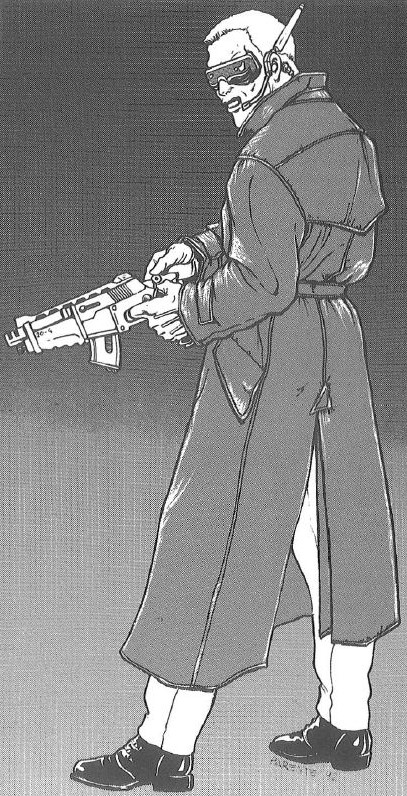
80s Actor/Actress to play Solo: Billy Duke
Along with the Rockerboy and Solo, the Netrunner role is important to how CP2020 is envisioned, as well as what it’s core problems are. The Netrunner is a hacker who plugs her head directly into the internet and commits cybercrimes. In practice, this meant you had your own mini-dungeon that you played in - complete with entirely separate rules from the rest of the game - while everyone else waited for you to finish. Their Special Ability, Interface acts as your main stat for doing anything important on the internet. No other role gets it, so no one else can really do anything in this section of the game.
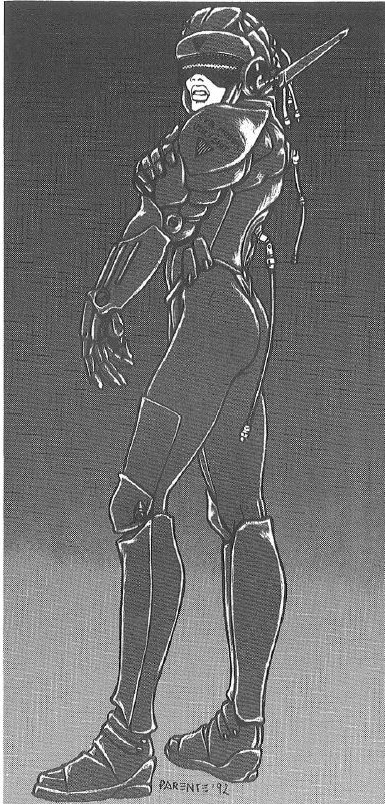
80s Actor/Actress to play Netrunner: Merritt Butrick
For better or worse Rockerboys, Solos, and Netrunners are the core of what Cyberpunk is trying to be. The other six roles fill out the cast with varying degrees of appropriateness. Some probably deserve a spot right next to our main trio. Others, not so much.
Next time: Cyber-Docs! Cyber-News! Cyber-Cops! Cyber-Busey!
Support, Antagonists, and Shittier Versions of Existing Classes
Original SA post
Part 1-b: Support, Antagonists, and Shittier Versions of Existing Classes
Our next class is a two-for-one deal, the Tech and the Medtech. The Tech is supposed to be building, repairing and rigging together custom gear for the rest of the party. Their Special ability is Jury Rigging, which allows them to repair or alter anything for 1d6 turns per level. The problem is that’s about as far rules for item creation went, but maybe there’s something I missed. The Medtech is somewhat better off-they can get the party back to full health after a fight. Assuming they survive, because fights are very lethal. The MedTech’s Special Ability is Medical Tech, which allows them to perform major surgery.
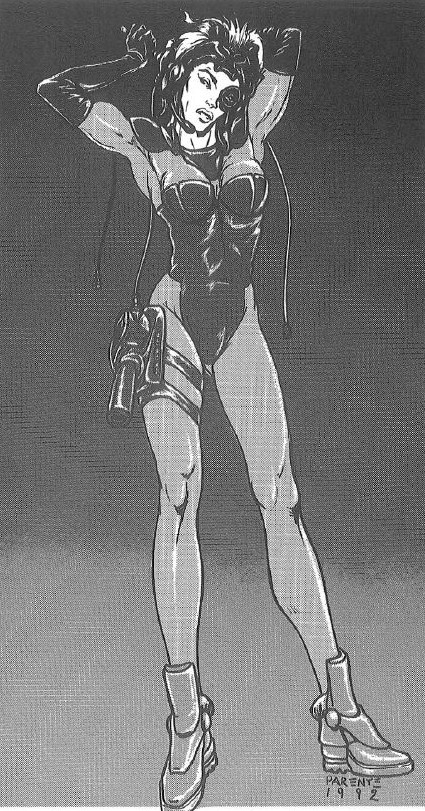
80s Actor/Actress to play Tech: Marina Sirtis
80s Actor/Actress to play MedTech: Bill Murray
Even to my uncritical 12-year-old-mind, I thought that the Media was an odd duck in this game. They’re attempting to find the big story and expose it to the world on the evening news. A great premise for a game, but I wouldn’t necessarily call it Cyberpunk. Especially because of this line in the class description:
quote:
You've got fans, contracts and your own Corporation backing you.
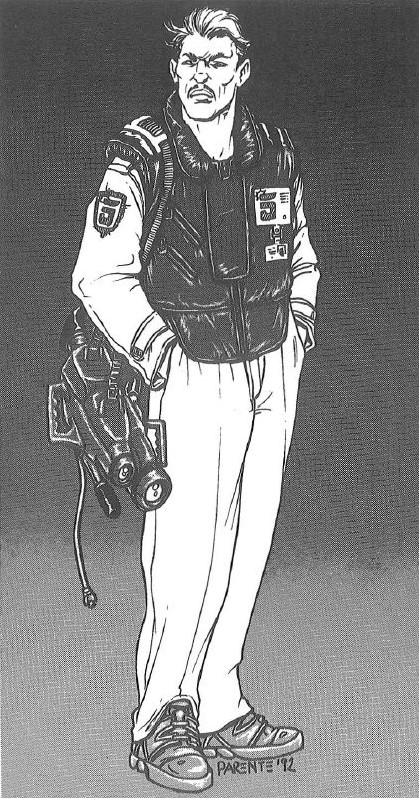
80s Actor/Actress to play Media: John Carradine (he’s just here to keep his SAG membership current)
What if you wanted to be a Solo, but shittier? CP2020 has not just one, but two options! The first is Cop. You are trying to enforce law and order when the game has already stated that both of those things are at best a farce and most often both have already been dumped in a food processor. Even the description is really unsupportive. While there might be some romanticism in fighting a hopeless fight, it won’t be any fun because instead of Combat Senses, the Cop’s Special Ability is Authority, the ability to “intimidate or control others through your position as a lawmen”. When one half of your enemies are street gangs on combat drugs and the others are corporate operatives above the law, that ability feels pretty limp dick
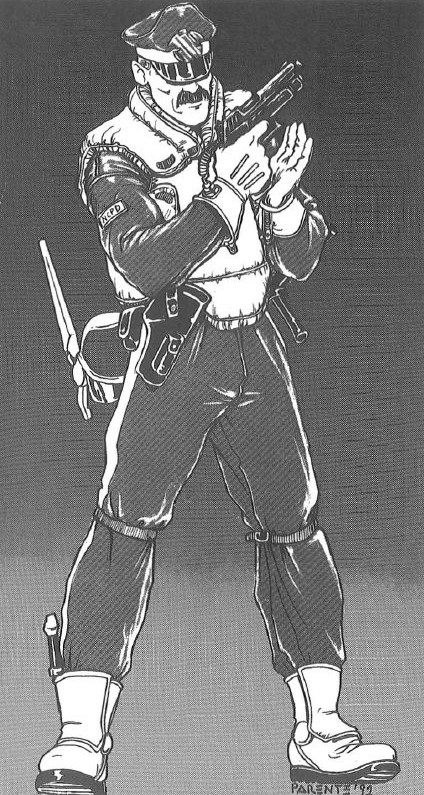
80s Actor/Actress to play Cop: Danny Glover
I think it’s inevitable in any RPG that someone’s going to want to play the bad guys. So our next role is the Corporate. You are a corporate executive, and it turns out the offices of the Cyber-future are no safer than the streets. Like the Rockerboy, the Corporate has the problem of if someone is playing one, then the game is likely going to center around that character. On the other hand, the Corporate’s Special Ability, Resources, allows her to command corporate resources, which is a reasonable way to keep the gear porn flowing. CP2020 does a lot to turn the executive from “exposition guy whos shot out of a high rise window at the end” into a mix of Gordon Gekko and Tony Montana
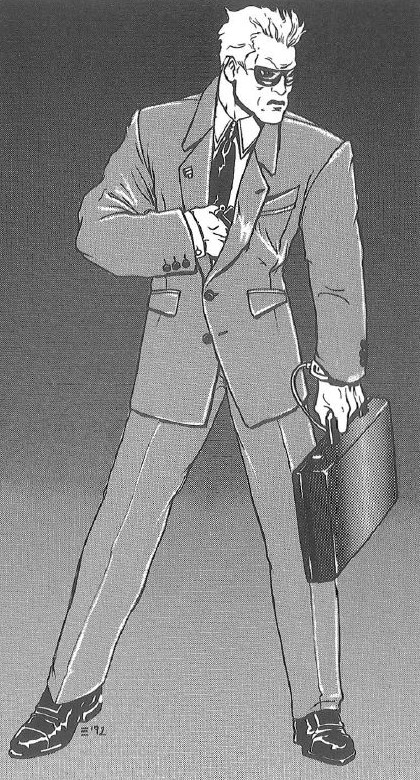
80s Actor/Actress to play Corporate:
But let’s assume the PCs aren’t in the mood for siding with The Man. Then the Fixer takes over the role of getting the goods for the party. The Fixer knows what’s up on the streets, where to find the things people needs and what it’ll cost to get it. Occasionally helping others for free is optional, but shouldn’t be advertised-people might think your being naive. The Fixer’s Special Ability, Streetdeal pretty much governs everything a Fixer needs to do. If I had to pick a best SA after Combat Senses, it’d either be this or Charismatic Leadership. Honestly, Fixer really needs to be one of the first roles advertised, and not behind Media.
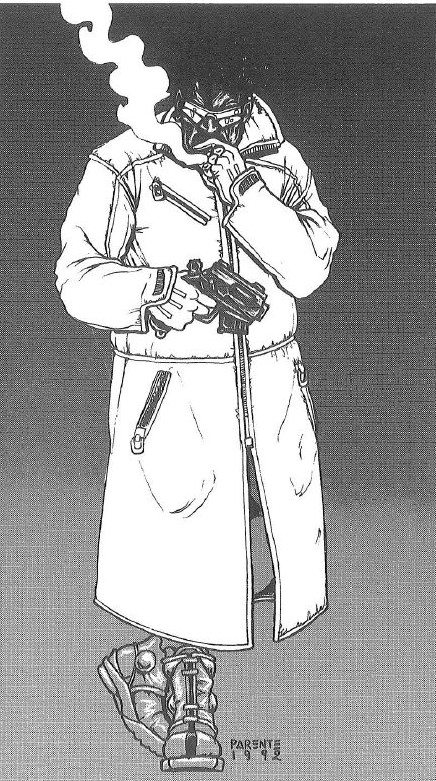
80s Actor/Actress to play Fixer: Eddie Murphey
I said that there were two “Solo, but sucks” roles. The other one is the Nomad. The Nomad is for the player that insists Mad Max is in the same genre as Blade Runner and that roaming caravans of makeshift armoured vehicles fits in a world that also has megacorps, arcologies, and cyborgs. And you know what? CP2020 does a pretty good job getting the two to gel together. The problem is that the Nomad doesn’t have Combat Senses. Instead, his Special Ability is Family, which lets the Nomad get the help of a number of members of his “Family” (ie the people he moves around with) equal to his ability score times two. Also a Nomad’s starting funds are pathetic, which is a real problem in a game where gear is so important.

 for nipple poppagehttps://imgur.com/YyZQOQ5
for nipple poppagehttps://imgur.com/YyZQOQ5
80s Actor/Actress to play Nomad: Sigourney Weaver
Next: Base Stats and how to determine them
Character Creation: Roll to be cool
Original SA post
Part 2: Character Creation: Roll to be cool
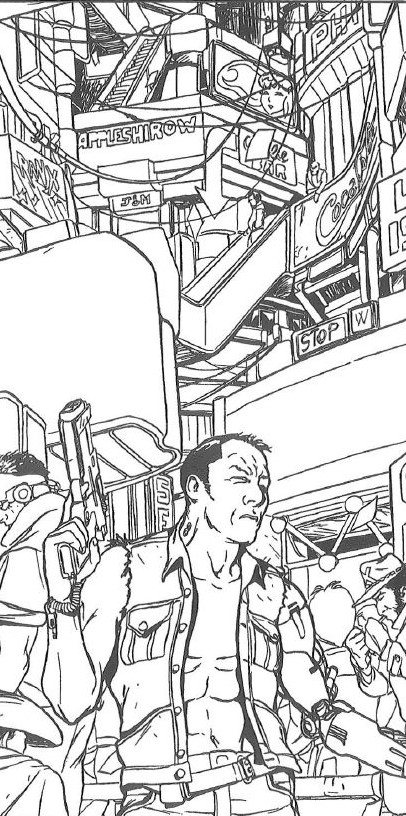
https://www.youtube.com/watch?v=f1JYDmo19to
Now that we have the roles explained and maybe one in mind for our character, it’s time to determine his or her stats. Cyberpunk characters have 9 stats, and there are two ways for PCs to determine their. One is to roll a d10 9 times, discarding 1s and 2s, and allocate the results to whatever stats they want. The second way is to roll 9d10 and distribute the points freely. There’s a third way to determine stats - buy them based on a predetermined budget - but this is strictly for the GM (called the “Referee” in this game) to use in making NPCs. Why is this Referee only? Because! Here’s the table showing the point budget versus how important an NPC is.

No way this could ever be applied to players, no siree
We also have this lovely note:
Cyberpunk 2.0.2.0. posted:
Note: We could, at this point, warn prospective Referees about the various dodges their players will have for creating "supercharacters." But face it; if they want to create a mondo
character, who are we to stop them? You're all big boys and girls now, and if you, as Referee, think your players are getting way outa line, why not just go ahead and waste 'em?
That's the Cyberpunk way.
Sometimes I wonder how this hobby is still around.
Lastly on this page we get a sidebar explaining what dice are used and what dice notation means for those unfamiliar to it. CP2020 uses mainly d10s, but also uses d6s and percentile dice. Divided results are rounded down, and all modified rolls have a minimum value of 1.
We’re also told, before defining the stats, that 2 is the worst possible, and 10 is the best possible. It doesn’t qualify this with “the best/worst before modifiers” but flipping to the back of the book to the sample adventure, we can see that’s the intent. So what are our 9 stats?
Intelligence (INT): Covers most (but not all) things you would expect an Intelligence stat to cover. It’s also one of the stats that determine your secondary skill points. We are told Netrunners and Corporates need the highest Int stat possible.
Reflexes (REF): This is your uber stat for combat. Shooting, driving, martial arts, sneaking, and athletics are covered by this stat. It also feeds into your secondary skill points. One curious thing in the description: “Characters who intend to engage in a great deal of combat (such as Solos, Nomads or Rockerboys) should always invest in the highest possible Reflex.” That’s right, your Bruce Springsteen of the future is expected to stand shoulder to shoulder with the Snake Pilsen expy. Have fun on tour!
Cool (CL): Aside from being, well, “Cool”, this is how well your character holds up under pressure, particularly being able to fight on through wounds. Even though later we find the rules for saves against being stunned from damage are governed by the Body stat. But maybe I'm forgetting something, and Cool will turn out important in which case
 . Because this is ostensibly a combat stat, we’re told that Solos need this to be the highest (higher even than socially oriented classes like Rockers or Fixers).
. Because this is ostensibly a combat stat, we’re told that Solos need this to be the highest (higher even than socially oriented classes like Rockers or Fixers).Technical Ability (TECH): This stat is used when building or repairing technology, or using something that unfamiliar. I’m guessing someone at R.Talsorian once flunked an engineering class which is why this is separate from Intelligence. This stat is of course most important for Techs.
Luck (LK): Any character can add a bonus up to their luck score to any roll (must be declared before the roll is made. Each point of bonus uses a point of luck, and your luck score refreshes after each session. Note that this isn’t unique to PCs, but every NPC has a luck stat and can use it to boost any. Including damage.

Attractiveness (ATT): This is how good you look. While the book tries to make this seem important, judging by the number of skills related to this stat, I’m going to say that in practice it is not. Media and Rockers hypothetically need this score to be high, but while I don’t remember everything about this book (that bit about Rockers being combat classes surprised me), my suspicion is that this is going to be a dump stat for every role.
Movement Allowance (MA): This is how far you can move “normally” in meters in a turn (1 turn = 10 seconds). There are two derived stats for MA: Run, which is how far you can run and is your MA*3; and Leap, how far you can leap, which is your Run/4.
Empathy (EMP): Here’s a doozy. Empathy not only covers all the charisma stuff that wasn’t split off into Cool or Attractiveness (particularly your ability to relate to others), but it also determines how much cybernetics your mind can handle before you become an uncontrollable (and unplayable) murderbeast. Every PC and NPC starts with EMP*10 as their Humanity Points. As you graft cybernetic parts on, you subtract its Humanity Cost (usually a random amount) from your Humanity. Whenever you lose 10 points of Humanity, your EMP goes down by one. What happens when you run out of Humanity? https://youtu.be/NJIjNs_s2NI?t=29
Body Type (BT): This is how much you can carry, how well you can absorb damage and recover from shock, and how hard you hit someone in melee. We once again get a reminder that this chapter at least considers the Rockerboy to be a combat role, because they need this to be high like Solos. You can carry your BT*10 in kg, and can deadlift your BT*40. Body Type also determines your Save against Stun and Death. Stun Saves occur whenever you take damage or are exposed to knockout drugs (save or be knocked out until you make the save successfully). Death Saves happen whenever you are mortally wounded or are exposed to lethal poisons (literally save-or-die). Both saves work the same-if you roll equal to or under your BT, then there is no additional effect. Finally, BT determines your Body Type Modifier (BTM) which is a flat reduction to all damage. It ranges from 0 to -5. It takes two tables to get from your BT to BTM, but to be fair both tables are on the same page.
In the middle these explanations of the stat, we have our Character Sheet. Rather than put it at the way back of the book where it’s easy to find, it’s in the middle of the book (near the beginning admittedly, but still). Here’s what the CP2020 character sheet looks like:
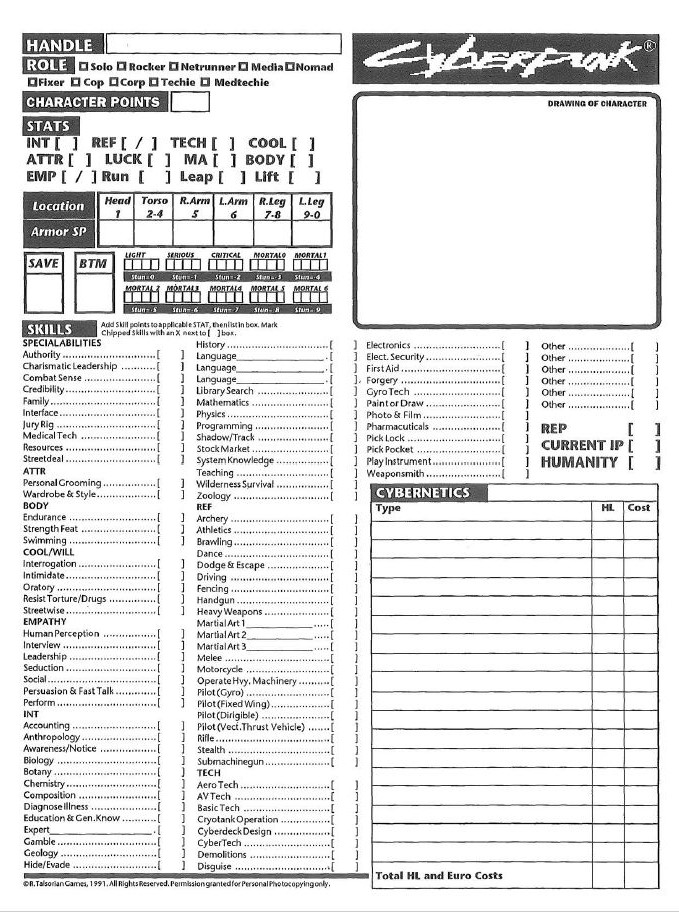
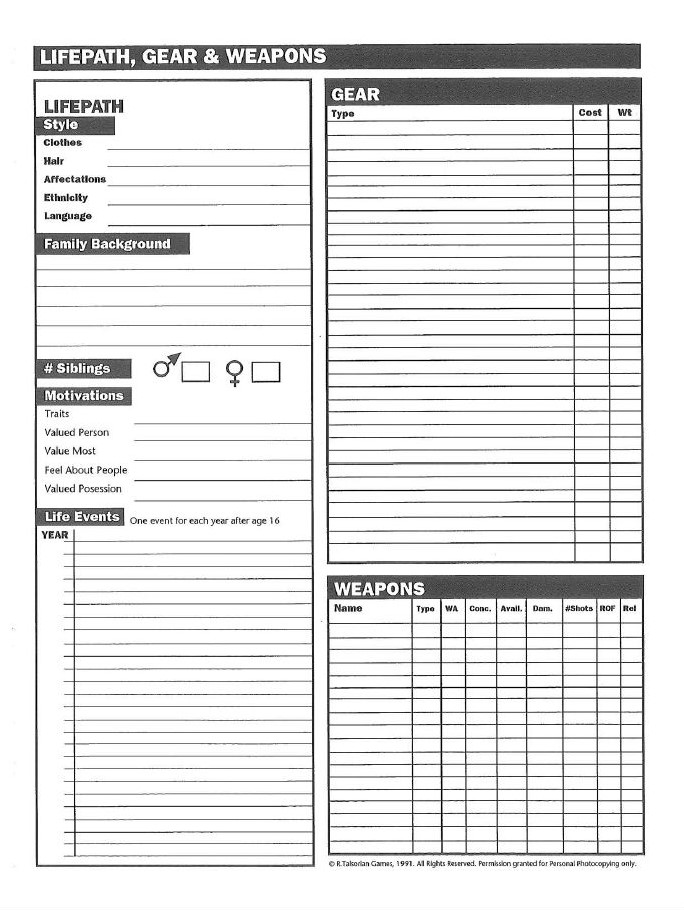
Well, it’s not the worst I’ve seen. But damn that’s a lot of useless skills.
The last part of this chapter is a method for Referees to quickly generate non-important NPCs. Like some other systems, CP2020 presumes that NPCs will be created the same way as PCs, but this here is a halfway step towards realizing that’s a waste of time when all the Referee needs is a few rent-a-cops for the PCs to blow away. This quick creation method still has some inefficiencies - Referees are still expected to allocate skill packages individually - but it’s better than nothing. These quick NPCs even have their own abrigged character sheets.
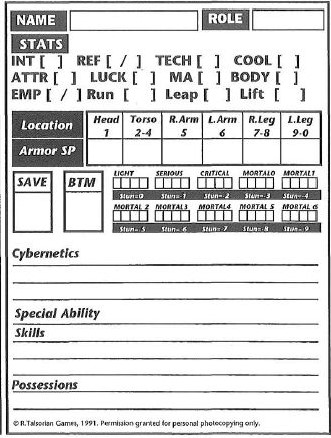
Next Time: Lifepath, aka the stuff the hero mumbles about in the awkward filler scene in Act II
Also:
SirPhoebos posted:
The reason I think the Rockerboy fits with what CP2020 wants to do (as opposed to actually achieve with the rules) while the Media really doesn't is that while his or her tools are more indirect, at the end of the day the Rockerboy is still aiming to give Mr. CEO an extreme defenestration. In contrast, the Media has the same mindset that says the Mueller Investigation is going to bring down Trump any day now.
I should do a 2020/2020 counter whenever I allude to how things actually turned out. I guess that's 1.
2020/2020 Counter: 1
EDIT: I just did a count. 92 skills (not counting subcategories). wtf

Call me Cyber-Ishmael
Original SA post
Part 3: Call me Cyber-Ishmael
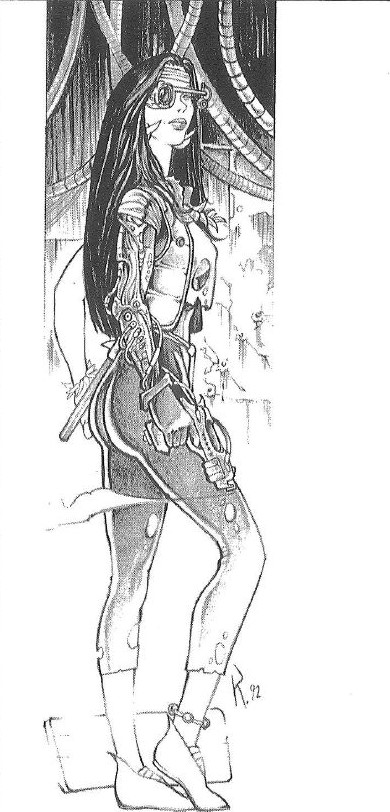
https://www.youtube.com/watch?v=laiY1Utifig
This is probably my favorite bit in CP2020 in retrospect. Section 3 is titled “Tales from the Street” and it is a full suite of tables to generate a background for your PC, give a picture of where they came from, what sort of plot hooks they have to resolve, and what might motivate them. Childhood, friends and relatives, motivations, early life events, and even your sense of style are quickly rolled up. My only complaint is that some die results provide mechanical bonuses or penalties - if I ran CP2020 today I’d houserule that these effects are baked into your starting stats rather than added or subtracted afterward.
Rather than go over every table entry, I’m going to create a sample character. But before I begin, I need to draw attention to an in-universe quote that I feel is in questionable taste:
Johnny Silverhand posted:
"I remember she told me she was born In Miami, about 2004 or so ... She was pretty sure, because she could still remember what It'd been like when the Euros rocked Washington and the near miss took out Tampa ...
"She had these Incredible blue eyes; clear through and through, like crystals of Lace, and a smile 'from a magazine dream. 'Course, the eyes were Teknics 2350's, and the smile really was from a magazine-nice biosculpt Job. It didn't matter how much was real in the end. I still fell hard for her. I'm that type."
With that out of the way, let’s roll up a lifepath. Our hypothetical player (let’s name him Rick) is making a character for Cyberpunk 2020, but is coming up blank on defining this character. All he knows is that the character is a Solo. Luckily the Lifepath Tables have him covered. The only thing it doesn’t tell him is this character’s name. Rick shrugs and names the Solo Jamie because he’s been listening to Aerosmith a lot. Rick’s first role for Jamie is her style and appearance - the kind of clothes she wears, her hairstyle, and what affections. Rick roles a 3, 1, and 5. So she wears Corporate Suits, a Mohawk, and has a nose ring. Well, I guess that’s how Jamie rolls.
The next role is ethnic origin, which requires a bit of a deeper dive. The world of Cyberpunk 2020 is multicultural, and the table here makes a good effort to reflect that. You’re no more likely to be Anglo American than to be from the Pacific Islands There are some deficiencies. One, there is no option for mixed race. Second, this selection also determines your native language, which you speak at skill level 8. So if your ethnicity is 2: Japanese/Korean, then you speak either Japanese or Korean. The possibility that you speak English because you grew up in an integrated American household (or because you had no parents, which we’ll get to) doesn’t seem to be considered. There’s also probably an issue of what ethnic groups are paired together, but I’m not an expert. I’ll just share the table and let the thread be the judge. All I will say is that if you roll Black-American, one of your language options is “Blackfolk”
 (CP2020 does have a Common-equivalent known as “Streetslang,” so I’ll give credit for not just defaulting to everyone speaking english).
(CP2020 does have a Common-equivalent known as “Streetslang,” so I’ll give credit for not just defaulting to everyone speaking english).
Back to our example, Rick rolls 8. Jamie is Hispanic. We pick Spanish as her native language, but Rick makes a note to invest some pick-up points into English.
(there’s also a sidebar here where we have some examples of Streetslang. Half of these are made up terms, but the other half is stuff that became common parlance within a few years anyway.)
We come to our first series of tables, Family Background. This will tell us what Jamie’s childhood was like. The first roll is Family Ranking. Rick rolls a 5 and get...Pirate Fleet?
 Jamie’s parents were pirates. Why not? His next roll is to see if they’re alive. He get a 2, and his hopes of playing Sea Batman are dashed. The next roll is Family Status. Rick gets a 6: there’s been a Family Tragedy. A roll of 7 tells him what that tragedy is: The family is involved in a long-term conspiracy! Rick knows what Jamie’s parents are up to, but nothing about how Jamie actually grew up. For that he rolls on Childhood Environment. He gets a 1: Spent on the street with no adult supervision. Lastly, Rick checks if Jamie has any siblings and what her relationship is with them. Unfortunately he gets an 8. An 8-0 on the initial role means only child.
Jamie’s parents were pirates. Why not? His next roll is to see if they’re alive. He get a 2, and his hopes of playing Sea Batman are dashed. The next roll is Family Status. Rick gets a 6: there’s been a Family Tragedy. A roll of 7 tells him what that tragedy is: The family is involved in a long-term conspiracy! Rick knows what Jamie’s parents are up to, but nothing about how Jamie actually grew up. For that he rolls on Childhood Environment. He gets a 1: Spent on the street with no adult supervision. Lastly, Rick checks if Jamie has any siblings and what her relationship is with them. Unfortunately he gets an 8. An 8-0 on the initial role means only child.
Now that we have some idea of Jamie’s early history, Rick goes to the next set of tables: Motivation. For Personality Trait, Rick rolls a 9, meaning that Jamie is intellectual and detached. The next table is Person You Value Most, and for this Rick rolls a 7, which is a Teacher or Mentor. The next roll determines What Do You Value Most, and Rick gets a 3: Your Word. Rick then rolls on the How Do You Feel About Most People table, and gets 9: “Wipe ‘em all out and give the place to the cockroaches”
 And finally, he rolls to find out what is Jamie’s most prized possession, and he get 7: Musical Instrument.
And finally, he rolls to find out what is Jamie’s most prized possession, and he get 7: Musical Instrument.The last set of tables is the characters Life Events, what he or she did as an adult before. The first thing Rick does is determine Jamie’s age, which is 2d6+16. He gets a 9, so Jamie is 25. Rick rolls a d10 nine times, and gets these life events for Jamie:
-17: Big Problems, Big Wins (1-3)
-18: Big Problems, Big Wins
-19: Friends & Enemies (4-6)
-20: Big Problems, Big Wins
-21: Nothing Happened (9-0)
-22:
-23: Nothing Happened
-24: Nothing Happened
-25: Friends & Enemies
Rick makes his first roll on the Big Problems, Big Wins. The first is to determine if it’s a problem (odds) or a win (evens). He rolls a 3, Illness or addiction! Jamie loses 1 Reflex permanently. At this point, Rick gives the referee (Dave) a look. Dave, being
For Jamie’s Friends & Enemies, the first roll is to see whether the person is an enemy (1-5) or a friend (6-10). For the sake of example, we’ll do one of each. The enemy example is more involved. First Rick determines who the enemy is. He roll a 3: Relative. Next Rick checks the Cause, and gets 2: Caused the death of a friend, lover or relative. The next roll is to see who is pissed, and it looks like this relative hates Jamie. The next roll is Whatcha Gonna Do About It to see what the aggrieved relative will do if (roll for sex) she runs into Jamie, and the result is 0: Rip into her verbally. Finally Rick checks to see who has this relative’s back, and gets a 3: Just herself (alternatively, a roll of 10 would have given our relative an entire government agency to shittalk about us). Determining the nature of Jamie’s friend only involves one roll (two if you count determining gender), and for that Rick gets a 2, “Like a kid brother to me”. As for more details of what these two are like, the table directs us back to the Style and Motivations table but we’ll skip that for this example.
One last possible life event is Romantic Involvement. First I should comment on the orientation presumption. There is no explicit or implicit statement that only hetero relationships are assumed (even if the art presumes this). I even went ahead and checked the Seduction skill and it passes the Jef Test (as seen on System Mastery). With that out of the way, let’s make some rolls. First Rick sees what sort of relationship Jamie had. The result is 7: Love Affair with Problems. Other possibilities are Happy Love Affair (boring), Tragic Love Affair, and Fast Affairs and Hot Dates. But what sort of problems did Jamie’s fling have: Rick rolls a 7: Jamie’s romantic partner is also a professional rival! So where does that leave the two of them? The result is a 1: They still love you (Jamie doesn’t necessarily love or hate her ex, which are both possible rolls.)

And that is a glimpse at Lifepaths. What began as just a reference to a song now has more than enough info to craft an interesting background. Some pieces will take some imagination to fit together, while others practically write themselves. As for Jamie, she’s going to be our example character as we explore the rules (either played by Jenette Goldstein or Cynthia Rothrock). So stay tuned as Jamie gets stats, skills, gear, and cyberwear. And a gun. ‘Cause hoy boy, does Jamie got a gun.
Next time: Skills, or: Why do they keep mentioning Hitler?
EDIT:
Young Freud posted:
I honestly probably would give this a pass, largely because Pondsmith being an African-American and growing up in Oakland. He's clearly talking about AAVE as if it's another language.
Including this quote just so no one gets the wrong impression in the archives.
https://www.youtube.com/watch?v=qHepKd38pr0
Original SA post
Part 4: https://www.youtube.com/watch?v=qHepKd38pr0
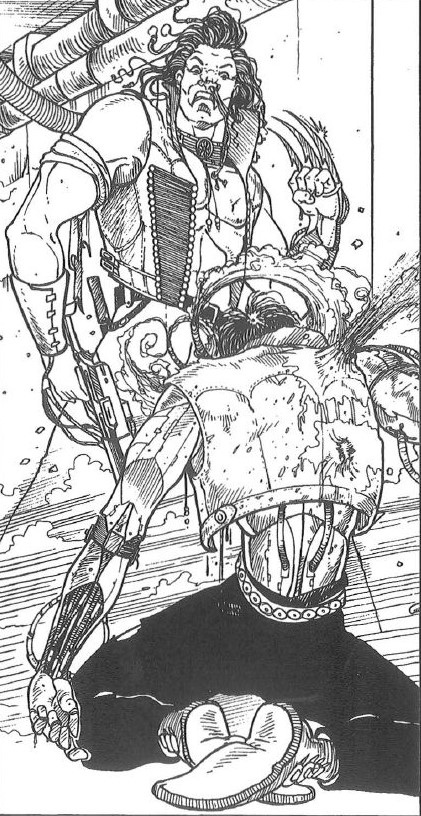
https://www.youtube.com/watch?v=kQsLmEwozGM
In Cyberpunk 2.0.2.0, characters are defined mechanically by what skills they have. There are no advantages/disadvantages, and besides their special ability (which is itself a skill), roles only provide a starting skill package to choose from. This section introduces the main non-combat resolution mechanic for CP2020, define what each skill is for and try to give a sense of what having a certain number means, and how to get better at skills.
The basic skill roll is 1d10 + Stat + Skill +/- Modifiers. To accomplish a task, a character needs to match or beat the Task Difficulty. This can range from 10 (Easy) to 30 (Nearly Impossible). There’s also a sidebar that includes a list of common modifiers (this list is also where I first heard the word “kibbitzing”). There is no note that trivial tasks shouldn’t require rolls. This is a problem because this game has critical failures. Any time you roll a 1, you automatically fail, and have to roll on a fumble table. Wee. I won’t go into details, but if you have to roll on the fumble table than there’s a 60% chance things will be made even worse on top of failing the roll. To add insult to injury, if you roll a 10, that just means you get to add another d10 to the result. I would houserule fumbles out of existence, but for the purpose of my example character, I’m going to assume they’re in effect.
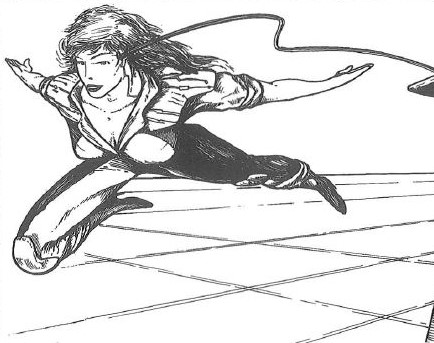
I don't think her tripping over that wire 1-in-10 times is in genre, but what do I know?
Starting characters have two pools of skill points. The first pool is for the character’s Career Skills, which is 40 points for every character. Every Role has a list of about 10 skills (including their special ability). All 40 points need to be spent on career skills. This is also where we first learn that a character’s Special Ability rank also determines the characters starting funds. What’s stopping a character from just maxing out their Special Ability? Why passive-aggressive “advice”, of course!
Cyberpunk 2.0.2.0. posted:
Obviously while spreading those Career Points around it's going to be pretty tempting to make yourself a wealthy Superstar, but remember a Rocker with lots of Charismatic Leadership and no performance skills will find that things can get ugly fast. They may love you but they paid 60 eb for those tickets so you'd better be smokin'.
So! This paragraph right in the front of the skill sections gives the Referee the green light to fuck with any social role that tries to optimize their character, and because the social interaction rules are so light (I’ve basically given all of them) there’s no way to push back. Meanwhile, A Solo can put 10 points into Combat Senses, 10 points into Rifle, 10 points into Notice and 10 points into Stealth and be able to use the FNFF rules to one-shot enemies in the first round of combat. I know that not every group probably didn’t have this sort of dichotomy, and this is meant to be player advice rather than Referee advice, but it still signals out the certain classes for adverse treatment.
Characters also get points for Pick Up Skills equal to their Ref + Int. Pick Up Skills can be spent on anything that isn’t a Special Ability. The only other restriction is that they can’t be used to increase a Career Skills. Whether that prevents you from using these points on a Career Skill you didn’t initially invest in at all is unclear.
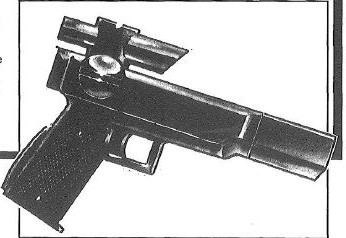
here’s a drawing of gun, to make sure you’re paying attention I guess
So onto the Skills themselves. There are over 90 listed here, many of which have sub-categories, so I’m not describing them all. Instead I’ll cover the Special Abilities, then give a summary for the type of skills in each stat.
Authority (Cops): This is your ability to intimidate others through your position as a cop. A measure of how dirty your Harry is, if you will. This is less about whether you can arrest someone or search an area, but whether you can stare down powerful individuals in a particular moment. You still need the proper warrant to do these things, so if someone wants to play a Cop I’d recommend discussing with the group what kind of game you want to run (and hope the Referee doesn’t make the game about literal rules-lawyering). Authority is applied to Cool.
Charismatic Leadership (Rockerboy): This is a Rocker’s ability to incite, charm, and control large groups of individuals through his or her performances. The effect works off of group emotions, so it needs a minimum size of 10 to be effective. The amount of people that can be affected is equal to the Rocker’s CL squared times two hundred. So for example, a Rocker with a CL of 6 can control a crowd of 7,200, while one with her skill maxed out can control 20,000 people. That may seem like a lot, but I did a quick google search and the attendance for Martin Luther King Jr’s “I Have a Dream” speech was 250,000. But even setting aside the numbers flub (pretty frequent in RPGs), being able to just control 20,000 people is the kind of ability that will either commandeer a campaign or be so tightly controlled that it feels like a waste of space. Especially when in comparing what skill ranks translate to, it says a Rocker with a CL of 9 has “the same mesmeric ability as an Adolf Hitler” (Hitlerwatch: 1). Charismatic Leadership is tied to Cool.
Combat Sense (Solo): Combat Sense is what sets the Solo apart from just being a guy with a gun. A Solo adds his Combat Sense to all initiative rolls and all Awareness/Notice checks. It is the best Special Ability.
Credibility (Media): Credibility is the Media’s ability to be believed, whether by viewers, the police, or other people in power. Most of the description focuses on getting both a lot of people and important people to believe your story, but there’s only part of one sentence that says this will also determine if anyone acts on it. But I think there’s a problem with this ability that goes beyond the pervasive cynicism that’s informing my reread. Despite copious amount of world building, it’s unclear what the average person in CP2020 knows about the world. Is Joe from Des Moines just unaware that things are bad when there are themed cyber-gangs fighting corporate armies nightly and regular internet services are constantly interrupted by cyberhackers? Whether they’re comically oblivious to how bad things are, or they do know things are shit and just don’t care, it feels like it’s going to take more than a square faced anchor giving a 20 minute report to snap them out of it. Especially when the skill says that Credibility can also be used to push total B.S. (at level 9 you can convince a world leader that aliens are influencing her peers). Credibility is governed by Int. Hopefully that’s the last I rant on Media, because even I’m getting tired of it.
Family (Nomad): This is the ability of a Nomad to call on the resources of the family she travels with. This can be guns, information, and even direct help in fights. It’s a combination of getting resources and leading NPCs. Has the potential to be potent, as anyone that has used the Leadership feat in D&D 3.x to break the action economy can attest to. But there’s no rules for determining what resources a Nomad tribe has, how big is it, etc. Without these tools, it’s up to the Referee to determine what the Nomad tribe has available, and any decision he makes has the risk of seeming arbitrary. Despite being about social relationships, Family is tied to the Intelligence Stat.
Interface (Netrunner): Interface is the ability that allows the Netrunner to mess around in the Tron-like internet of CP2020. Specifically, it allows them to use the Menu functions: locate Remote, Run Software, Control Remote, Downlink , Load, Create and Delete. I’ll cover what all that means when I get to the section on Netrunning. Other characters can connect to the internet, but only the Netrunner can perform the above tasks. This is an Int-based skill, but we have a note here saying that if a player is converting a Netrunner from first edition, they can swap Int and Ref. Which meant that Reflex used to govern this skill too, making it even more of a god stat.
Jury Rig (Techie): This special ability allows a Techie to temporarily repair or alter anything for 1d6 turns per rank. A turn is 3.2 seconds. After the time elapses, the jury rig will break down. So at max rank, a jury rig lasts on average just under 2 minutes. Whether or not this ability is any good greatly depends on what modifications can be made, but this skill gives no indication. Even the flavor text of the Techie role focuses on permanent constructions and modifications. On the other hand, the fumble rules ensure that a techie will have at regular opportunities to quickly patch things up if need be, at least in theory. The description actually doesn’t say what stat it keys off of, but I assume it’s Tech.
Medical Tech (Medtech): This skill is used for performing major surgery and medical repairs. The specific rules are covered in the section called Trauma Team later in the book, so at least this skill has mechanical benefits besides
 . We’ll see how much the Medical Tech skill actually matters when we get to that chapter (I actually have no memory either way, I wasn’t reading these books to play doctor).
. We’ll see how much the Medical Tech skill actually matters when we get to that chapter (I actually have no memory either way, I wasn’t reading these books to play doctor).Resources (Corporate): A Corporate’s Resource rank is is their ability to command a company’s assets. The higher the rank, the more you can request. Money, weapons, guards, vehicles, buildings - if it’s on the left side of the balance sheet, Resources will let you play around with it. This ability is tied to INT. While overall there’s no problem with Resources as a stuff-getting ability, it does have the issue that when trying to describe what the different ranks mean, it makes the low levels sound so trivial that it might as well not exist. Specifically, having a Resources of 2 translates to “might get you access to the company car”. This is a problem that comes up with a lot of skill, and it’s unhelpful if you’re trying to budget starting skills and having a small investment just seems worthless.
Streetdeal (Fixer): The Streetdeal skill gives the Fixer the ability to deal with the underground information network. This lets them not only find out where to get illicit items and uncover information others don’t want you learning, but also how to put information out onto the street, to let someone know that the Fixer has something they could benefit from. Streetdeal is based on Cool. Streetdeal seems to be in the sweet spot of what a Special Ability for a role ought to be, except there’s another skill that anyone can take called Streetwise that seems to do everything that Streetdeal does. It even has similar sounding examples of what ranks mean (Streetdeal 9: “You are the equivalent of a Mafia Crimelord” vs Streetwise 8: “You could become a major crimelord”). Streetwise is a Career Skill for Rockerboys and Media, but anyone can take it as a pickup skill. Unless the Referee narrows its scope, Streetwise basically makes Fixer’s a redundant role.
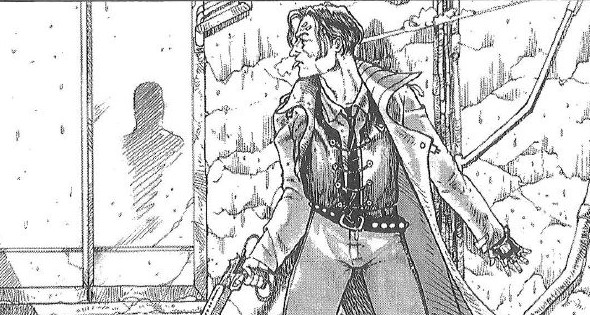
Since this is getting long, I’m going to break this up into two parts. Next time we’ll go over the general skills, how to improve skills, and reputation. Plus we’ll take the first steps in statting out Jamie.
2020/2020 Count: 2
Can’t wait to practice cyber-geology!
Original SA post
Part 4b: Can’t wait to practice cyber-geology!
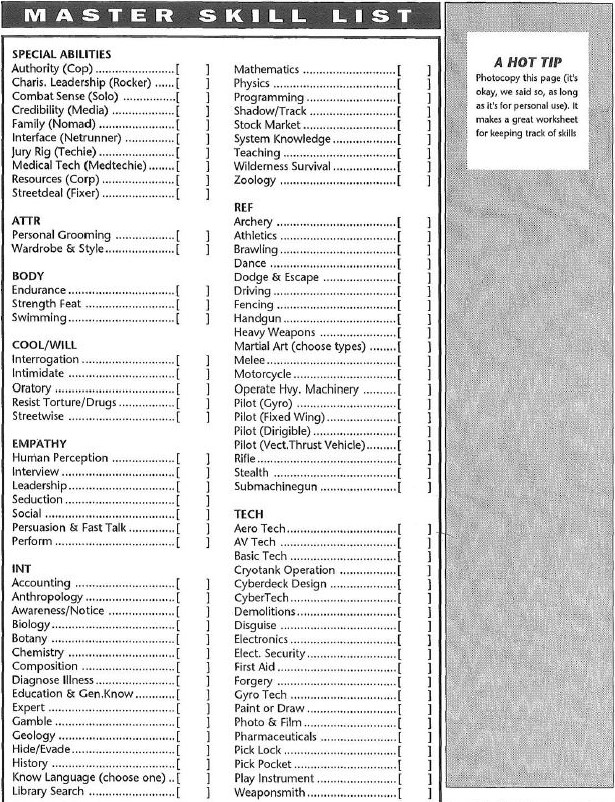
As mentioned earlier, every role has about ten skills that make up their career skills. Coming up with a custom role is just a matter of selecting a package of skills. CP2020 offers two examples of custom roles, but then muddies the water by giving one (Model/Actress) an undefined special ability called Pose. What does Pose do? Your guess is as good as mine! While there are some guidelines for making up new skills, I think creating new Special Abilities opens up a whole can of worms, especially when they range widely in utility. Along with their Special Ability, these are the career skills for each role:
Solo
- Awareness/Notice
- Handgun
- Brawling or Martial Arts
- Melee
- Weapons Tech
- Rifle
- Athletics
- Submachinegun
- Stealth
- Awareness/Notice
- Endurance
- Melee
- Rifle
- Drive
- Basic Tech
- Wilderness Survival
- Brawling
- Athletics
- Awareness/Notice
- Perform
- Wardrobe & Style
- Composition
- Brawling
- Play Instrument
- Streetwise
- Persuasion
- Seduction
Netrunner
- Awareness/Notice
- Basic Tech
- Education
- System Knowledge
- Cybertech
- Cyberdeck Design
- Composition
- Electronics
- Programming
- Awareness/Notice
- Human Perception
- Education
- Library Search
- Social
- Persuasion
- Stock Market
- Wardrobe & Style
- Personal Grooming
- Awareness/Notice
- Basic Tech
- Cybertech
- Teaching
- Education
- Electronics
- Any other three tech skills (Gyro, Aero, Weapons, Elect. Security)
- Awareness/Notice
- Basic Tech
- Diagnose
- Education
- Cryotank Operation
- Library Search
- Pharmaceuticals
- Zoology
- Human Perception
- Awareness/Notice
- Composition
- Education
- Persuasion
- Human Perception
- Social
- Streetwise
- Photo & Film
- Interview
- Awareness/Notice
- Handgun
- Human Perception
- Athletics
- Education
- Brawling
- Melee
- Interrogation
- Streetwise
- Awareness/Notice
- Forgery
- Handgun
- Brawling
- Melee
- Pick Lock
- Pick Pocket
- Intimidate
- Persuasion
Rather than try to write about the skills in any organized way, I’m going to do a stream of thought writing as I read through these. You might call it “Reviewpunk”
- There are two skills for Attractiveness, only one has a defined benefit...of increasing Attractiveness. It says that better attractiveness increases chance of persuasion, except the Persuasion skill on the next page doesn’t mention attractiveness at all. There is no reason for Attr to be a stat.
- There’s an Endurance skill, but only vaguest suggestions of when Endurance would need to be checked, and no indication of what occurs if you fail.
- A Rockerboy with an Oratory of 6 or higher gets a +1 to CL. This is the only skill that has this sort of synergy.
- Apparently Mike Wallace is an interrogator, while Barbara Walters is just an interviewer. Sure, whatever Mr. Journalism Undergrad

- The Leadership Skill uses Captain Kirk as an example of impossibly high leadership. Did someone forget what genre they were writing for?
- Seduction: “In certain cases, Referees may want to average this skill with a player’s Attractiveness to get a more realistic outcome.” Oh, fuck off!
- The Persuasion skill increases our Hitlerwatch to 2. For some reason I remembered it being higher.
- To find out the difference between Streetdeal and Streetwise, you have to go to the Anthropology skill! Streetwise is about knowing Street and gang customs...according to Anthropology. Funny that the Fixer doesn’t get it as a career skill then. What does Anthropology have to say about, y’know, Anthropology? “With Anthropology, you know that the customs of a N'Tanga tribesman require that a young man kill a lion in order to be accepted as an adult male.”

- Why the does the Netrunner have Composition as a career skill. It’s for writing “stories, articles, and songs”, it has nothing to do with what a Netrunner does in game or even day-to-day, unless creating a Timecube website is a part of every hacker story that I just wasn’t aware of.
- I love that there’s a separate skill for pretty much every school subject, and then there’s also a skill called “Education.” And then another skill for “Expert” for specialized fields. The most hilarious is Geology. Investing 8 skill points into this skill lets you...teach high school geology! But there’s also a separate skill for Teaching

- One thing I haven’t mentioned is that certain skill will have a number next to them, from (1) to (4). This is a multiplier for the Improvement Points needed to raise that skill indicating that it’s harder to learn (though this has no bearing at character creation). The first place this crops up is languages. Certain language groups are easier to learn than others. Take a guess which groups are easier. It’s Western European languages. Now to be fair, there is a 1 point reduction to the multiplier when learning languages from your native tongue's language group, but we’re still left with the fact that RAW it’s easier for a native Mandarin speaker to learn English than it is to learn Cantonese.
- Physics is the only skill that has a prerequisite, requiring a Mathematics of 4 or greater to learn. That is literally all we know about the skill
- Systems Knowledge gives you “basic knowledge of the geography of the Net,” to the point that at 9 or above “you know the entire Net like the back of your hand”

- It looks like there’s another skill that gives benefits to other skills: Zoology at 8 gives you a +1 to Wilderness Survival...specifically “any Wilderness Survival skills.” While there’s only one Wilderness Survival skill, at least one writer thought it was important to capture the differences between surviving in a desert, a jungle, a tundra, etc. That’s what this game is about, right?
- There are separate skills for Fencing and Melee. Fencing only applies to swords, while Melee works with all hand-to-hand weapons.

- There are seven different skills for operating vehicles.. In the one nod to sanity, all these skills say that having this skill at 3 makes you a competent driver or pilot. We’ll see why this is important later.
- At least one of the writers got tired of writing the same skill comparisons, which is why for all the gun skills the descriptions are “This lets you use such-and-such. See Handguns”. Shame he didn't say anything to the guy writing the "_____ Tech" skills.
- Play Instrument is a Technical Skill. Which is funny because the example the book gives for how skill checks work states that Johnny Silverhand’s Tech stat is only a 3.

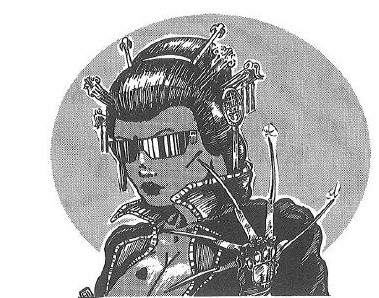
To improve skills or gain new ones, players earn Improvement Points (IP) points in the particular skill. It costs 10 points to learn a skill. Afterwards, the number of IP needed to raise a skill is equal to your current skill rank times 10, times any IP Multiplier for the skills that have them. There are three ways to earn IP. First is with Self-study and practice. This gets you 1 IP a day, but you can only increase your skill rank to 2. The second method is to find a teacher or sensei. This will net you 1 to 5 IPs a session, up to the average of the teacher’s rank in Teaching and the skill you want to improve. Finally, you can get IP by using the skill in gameplay. Referees are told to reward IP based on a combination of doing well, “role-playing ability” and teamwork. A player can hypothetically earn up to nine IP, but the book suggests not awarding more than six IP per gaming session (doesn’t clarify whether that’s per skill used or overall).
Let’s take a closer look at Johnny Silverhand. The example starting skill list given says that he starts with the Play Instrument skill at 5. If we flip towards the back of the book, we get a sample adventure where Johnny is an NPC. This stat block has his Play Instrument skill now at 9. Assuming 6 IP points a session, it would take 59 sessions to improve his skill to that level. Even getting the maximum points every session would still take 39 sessions.
What I’m trying to get at is that character progression in CP2020 is fucked.
There’s one last item covered in this section, and that is Reputation. As you get shit done in the setting, your character gets a Reputation that ranges from 1 (known to those involved in the same incident) to 10 (known worldwide). This has two effects. First, whenever they encounter someone new, that NPC rolls a d10. If they roll equal or under the PC’s Reputation, they know the PCs exploits, and this can influence their initial impression (for better or worse). The second way Reputation comes into play is with Facedowns. If two combatants are about to fight, they first make a check of Cool + Reputation + 1d10. Whoever has the lower score can either back down or take all subsequent attacks at -3 until he or she defeats this opponent once. While it’s unclear how this would work on fights with more than two combatants, it’s nice to see there actually be support for at least one non-violent way of resolving conflicts.
It’s just that there’s no interaction between this mechanic and any of the skills we just went over. Contrary to what you might expect, having a high Authority or being skilled at Intimidate doesn’t actually impact your ability to, well, intimidate.
(There’s also some stuff about negative reputation for being cowardly, but come on, when are PCs ever going to be cautious)
And that’s it for skills. We’re almost ready to go out and raise hell in the dark future. All we need now is the gear. But before I cover that section, it’s time to finally compile Jamie story from the rolls we made in part 3, see what her strengths are, and narrow down the type of gun she’s got.
Next time: I’m probably going to copy a Canon Film by sheer coincidence
Cyborg Pirate
Original SA post
Interlude 1: Cyborg Pirate
(April, 198x)
 : Hey, Roger! It’s Alberto! Did I catch you at a bad time?
: Hey, Roger! It’s Alberto! Did I catch you at a bad time? : I always have time for a fellow filmmaker, Alberto. What can I do for you?
: I always have time for a fellow filmmaker, Alberto. What can I do for you? : My buddy Tito just dropped a script off with me, and I think it could be our breakout hit! How’d you like to be a part of something special?
: My buddy Tito just dropped a script off with me, and I think it could be our breakout hit! How’d you like to be a part of something special? : Well, I’m only producing 5 movies at the moment, I can certainly make room for the right project. Give me your pitch.
: Well, I’m only producing 5 movies at the moment, I can certainly make room for the right project. Give me your pitch. : It’s The Three Musketeers meets The Road Warrior...but on boats!
: It’s The Three Musketeers meets The Road Warrior...but on boats! : That sounds like an interesting combination, Alberto. Please continue.
: That sounds like an interesting combination, Alberto. Please continue. : The year is 2010, and the Caribbean has descended into chaos. Pirates are back, but with speedboats, machine guns and robot arms. We have three orphans in Santa Domingo join one of these pirate fleets, the Sea Wraiths, eventually becoming a ruthless team of raiders. But they then discover that the fleet they joined are part of a grand conspiracy to take over the Caribbean, and decide to make their own destiny!
: The year is 2010, and the Caribbean has descended into chaos. Pirates are back, but with speedboats, machine guns and robot arms. We have three orphans in Santa Domingo join one of these pirate fleets, the Sea Wraiths, eventually becoming a ruthless team of raiders. But they then discover that the fleet they joined are part of a grand conspiracy to take over the Caribbean, and decide to make their own destiny! : Why do they leave these pirates?
: Why do they leave these pirates? : No one likes being lied to! Kids these days are in to being rebellious and all.
: No one likes being lied to! Kids these days are in to being rebellious and all. : Why not stop the conspiracy?
: Why not stop the conspiracy? : That’s for the sequel.
: That’s for the sequel. : I see you are thinking ahead. As you were saying.
: I see you are thinking ahead. As you were saying.(Later in the conversation)
 : The third of our heroes is the girl, who at first seems shy and detached, but is the best gunner in the seven seas. She cares for no one except her friends and the old sea dog that taught her how to use a rifle. She has a big gun fight with the instructor at the climax.
: The third of our heroes is the girl, who at first seems shy and detached, but is the best gunner in the seven seas. She cares for no one except her friends and the old sea dog that taught her how to use a rifle. She has a big gun fight with the instructor at the climax. : I think I may have some contracts with Cameron Mitchell to use him for a weekend.
: I think I may have some contracts with Cameron Mitchell to use him for a weekend. : Perfect!
: Perfect! : So this woman,
: So this woman, : Her name is Jamie
: Her name is Jamie : Jamie...that doesn’t sound very Spanish.
: Jamie...that doesn’t sound very Spanish. : We can workshop it.
: We can workshop it. : True. But as I was saying, is Jamie going to be the love interest of one of of the previous two characters?
: True. But as I was saying, is Jamie going to be the love interest of one of of the previous two characters? : I was thinking something more tragic. After escaping the pirates in the end, a careless accident takes the life of Ramon. Marco blames Jamie and the two break up.
: I was thinking something more tragic. After escaping the pirates in the end, a careless accident takes the life of Ramon. Marco blames Jamie and the two break up. : I like it, an unexpected twist. Plus we can spend a little extra on Ramon’s actor without having to bring him back for a sequel.
: I like it, an unexpected twist. Plus we can spend a little extra on Ramon’s actor without having to bring him back for a sequel. : Oh and Jamie’s parents are actually the leaders of the Sea Wraiths.
: Oh and Jamie’s parents are actually the leaders of the Sea Wraiths. : Really? Does that come into play during the film?
: Really? Does that come into play during the film? : Not really. Again, make it a big reveal in the second film. We’ll be like Star Wars!
: Not really. Again, make it a big reveal in the second film. We’ll be like Star Wars! : I’m liking your gumption, Alberto.
: I’m liking your gumption, Alberto. : I take it I got you on board, friend?
: I take it I got you on board, friend? : Alberto, I’ve got an open weekend coming up in 2 weeks. How about I fly down to Rome with my lawyer and we hammer out the details.
: Alberto, I’ve got an open weekend coming up in 2 weeks. How about I fly down to Rome with my lawyer and we hammer out the details. : Magnifico! How much money do you think we need?
: Magnifico! How much money do you think we need? : I’d say we can get this boat sailing for just under 8 million USD.
: I’d say we can get this boat sailing for just under 8 million USD. : Roger, you are a miracle worker!
: Roger, you are a miracle worker!(4 months later)
 : Roger, I profusely apologize for the contract blow up
: Roger, I profusely apologize for the contract blow up : I appreciate it, but there’s no sense crying over spilled milk. We can just have Jamie’s stunt double take over the role.
: I appreciate it, but there’s no sense crying over spilled milk. We can just have Jamie’s stunt double take over the role. : So do we just leave unmentioned the sudden change in looks?
: So do we just leave unmentioned the sudden change in looks? : We can add a line about her getting a cyber disease the year before. The show must go on!
: We can add a line about her getting a cyber disease the year before. The show must go on!(1 year later)
 : I talked to our investors, and they’re on board for doing Cyborg Pirates 2. However, Marco’s actor got picked up for a Steven Spielberg production.
: I talked to our investors, and they’re on board for doing Cyborg Pirates 2. However, Marco’s actor got picked up for a Steven Spielberg production. : I guess the movie is about Jamie then. I’ll call Tito and see if he can do a rewrite.
: I guess the movie is about Jamie then. I’ll call Tito and see if he can do a rewrite. : Maybe we can make it about learning wrestling? I got a leftover contract from one of WWF wrestlers.
: Maybe we can make it about learning wrestling? I got a leftover contract from one of WWF wrestlers. : You mean like Andre?
: You mean like Andre? : More like one of the Bushwackers
: More like one of the Bushwackers : I’m sure he’ll do fine.
: I’m sure he’ll do fine.Name: Jamie “El Pistola”
Role: Solo
Ethnicity (native language): Hispanic (Spanish)
Stats (60 pts)
INT: 10, REF: 10, CL: 3, TECH: 6, LK: 3,
MA: 5, ATT: 3, EMP: 10( ), BOD(save): 10,
Run: 15, Leap: 3.75, Lift: 400, BTM: -4,
Career Skills (40):
-Combat Reflexes: 10
-Awareness/Notice: 6
-Handgun: 4
-Wrestling: 3
-Melee
-Weaponsmith:
-Rifle: 10
-Athletics
-Submachinegun
-Stealth: 7
Pick-up Skills (20)
-English: 6
-Streetwise: 3
-Swimming: 3
-Pilot (Boat): 4
-Demolitions: 4
Next Time: I'd buy that for a Eurobuck!
“someone who is good at the economy help me budget this. my family is dying” “spend less on assault rifles” “no”
Original SA post
Part 5: “someone who is good at the economy help me budget this. my family is dying” “spend less on assault rifles” “no”
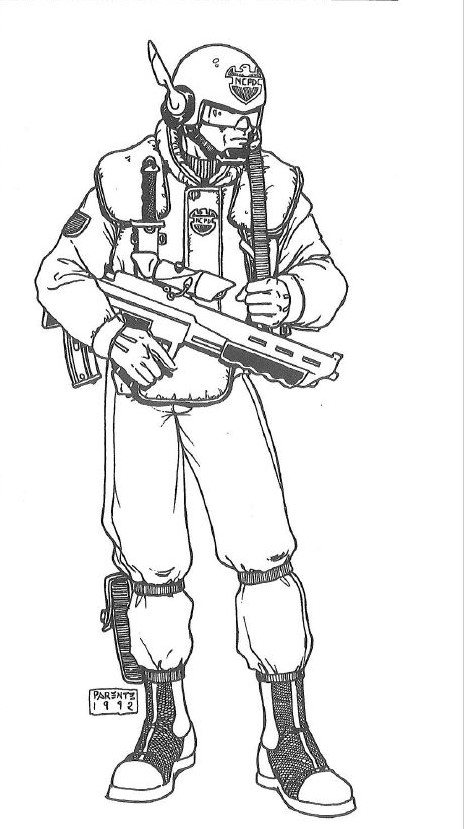
https://www.youtube.com/watch?v=LS7k3G_6IjE
Like so many RPGs from the late eighties and early nineties, CP2020 has a huge ass equipment section, and that’s before we get to the cyberwear. Not all of these are weapons, or even role-specific gear like cyberdecks and musical instruments. No, it’s important that we know how much lamps and movie rentals cost. There is a small mercy provided in that they list out a travel kit that every character ought to have (even the Corporate - you never know when you’ll get be stuck in an airport). But you’re still expected to buy every piece of this “outfit” and you get no prices up front for this stuff.
That said, the game knows what’s important, and the guns and other weapons are first. But before any of that we need to see how much money you have. (The currency, btw, is the Eurobuck (eb), which is used everywhere). As said earlier, your starting budget is determined by your Special Ability rank, and it’s a huge difference. Let’s take the Solo as an example. A Combat Sense of 5 or less leaves you with a budget of 2,000 a month. A Combat Sense of 7 gives you 4,500 a month. At 10, you get 12,000/month. And all the roles are like this, your starting funds basically double every two additional points past 5. The exception is the Nomad, because you get shit for starting funds compared to everyone else. Even at Family 10, the Nomad only gets 5,000/month.
You may have noticed that “per month”. That’s there because players also roll 1d6/3 to determine the number of months “you’ve currently been employed” and also act as a multiplier to your starting funds. So hypothetically the starting fund disparity can be even greater. With Jamie, I’ll be assuming she has 1 month to spend..
Lastly, we roll a 1d6. On a 5 or a 6, we just got unemployed. Which..okay trying to scrape by is a common plot point in this genre and one we can all relate to. The problem is that certain characters don’t really work without being part of an organization, while others seem weird as fuck with a regular job. A Fixer with 10 Streetdeal is making 10k a month, but any thought about this character should tell us that he’s not depending on a regular job to earn that cash. On the other side, what does Authority mean for an unemployed Cop? Sure becoming a P.I. and doing CyberNoir sounds fun, but the Special Ability doesn’t really support that.
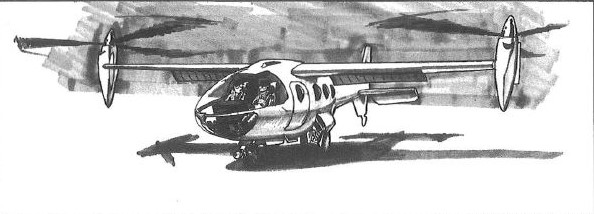
no, this isn’t available in this section
With money taken care of, let’s talk about the gear. CP2020 makes another nod to sanity by saying that in most cases encumbrance won’t matter, and rather than list out individual encumbrances it gives weight groups if the Referee really wants to track how much characters can carry.
Now for what we’ve all been waiting for...
Weapons
Weapons are broken up into basic categories to determine what skill is used for them. The categories are Handguns, Submachineguns, Shotguns, Rifles, Heavy Weapons, Melee, and Exotic. Shotguns use the Rifle skill, while exotics are actually an assortment of experimental weapons like lasers and stuff, and the skill for them varies from weapon to weapon. All weapons have the following stats:
- Accuracy: This gives a bonus or penalty to your skill roll. This can range from -3 to +3.
- Concealability: How easily a weapon can be hidden on a person. The ranges are P (pocket), J (Jacket), L (long coat), or N (can’t be hidden).
- Availability: How easily the weapon can be found. Values are E (excellent), C (common), P (poor), R (rare). Presumably, this value would determine the difficulty of acquiring these weapons using Streetdeal or Resources, but no guidelines are provided. There’s also nothing stopping us from buying the rarest weapons on character creation.
- Damage/Ammunition: How much damage a round does, and what type of ammo the gun uses. Different ammo types have different costs. Guns that use the same ammo tend to do the same damage, though there is some variation.
- Number of Shots: How much ammo is held in a standard clip
- Rate of Fire (ROF): How many shots a weapon can fire in a single round (3.2 seconds)
- Reliability: How reliable the weapon is. This matters any time you roll a fumble, especially with automatic weapons. The values are VR (very reliable), ST (standard reliability), and UR (unreliable)
- Range How far you shoot. Weapons in the same category tend to have the same range.
After this is explained, we get a big honking list of very similar weapons. 10 different handguns, 8 different submachine guns, 4 different rifles. Sometimes the only difference is a change in the reliability value and a different price. There are some weapons that are flat out better than another in every respect, even price. In short, it’s a 90s weapon list. (We only get two shotguns, and one is an auto-shotgun)
The Heavy and Exotic Weapons at have move variety. We get a 20mm cannon that doesn’t actually do more damage on average than the heavier assault rifles. The Missile Launcher and Rocket Powered Grenades at least have substantial spikes in damage. We get grenades and explosives, and a Flamethrower for the fans of The Exterminator starring Robert Ginty. For exotic weapons, we start with a microwave gun, which is the type of weapon that will crush everything the first session it’s used in, then become completely worthless because the PCs and Referee will always include the no-fail defense against it. There’s a laser rifle, which has special rules that prevent it from being a PCs main weapon but can at least be cool for a scene where you use it in a weapons lab or something. There are three ways of delivery drugs (needle gun, squirt gun, and paint gun), a ranged taser. And finally we have the stats for composite bows and crossbows, which I assume are here solely because Rambo used a bow and explosive arrow in one scene.
Along with ranged weapons, we also get melee weapons. We get street thug weapons for reenacting scenes from The Warriors (except one side has high powered rifles). And we also get a variety weapons for Ninjas, like nunchucks, “shiriken” (sic), and...Naginata? O-okay. And we also get futuristic melee weapons. Monoblades and Battlegloves. The Monoblade comes in knife and katana form. The Battleglove has some additional rules beyond doing more damage punching and crushing, but we’ll get to that later. Lastly we have a selection of “old guns” for the player who insists on using the exact weapon from his favorite action movie. Generally these guns have half the cost of comparable future weapons, but their ammo costs twice as much because they don’t use caseless ammo. The only standout of the old weapons is the Winchester M70, being the only gun in this book with a +3 accuracy.
The time has come to pick out Jamie’s gun. Unlike RIFTS where the Boom Gun more or less remains King Shit (as of ARB’s review of Worldbook 23), the power creep in damage dealing is very real in Cyberpunk 2.0.2.0. If I cover the supplements, I may give Jamie a reboot to show other ways of breaking the combat. Right now, we’re going to pick a weapon that’s not even on the main list, but was pulled from a Cyberpunk 1.0 sourcebook, Solo of Fortune. There’s a picture of this weapon, along with the stats to use it.

Jamie’s strategy in combat is simple: Headshots. The Sternmeyer has a +1 to accuracy, which will be important not just for negating the called shot penalty, but for taking full advantage of the auto-fire rules. Like all rifles, it can’t be concealed. It does 5d6 damage, which averages 17 to 18; not the highest damage for a rifle, but it’ll be enough for my purposes. The real kicker is the ammo capacity and ROF. It’s the highest ROF in the core book, It’s very reliable, so jamming is at a minimum. Finally, it has a range of 400 meters, like all rifles. This is important because base difficulty to hit is derived from the range of the weapon.
There aren’t really any rules for modding weapons in the core book with one exception. Making a gun a smartgun (ie usable with cyber enhancements and targeting scopes) costs twice it’s base cost. The benefit is that with cybernetic enhancements you can get up to +2 bonus to your hit roles (possibly +3 depending on how you interpret the rules). That brings the cost of the Sternmeyer to 2100 eb.
Guns need ammo, and we have different prices for all the different weapon sizes. Assault rifle rounds cost 40 eb for a box of 100. I don’t want regular rounds. I want AP. That will triple the cost of ammo. I buy 3 boxes of AP rounds (360) and 2 boxes of regular (80) so I don’t have to waste the good ones.
Armor
The next section is armor. Armor received a number of rules changes not just between editions, but between the first printing and the one that I’m reading right now. Not all of those are communicated here in the section where the characters are buying equipment. Instead, they’re found in the FNFF chapter. That said, the armor here has three stats that will help me make my purchase decision. The first stat is what parts of the character’s body the armor covers: head, torso, arms, and/or legs. Only one armor covers the entire body. The second stat is the armor’s Stopping Power (SP). SP reduces the damage of all hits. Finally, there’s Encumbrance Value (EV), which is a penalty to the character’s Reflex Stat. EV is cumulative for each piece of armor worn. Lastly, some pieces of armor have a checkmark next to their name, indicating that their SP is half against slashing weapons. We also get the benefit of AP ammo on the table of armor: all SP is halved versus AP damage.
I’ll get into all the details in the next couple of updates, but suffice it to say unless you are going for a specific campaign style or are trying to tackle a specific target, investing heavily in armor isn’t worth the penalties. That said, there’s still enough incidental and low tier damage in the game to necessitate some armor. For Jamie, I get the Light Armor Jacket (Torso/Arms, SP 14) and the Nylon Helmet (Head, SP 20). Neither of these have an EV penalty. Together, the two items cost 250eb.
Oh, the full body armor is called “MetalGear” and it’s trademarked. Most of the time I would never confuse this book with anything from Palladium, but on occasion...

Special Gear
So that takes care of weapons and armor, but there’s one more set of items that are important. One of the big themes of Cyberpunk and the dilemmas characters must face is how much of their humanity they’re willing to sacrifice to get a desperately needed edge in combat.
These next three items allow you to do a complete run-around this dilemma.
We mentioned the Battleglove in the weapon sections, but it’s more than just a souped up brass knuckle. It has pretty much the same functionality of a Cyberarm except cheaper (900 vs 2000 eb), has 3 slots instead of 4, and can’t get the Hydraulic Ram option. However, the Artificial Shoulder Mount is technically a cyberlimb option, so can you just slap on an extra set of arms without even needing surgery or

Then there’s Smartgoggles, which are again cheaper than getting a Cyberoptic (200 vs 500 eb). You can have 4 options (same as one cyberoptic) with no limitations, and options only cost 90% of their cyber equivalent. The only drawback is you can’t double-up on Smartgoggles, although you are free to switch between pairs. You can even use the targeting scope. Jamie is going to get Smartgoggles with Targeting Scope (+1 to hit with Smartguns), image enhancer (+1 to visual awareness checks), Tele-optics, and Low-Lite. The total package costs 1145 eb)
The only option with any sense of a trade off are the Linear Frames, which give improved Body Stat and Deadlift multipliers (x50 as opposed to x40). Riding one like the AliensPower Loader instead of grafting yourself into one gives a -2 Reflex as opposed to -1. But Linear Frames are so specialized and so expensive anyway that it basically makes no sense to permanently graft yourself to one. Once again, having a Frame you can just link to rather than attaching yourself to it is cheaper. And none of these options have any associated surgery costs. The book does say all these items can be stolen, a dubious balancing mechanic at best.
Bullshit
So with weapons, armor, and special gear talked about, it’s on to the cybernetics, right?
Wrong!
What follows is a list of every item a character might conceivably use in the course of the game. This ranges from stuff that’s important to certain characters, like tools for Techies and musical instruments for Rockerboys. These are given the same amount of space as items like wood furniture take-out food. While pretty much every 80s/early 90s RPG was like this, I feel like this goes even further. My only guess was that the only way R.Talsorian thought the only way to simulate the economic pressures and disparities within the Cyperpunk genre was to have players keep track of every single expense like this was a Home Economics class. My first impulse was to just ignore this section entirely, but in the end I decided there were two things Jamie needed no matter how much of a literal murderhobo I wanted to turn her into. First was a cellphone which costs 400 eb (:rofl:) along with service plan that’ll cost 100 eb/month. That’s not a smart phone, by the way. It’s just a phone you can carry with you. The other thing that I bought is a Trauma Team account for 500 eb/month. Trauma Team is one of the conceits of the setting to somewhat blunt the lethality of fights. If the PCs win a gunfight but one of them got heavily shot up, in theory a Trauma Tea evac can keep that player from bleeding out on the way to the drop point or something. That’s 1000 eb dropped on “other”. I otherwise would have spent that money on a backup gun (probably the Auto-shotgun). Right now, Jamie’s backup is going to be whatever was carried by the first person she kills.
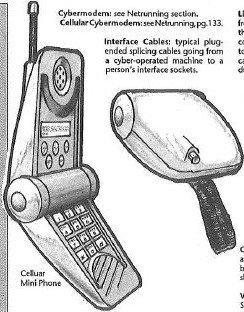
phones you can put in your pocket. IT MUST BE THE FUTURE!
Between her gun, ammo, armor, special gear, and other crap, Jamie has spent 4,935 eb of her starting funds. But Cybernetics has its own chapter and rules for it. Jamie’s got her gun, but now it’s time she got wired.
Next Time: I asked for this
Dehumanize Yourself and Face to Cyber-Viagra
Original SA post
Part 6: Dehumanize Yourself and Face to Cyber-Viagra
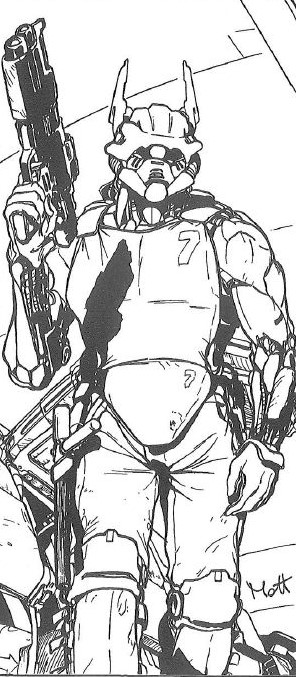
https://www.youtube.com/watch?v=Kb1_38445vA
As you might imagine in a game called Cyberpunk, using cybernetics is a major part of this game. Cyberpunk 2.0.2.0. does has plenty of cyberware in just the core book, and more is added with each supplement. But as I’ve hinted at earlier, there are special costs to cyberware aside from Eurobucks. While these costs aren’t going to stop PCs from using cybernetics, it’s going to make them very careful about what cybernetics they do get.
Before starting with the bad stuff, the game has a quick intro to what cybernetics can do in general because...well it’d be weird to open the chapter on Cybernetics with “THIS STUFF WILL DRIVE YOU INSANE DON’T USE IT!”, and gives the advice that if you don’t have the cash for everything you want at the start, it probably won’t take many play sessions to get that cash. With the high note opening out of the way, it’s time to talk about Cyberpsychosis.
As a person slaps on more and more metal and silicon into their body, they begin to become detached from everyone else. If they keep adding cybernetics, this detachment transforms into irritation, and then unending murderous rage. This mental affliction is called Cyberpsychosis, and the danger it represents will dictate how much cybernetics you can have on your character (except-well, we’ll get to that soon). When you first create your character, you take their EMP and multiply it by 10. This is your starting Humanity. Every time the character has a piece of cyberware installed, they subtract it’s Humanity Cost. For minor items the cost will be .5, 1, or 2, but for any big ticket item you have to roll to determine the cost - that’s because every brain is different and will react to some enhancements worse than others. For every 10 points of Humanity lost, the character’s EMP is reduced by 1.
When a character’s EMP drops to 3, the symptoms of Cyberpsychosis first start to become apparent. These symptoms get progressively worse as EMP falls until the character hits 0. At that point the referee takes over the character, who is now, well, a cyberpsycho. While there are variations on the cyberpsycho such as split personalities, compulsive lying, and other mental maladies that seem to have fallen off of the Palladium insanity table, the usual behavior of the cyberpsycho is to kill anyone and everyone its souped up body can reach.

I still can’t figure out what the hell she’s pressing against her cheek
Cyberpsychosis is pretty well understood in-setting. It’s known that some cyberware have harsher effects on the psyche than others, and that the damage of most enhancements can’t be fully predicted before installation. There’s even a rating system for every piece of cyberware that corresponds to the Humanity Loss. Police forces have formed units of heavily armed specialists trained to deal with Cyperpsychos called Pyscho Squads (also known as C-SWAT). Most members of Pyscho Squads are actually Solos, since making an arrest is usually out of the question.
Depending on the jurisdiction, some Psycho Squads will also practice preventative safety measures by keeping an eye on who’s loading up on cybernetics and presenting anyone getting too chrome-happy with a choice: keep on trucking and “risk an accident” from “a concerned citizen”, or get registered. With Registration, you get a monitor installed in your bits, and the Psycho Squad will generally let you go about your business They may install a remote bomb, but it depends on the department (ie how big of a dick the Referee wants to be). Oh, and you agree to see a cyberpsychologist, which will regain you 2 HC per week until your original EMP is restored.
That sound you heard is the game’s tone shifting just a little bit before it rockets past Neo-Mega Jupiter.
That’s right, you can gain Humanity back, meaning with enough time the sky’s the limit. What’s worse is that the rules aren’t all that well written. There seems to be two rates of recovery, one where you leave the cyberare in, which is at 2 HC, and one where it’s removed (usually when the Psycho Squad makes a capture, for whatever reason), which puts recovery at 2 EMP a week. Except the example they give mixes Humanity Cost and Empathy, so
 How much it costs to do on one’s own, or what a character would have to roll to do it themselves is left undefined.
How much it costs to do on one’s own, or what a character would have to roll to do it themselves is left undefined.I have mixed feelings about the therapy rules. I actually like the Humanity trade off, even if I think it needs improvements (like giving everyone the same starting Humanity, reducing the random element and maybe having some consequences for skirting the edge of zeroing out). While I’ve heard complaints about Cyberpunk not letting you have Cyberware, you’ll generally have enough Humanity Points to get the items you want (Jamie could have an EMP of 4 and I wouldn’t risk going psycho from the starting cybernetics I’m buying). With therapy on the table, that trade off no longer has to be made. And it’s not implemented in a great way either. 2 HC back a week will trivialize incremental upgrades, but will be pretty slow for anyone who wants to make a bunch of replacements at once.
On the other hand, just talking about this makes me want to run a campaign where the players are managing an independent cyberpsychology clinic.
Aside from slowly destroying your psyche, there’s another cost associated with getting cyberware, and that’s surgery. While some cybernetics can be added in mall clinics (particularly nanotech or upgrades to major systems), a lot of cyberware requires a visit to a med center or hospital. In addition to their monetary and humanity cost, each piece of cyberware has a surgical code listed that tells you how hard it is to install. The more intensive the surgery, the higher the cost, the more damage the character takes, the longer the procedure takes, and the higher the skill of the surgeon has to be. Surgery cost tops out at 2,500 euro. Back when I played CP2020, we ignored surgery costs when making characters. While there’s nothing in this book that says that you ignore these prices at character creation, I was curious enough that I took a look through the first of CP2020’s gear supplements (the Chromebooks) because I didn’t remember any of those items having surgical codes. It turns out I was right. And several pieces of cyberware were different enough that the Referee couldn’t just compare it to something similar in the main book. So if R.Talsorian don’t give a shit about surgery, neither will I!
(For completion purposes, I will point out what the surgery costs would be for the items I’m getting, along with what I’d cut if I had to include surgery costs).
Not all cyberware is available on the open market. Blackmarket Cyberware includes weapons and, well that’s it honestly. Getting implanted weapons requires visiting an underground MedTech, otherwise called a Ripperdoc (this doesn’t stop Cyberweapons from being advertised in the ostensibly in-universe Chromebook, but it’s the dark future so w/e). Ripperdocs are important to the setting (they basically explain where the gangs get all their cybernetics from), but the restrictions on Cyberweapons carries less emphasis in favor of going straight to putting chainsaws on your arm.
We get a 4 page table that gives the important info on each piece of cyberware, followed by a longer descriptions that’re mostly
 about how they work. For some items the longer descriptions are needed because they provide several benefits, but most of the time they’re not. The first category is Fashionware: morphing tattoos, changeable hair color, skin patterns, stuff that doesn’t provide any game benefit (save biomonitor, which gives +2 to Resist Torture/Drugs) meant to be colorful and highlight that this is meant to be a style conscious game. Only these minor items also have a Humanity Cost. Nothing big, but the fact that they have any guarantees players will ignore them unless they’re regularly going to the cybershrink (and if that’s the case then getting players to buy Techhair is going to be the least of your worries).
about how they work. For some items the longer descriptions are needed because they provide several benefits, but most of the time they’re not. The first category is Fashionware: morphing tattoos, changeable hair color, skin patterns, stuff that doesn’t provide any game benefit (save biomonitor, which gives +2 to Resist Torture/Drugs) meant to be colorful and highlight that this is meant to be a style conscious game. Only these minor items also have a Humanity Cost. Nothing big, but the fact that they have any guarantees players will ignore them unless they’re regularly going to the cybershrink (and if that’s the case then getting players to buy Techhair is going to be the least of your worries).The next category is Neuralware, and this contains items that everyone has to buy to even use Cyberware. The Neural Processor has no benefit except it lets you use Cyberware. It costs 1000 eb (plus 500 in surgery) and 1d6 HC. It’s a boring character tax. Of bigger interest to Jamie is Boosterware. Boosterware provides a bonus to your initiative. This is a nerf from the 1st edition, where it increased Reflexes. Even in its current form this is a must-have for any combat character. There are two versions, and the game explicitly state that you can’t get both versions. The Kerenzikov Booster provides +1 to +2 all the time, and costs 1d6 Humanity per bonus (the high cost is from seeing the world in slow motion). The Sandevistan Speedware is flipped on as needed, providing +3 to initiative for 5 turns, after which it has to rest for 2 turns. This only has 1d6/2 HC since it’s not on all the time. Jamie is getting the Speedware (combat is not going to last more than 5 turns), which costs 1500 eb (no surgery cost).
Jamie is also going to get a pair of Interface Plugs. This is another gatekeeper that just lets you buy Chipware Socket and Neural links. The wording is a little weird, but the best I can interpret is that one pair can connect to two items that require the Plugs. Interface Plugs cost 200 eb (and 500 eb surgery), 1d6 HC. The Interface Plugs will be connected to a Smartgun Link (100eb/ 2HC, +1 to weapon skill for linked gun) and a Chipware Socket (200eb/ 1d6/2HC). The Chipware Socket alleviates some of the problems caused by CP2020’s skill bloat, because you can just slot in the skills you need (up to your INT score). There’s a big price list that gives the cost of different skills per point, and these chips go up to +3. The flavour text does a lot of poo-pooing of relying on chips, but because there are so many goddamn skills, and skill advancement is so slow, players are going to need these to fill out skills they only need some points in. Also, there’s no HC from using skill chips, and it’s something NPCs can just loan if a character is missing a critical skill for a mission. Jamie buys one skill chip, Weaponsmith +2 (400eb) so she can unjam her gun,
Besides the smartgun link, the only other Neural Links of note are the Vehicle Link (boosts vehicle skill), and the Cybermodem Link, which is what the Netrunner uses to do his Cyberhacking. The only other item here is the Pain Editor, which seems like it’d be useful to have in combat. Only its benefits are to make Endurance checks easier, and Endurance has nothing to do with combat. That seems like an oversight.
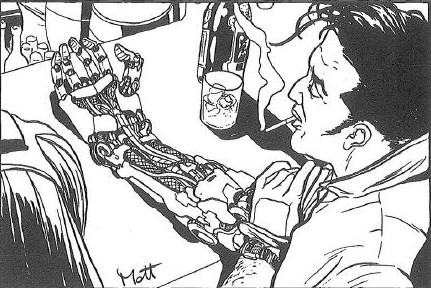
The next category is implants, which has a number of miscellaneous cyberware with situational usefulness. The only one that’s really notable is this is where we find Mr.StudTM Sexual Implant (or Midnight Lady for vagina-havers), which gives a +1 to seduction checks. But this cyberware also has a 2d6 HC, which means there’s a greater than 16% chance that the bonus from Mr.Stud is wiped out by the EMP penalty you take from getting it installed.

After Implants we get the category where you get the most bang for your Eurobuck: Bioware, aka Nanomachines son. Jamie is going to be buying a couple of items from this category. The first one is Skinweave. It costs 2000 eb and 2d6 HC, and gives her 12 SP to her entire body. The other item she gets (and the one I’d have left off if I counted surgery costs) is the Muscle and Bone Lace, (1500 eb/ 1d6/2 HC) which increases her Body Stat by 2, putting it at 12. This increase also boosts her BTM to -5.
Aside from those two items, there’s grafted muscles, which can be combined with Muscle/Bone Lace but have a higher HC (turning into a Rob Liefeld character would shatter anyone’s mind). There are items that improve healing times, though not enough to circumvent hospital downtime. Finally, Toxin Binders provide a +4 bonus to poison saves, which is a big bonus if situational-if the Referee uses poisons once then expect every player to get this ASAP.
Next we have Cyberweapons, which have pretty hefty HC costs. Cyberweapons use the Melee skill. You have various grades of claws on hand, from hardened nails to Wolverine Cosplay. There’s also hardened knuckles and a mono-filament wire. All these items (except the hardened nails) are black market only. The one interesting item is the Cybersnake. While it doesn’t do a lot of damage, it can attack independently. It’s either implanted in the shoulder or “any body orifice 1” or larger”
 .
.The next few categories of cyberware - optics, audio, arms and legs - are modular. You install a base module and then add 4 to 6 options. A cybereye costs 500eb/2d6 HC each, and you can have 4 options per eye. As I said in the previous chapter, there’s no point to these when you can get Smartgoggles, unless you can convince the Referee that if you get the Targeting Scope in both eyes it gives you a +2 to your weapon skill. CyberAudio is 500eb/2d6, and has room for 6 options. Nothing really sexy unless you want to be able to hear everything.
Unlike the eyes and ears, cyberarms and cyberlegs have some base benefits even before adding modules. They can crush/kick for 2d6 damage, punch for 1d6. They can take 20 points of damage before being disabled, and 30 points before being destroyed. Damage to cyberlimbs is seperate from the wound your normal wound track, and you don’t have to worry about shock saving throws or wound penalties. Cyberlimbs are pricey (3000 for arms and 2000 for legs), and while their HC is not super high, their options have significant HC as well. Cyberlimbs can have up to 4 options, with one option for the hand or foot (if none is taken, you have a normal hand). The most outlandish option is getting artificial shoulders, which let you add additional arms to your body (as you can imagine, the HC cost is pretty steep). Beyond that, the options are pretty standard - upgrades to hit harder, take more hits, cyberarm versions of all the weapons, pop-up whatever. And yes, there is the spike from Robocop.
There are two more categories. First are Linear Frames, which I talked about last chapters. These are Power Loaders/Exoskeletons, and give you better base strength, high melee damage modifiers, and improved lifting capacity at a cost of -1 REF. Finally there’s body plating, for armoring your torso and head. These have an SP of 25, a number we’ll be focusing on when we go through combat. There is the option for a front optic mount, that lets you mount 5 cybereyes (sold seperately).
(And if you can stack targeting scope for each eye...
 )
)Jamie spent 7000 eb on cybernetics. The HC she incurred is 5d6+1d6/2+2. I do some rolling and she take a total Humanity Loss of 19.5 (unlike other rolls, you don’t round HC), just keeping my EMP at 9. In exchange for slightly (but noticeably) damaging her ability to connect to other humans, she now has +3 to initiative on demand (bringing it to +23 total), +1 to hit with her gun (a total of +23), 12 SP all the time for her entire body and +2 BOD (for a total of 12, which translates to -5 BTM). Between the Cyberware and the rest of my gear, I spent almost all of my starting money. However, I’m pretty confident in Jamie’s ability to earn money out the gate.
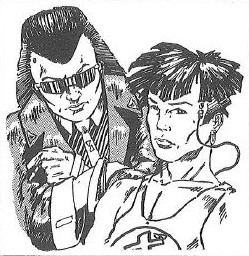
But let’s say I was feeling impatient. 12,000 only got me a few cybernetics. Even a budget of 24,000 would only let me spurg on a couple of big ticket items. To get even more money, you have to sell out. Your going to destroy your soul anyways, why not sell it off? So you have the option of joining up with a government black ops, a major crime family, or a megacorporation, and they outfit you with an extra 10,000 in cybernetics. In exchange, you have to do whatever they want you to do, and they’ve got enough hooks in you to make you miserable if you don’t want to cooperate.
The big issue I have here is that this is presented as an individual character creation option, rather than as a model for the campaign. Giving someone an extra 10K to buy stuff with is going to heavily shift the tone of the game, especially when it comes with the expectation that the player is going to work for his or her benefactor. As a result, the campaign is either going to be everyone working for this organization, or slowly and excruciatingly pulling that character that took this option out from under the military/mafia/corporate boot. There’s a good chance the rest of the players won’t appreciate this.
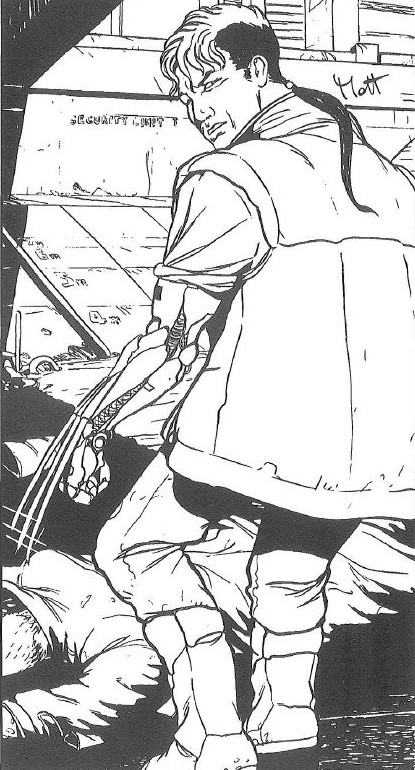
yeah, I’m not feeling this reboot
With Cybernetics out of the way, we’ve finished character creation for Jamie. Now it’s time to see how all her stats, skills, weapons, andy cyberware come together. But that will have to wait for the next update.
Next Time: IT’S FRIDAY! FRIDAY! GOTTA GET DOWN ON FRIDAY!
Miami Connection 2000
Original SA post
Interlude 2: Miami Connection 2000
Before we get to combat, it occured to me while reading the AdEva review (shout out to Night10194) that to really demonstrate how much Jamie breaks the game over her knees, she needs a couterpart, someone whose hypothetical player takes the game’s fluff and advice at face value without examining how the rules fit together. Specifically, I want to explore this idea that the Rockerboy is supposed to be a combat character. So let’s introduce player 2, Jessie. Jessie latches onto the description of the Rockerboy, loving the idea of trying to save the dark future with Rock-n-Roll. But she then sees in the stat descriptions that they’re also a combat character according to the stat section. Jessie instantly thinks of her favorite B-move, Miami Connection and decides to make Y.K. Kim’s character in Cyberpunk 2020. Jessie goes with the name “Kimmy Chi”, since that sounded rock-star ish.
Jessie has to backtrack a bit on stats when she notices that playing the guitar is governed by Tech, but she eventually settles on this spread (60 points, same as Jamie):
-
INT 6 REF 8 CL 8
TECH 7 ATTR 5 LK 4
MA 5 (RUN 15 LEAP 3) EMP 9/ BOD 8 (BTM -3)
Jessie then rolls on the life path, and comes up with a good set of numbers that matches up with the story she has in mind.
-
7-Cammos
8-Neat, short hair
0-Fingerless Gloves
6-Chinese/SE Asian (Taiwanese)
6-Gang Family
8-5 Never met parents
1-2 Lost everything through bad management
0-grew up on Corporate Farm/Research Facility
0-No siblings
3-Arrogant
3-Lover
7-Love
3-Like almost everyone
2-A tool
19 years old
7-5-5-3 Lover Kidnapped, still love each other
3-6-4-2 Financial Windfall
9 Nothing
A poor ganger whose leader apparently signed the wrong sponsorship deal, with most of his childhood being nothing more than a controlled experiment. Kim eventually escapes, but his first love (maybe one of the research team?) is left behind. Despite the harsh upbringing, Kim has a heart of gold, and believes with the right message he can save his lost love.
Jessie uses the example Career Skill list in section four (as it's also a Rockerboy) for her own character-what’s good enough for one of the game’s iconic characters will work for Kim, right?. While she wants to follow the advice against just maxing out her special ability, she does see that even a slight increase makes a huge increase in starting funds. Eventually she compromises, and makes adjustments to the skill package. It’s also at this point that she realizes that for being advertised as a combat class, Rockerboy only has one combat skill! She’s also disappointed that it’s not in martial arts, and wonders why even have Brawling when any MA seems better. However, she assumes there must be something she missed and leaves a single point in it (as the game recommends with career skills).
-
CL 8
Notice 3
Perform 6
Style 3
Composition 4
Brawling 1
Play Instrument 6
Streetwise 3
Persuasion 5
Seduction 1
While flipping through the book, Jessie notices the large amount of space given to guns. As much as she wants to stay true to her character concept, she realizes she doesn’t have enough Pick Up Skill points to invest in both some form of ranged weapon and a martial art. She does leave two points in, figuring she can increase it later. This is just how Kim starts out, after all, no need for anything to be that high.
-
Speak English 4
Education 1
Thai Kick-Boxing 2
Drive 1
Submachinegun 6
With a CL of 8, Kim starts with 5000 eb. Jessie is unsure what to get for Kim’s weapon, but eventually takes her cue from the stat block for Johnny Silverhand in the adventure, after the Ref says that he doesn’t plan on running it. Jessie can’t find anything called an “Arasaka Rapid Assault” but does find the H&K MP-11 (0 accuracy mod, 4d6+1, 30 rounds and 20 ROF, 200m). She buys that and some ammo. She buys a light armored jacket, but spends a little extra to make it an urban fashion jacket. Got to look good, after all! Kim also gets a guitar, a cell phone. Jessie is unable to find any info on the “portable sound studio” mentioned in the role’s description, but the referee tells her not to worry about it.
At this point, Jessie has 3,174 eb left for Kim. She wants to get the smartlink bonus for Kim’s SMG. So that will be 1000 for the neural processor, 200 for the interface plugs, 100 for the smart gun link...and then Jessie sees that in order to use the smartgun link, she has to get a smartgun mod for the H&K MP-11, which costs another 1400. That puts Kim’s expenses related to cybernetics at 2700, more than half his starting budget, just to get a +1 to hit. Kim can barely afford a chip socket at this point. Even the Smartgoggles with just the Targeting Scope is out of reach. At this point, Jessie says “fuck it, let’s just go for defense”. She trades the urban fashion light armor jacket for an urban fashion suit of Metalgear. Jessie figures that if Kim can’t do awesome martial arts tricks in his acts, he can go dressed as a neo-urban samurai. Besides, the 25 SP looks pretty impressive. Kim also eschews cybernetics altogether. The only thing that Kim could get after the Neural Processor/Interface Plug tax is a chipware socket, and the game’s flavor text talks down to chip skills so much it doesn’t seem worth it (especially when you factor in the Humanity Cost). Instead, Jessie uses the money to buy a city car. Need some way of getting around right?
And that’s Kimmy Chi. I did my best to make this guy seem reasonable, but starting from a premise of “Rockerboys are combatants!” was going to produce a pretty
 result. It also shows how much you get punished for not min-maxxing before you even start play. Had Kim started with a CL of 10, he’d have as much starting money as Jamie. On the other hand, if Jessie had stuck to the example build in section 4, Kim’s starting funds would be 1500 eb - enough for a decent weapon, light armor, and that's it. But also, I figured Kimmy would be a good opportunity to test some of the presumptions the flavor text makes. I have no idea how this is going to turn out.
result. It also shows how much you get punished for not min-maxxing before you even start play. Had Kim started with a CL of 10, he’d have as much starting money as Jamie. On the other hand, if Jessie had stuck to the example build in section 4, Kim’s starting funds would be 1500 eb - enough for a decent weapon, light armor, and that's it. But also, I figured Kimmy would be a good opportunity to test some of the presumptions the flavor text makes. I have no idea how this is going to turn out.Next time: Hawaiian Shirt Day on the urban battlefield!
Realistic gun rules for this game about robomen
Original SA post
Part 7a: Realistic gun rules for this game about robomen
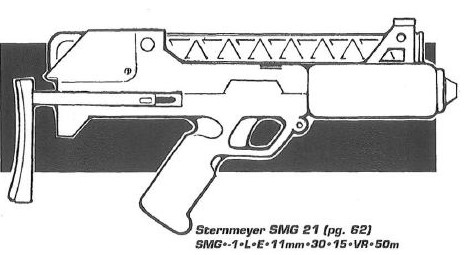
https://www.youtube.com/watch?v=HLIDEVrJoiI
Cyberpunk 2.0.2.0. uses the Friday Night Firefight rule system, which first appeared in the first edition of Cyberpunk. While FNFF has been covered by in FATAL & Friends by hectorgrey (link), reading his review and comparing them to the rules here tells me there are enough differences that I need to go over them myself.
The section opens with a bunch of statistics about firefights, with the main takeaway being “lots of missing, and whoever is hit first is done.” It’s the same intro in hectorgrey’s review. But then, there’s a step back from this appeal to realism.
Cyberpunk 2.0.2.0. posted:
On the other hand, this is Cyberpunk, right? So why are we telling you all this if we don’t intend for you to go in there with guns blazing? If a large caliber handgun is truly something to be respected, who wants to lose character after character until they get the point?
Here’s where we get interfaced, gangboys. We’ve made this edition of FNFF simpler, faster and more direct, so you can concentrate on how to fight; how to win every encounter (you’ll only get to lose once). We’re going to give you all the tips we’ve learned over hundreds of our own encounters, plus hot tips from cops, combat grunts, SWATmasters and other veterans who’ve put in on the line for real.
It’s true - a firefight is dangerous. But you can handle it. That’s why you’re Cyberpunk.
In other words, we have a system at cross-purposes. On the one hand there’s the original desire for gritty, messy realism for the purposes of encouraging “thoughtful play”, but on the other hand there’s the realization that such a system is at odds with the tone the rest of the book is setting. While there's a chance the end result satisfies both design goals, the odds are not good.
Aside from the mixed up mission statement, the other issue with FNFF is that it’s a tactical combat system without any defined grids. While it’s not that such a system can’t work, it’s hard to plan out encounters and take advantage of bonuses when distance between PCs and enemies is nebulous. It ultimately comes down to whether the referee thinks what you are doing is plausible, but if that’s the case then why have such a granular combat system?
The first thing FNFF presents is how long a turn is (about 3 seconds) and how initiative is determined. Each round, Players and the Referee roll 1d10 and add REF, Combat Sense (for Solos) and any added modifiers (mainly from cyberware). The highest number goes first. Either Players or the Referee can roll as a group to speed things up. Combatants also have the option to snap draw, getting a +3 to initiative in exchange for a -3 to hit.
Each turn, a character can take one action without penalty, every subsequent action is taken at a -3 penalty (it’s unclear what this means for actions that have no skill check). Actions include making an attack moving (up to RUN in meters), dodging and parrying (melee only), escaping holds or traps, aiming, reloading or changing weapons, getting into or out of vehicles, making repairs or giving first aid, or performing a quick non-combat task. Trying to use two weapons at once incurs a -3 penalty to both attacks.
We get special rules for setting ambushes. If a character can pull it off, they get +5 to their first attack. All you need to know is that it’s really difficult to ambush Solos, because they add their Combat Sense to all Notice checks
(In the middle of this, we get a quick reference sheet for important rules for combat and common modifiers, and a table for the various Martial Arts bonuses to different moves. The most important modifier that’s not mentioned later is making a called shot to a body part: -4.)
Armor
The game puts the rules for armor and damage before the rules for how to hit targets. Which isn’t how I would organize things, but okay. When a character takes a hit, assuming it wasn’t a called shot, they first roll where the attack landed. Each character has six locations to be hit - head (1), torso (2-4), right (5) and left (6) arm, right (7-8) and left (9-0) leg. If a body section is behind cover, then you re-roll if that section comes up. That last rule will cause problems later, but let’s move on. As indicated in the equipment section, every segment can have its own Stopping Power (SP). SP reduces the damage taken from each hit.
Armor has a lot of restrictions meant to prevent players from just putting layers of armor on themselves until they’re an invincible Michelin Man of armor. Some of these rules were new to this printing. The first drawback is EV, which I explained in section 5. Also, there are limits to how much armor you can wear. You can have only 3 layers over a segment, and only one of those layers can be “Hard”. Just having a layer adds 1 to EV, while having three layers increases the penalty to 3. The exception to this is skinweave armor, which counts as a layer but receives no penalty. Third, there’s diminishing returns with layering armor, so rather than just adding the two SP values together, you have to compare the difference in the SP to a table that gives a bonus SP to the higher SP value. So the most you can get from wearing layers is +5 over the heaviest single piece you are wearing
The main way to get around armor is with armor-piercing bullets and edged weapons. AP rounds treat armor at only half it’s SP value, but any damage that penetrates only does 1/2 damage. Edged weapons treat soft armor at 1/2 SP, but do full damage.
Aside from personal armor, the most effective way of getting SP is taking cover. Cover can provide SP well in excess of anything achievable with the armor in this book. That’s why the earlier ruling of “if the body section is behind cover, then re-roll where the hit landed” is so frustrating, because it circumvents the use of cover unless the target is completely behind (and therefore can’t return fire). But even without this dumb advice, we’re still left with the question of what sections are in cover and what aren’t. I guess we use common sense, even though the paragraph telling us to use common sense also told us to ignore anything short of complete cover.
Characters have one more layer of defense if damage gets through armor, the Body Type Modifier. This reduces damage that gets through armor based on the Body Type. The highest reduction is -5, which is only achievable with cybernetics. Unlike body armor, BTM can’t reduce damage below one.

Man this is a lot of words. Have a gun picture from Section 5 to break up the monotony
Damage
Taking damage in CP2020 can quickly get debilitating. Characters have a health status tract that advances on how much damage they take. Each health state can take four points of damage before moving onto the next state. At LIGHT damage, you suffer no penalties, SERIOUS damage gives a -2 REF penalty to all actions, and CRITICAL damage reduces the character’s REF, INT and CL by half (rounded up). When a character has taken 13 or more points of damage, they have been mortally wounded, reducing REF, INT, and CL by one third (rounded up). Mechanically, there are no ways to avoid these penalties, even though the flavor text for the Endurance skill (and the Pain Editor, which works by modifying Endurance) imply that they do. If the character continues to take damage, they move to higher degrees of MORTAL wounds, which matters for death saves.
There are two important special rules for damage. First, if a limb takes 8 or more damage from a single hit, then the limb is severed or crushed beyond recognition, and the character must make an immediate Death Save. A head wound of this type will kill automatically. Hits to the head do double damage (I assume this means damage that gets through armor).
Aside from the classic death spiral, wounded characters need to worry about stun/shock saves whenever they take damage. The wounded character rolls a d10 against their Body Type, with an increased penalty to this roll based on their health state. If they roll over their BOD, then they pass out (there’s an optional table for Hollywood style over-reacting). The only way to recover is to pass the stun/shock save roll on a subsequent turn.
There’s also the death save, which works in the same way, except characters only start rolling on this once they’ve taken a mortal wound (13 or more damage) and must make the check every turn. A character that fails a death save dies at the end of the turn (although there’s a life line thrown that we’ll get to in the section on wound recovery). The only way to stop having to make death saves is to get stabilized by another character. The check to stabilize is TECH + any Medical Skill + d10 vs the number of wounds a character has taken. Once a stabilization check is made, the character is no longer in danger of dying until they get wounded again.
Ranged Attacks
Well that takes care of damage, now we get to how to hit with weapons in the first place. This works differently depending on whether a combatant is using a ranged weapon or melee. For ranged combat, the attacker rolls their weapon skill and checks against a base difficulty based on the weapon’s range:
-
Touching to 1m: 10
Short (1/4 listed range): 15
Medium (1/2 listed range): 20
Long (listed range): 25
Extreme (2x listed range): 30
Defenders can’t dodge ranged attacks. The only way to influence the difficulty is by moving, and that’s only if their REF is 10 or above.
We get a reminder of the godawful fumble rules, but there’s a special application for automatic weapons-instead of rolling on the fumble table, you have to roll a 1d10 and check the reliability table. If you fail the roll, then your gun jams. It takes 1d6 rounds to unjam a gun. In a way, there’s a perverse incentive for using an unreliable gun if your setting an ambush, because you only have to worry about jamming if you roll a 1, which means you missed anyway. So better for the gun to jam then make a lot of noise and hit nothing.
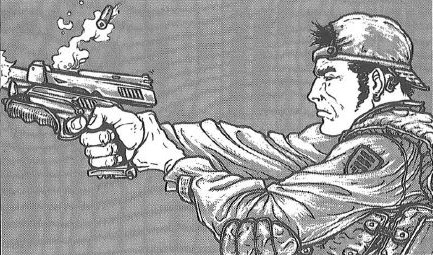
Automatic weapons have three optional firing modes besides single shot. First is a Three Round Burst. This gives +3 to hit at short and medium ranges. If a hit is successful, then you roll 1d6/2 to see how many rounds hit the target. This can only be used on a single target.
The second mode is Full Auto. This fires the full ROF, and can be shot at one or multiple targets. The attacker rolls for each target individually, and applies a +1 bonus for each 10 rounds fired if the target is at short range, or -1 penalty for each 10 rounds fired if the targets are at further ranges. For every point of success over the target number, one round hits the target, up to the ROF (divided by however many targets being shot at).
Finally there is Suppressive Fire, where the attacker covers an area in meters with bullets. Anyone entering or passing through this zone would have to make an Athletics check against the ROF of the gun divided by the width of the fire zone in meters. A character that fails this check is hit with 1d6 bullets. The minimum width of a zone is two meters.
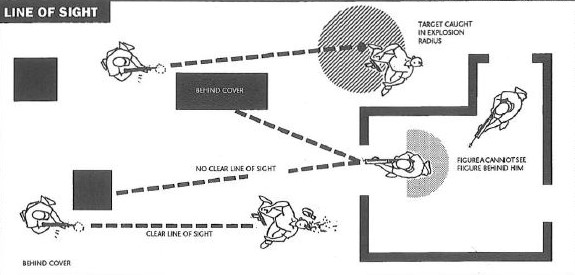
the rules for these were given 7 pages ago
After that we get special rules for various exotic weapons. Nothing really stands out except for microwave weapons. The rules for microwave weapons is that they have a 5-in-6 chance of completely wrecking anyone with unshielded cyberware, which means after the first time it’s used, everyone is going to make sure to shield their cyberware.
For area of effect weapons, the attack hits the target plus anyone in the area of effect. If the attack misses, than you need to roll on a scatter chart, then another 1d10 to see how far the shot landed (in meters). Shotguns and auto-shotguns are cone attacks, hitting everything between it and the target. There are special rules for AP shotgun shells: not only do they do more damage, but AP shells that pierce hard armor does normal damage. After that we get special rules for grenades, mines, rockets and missiles. The most significant one for rockets and missiles is that AP versions don’t halve the damage that gets through armor.
Melee Attacks
Unlike ranged attacks, melee involves an active defense. The attacker and defender roll their melee skills, and the attacker has to beat the defender’s roll to hit. If using a weapon, the attacker just hits them with that weapon. If using martial arts or brawling, they get a selection of maneuvers to pick from, from doing damage to grappling, disarming, tripping, what have you. Martial arts have an advantage over brawling in that certain maneuvers for a style are key attacks, and they get a bonus to performing them. Martial artists also add their skill to damage rolls. There’s also special rules for parrying with blade weapons that mostly amount to swords breaking 1-in-10 times its used to block an attack. It may be a genre troupe, but it’s best for your character to not get attached to any hanzo steel.
Lastly there are vehicle rules. These are much pared down from the version in Solo of Fortune so I’m not going to be covering them here. I might explain them if I ever get to that book or CP2020’s big vehicle book, Maximum Metal
And that’s combat in a nutshell. For the second part of this update, I’ll put Jamie and Kim through the paces to give a glimpse of how it comes together.
Next Time: Against the half-statted Ninja
Where the cover is made up and the Cool Stat doesn’t matter
Original SA post
Part 7b: Where the cover is made up and the Cool Stat doesn’t matter
It’s time to see how our two heroes fare in this game. For all of the rolls I give, you can either append “except for the one-in-ten chance that the character trips over their own leg like a doofus” to every check (I’ll put a * where its most pertinent), or assume that the fumble rules are ignored. I’ve thrown around a lot of numbers earlier for Jamie and Kim, so let’s get all the information into one spot:
First up for this test will be Jamie
-
Initiative: +20 (+23 with speedware on)
Rifle: +23 (+24/+25 at long/extreme with telescopic sight)
Notice: +26 (+27 for visual) * Stealth: +17
Wrestle: +13 * Demolitions +10
Sternmeyer CG-13 * 5d6 (regular or AP) * 90 rounds/48 ROF * VR * 400m
RUN 15 * LUCK 3 * BTM -5 * Save 12
Head 17/24 * Torso 19 * R.Arm 19 * L.Arm 19 * R.Leg 12 * L.Leg 12
I mentioned there’s a sample adventure in the back with “stat blocks” for three tiers of goons. It’s clear that these were written for 1st ed - there’s no way to have a base Reflex over 10 even with cybernetics. Also they list out the possessions of these goons, instead of the relevant stats. After doing the calculations myself, here are their important stats.
Basic Goon
-
Initiative: +14 * Handgun: +16
Notice: +10 * Melee +14
Karate +12 * Athletics +14
Stealth +9
Sternmeyer Heavy Pistol * 3d6 * 8 rounds/2 ROF * VR * 50m
Rippers * 1d6+5 (knife AP) * no ammo * no range
RUN 18 * LUCK ? * BTM -4 * Save 10
Head 7/14 * Torso 18 * R.Arm 18 * L.Arm 18 * R.Arm 18 * L.Leg 0 * R.Leg 0
Elite Goon
-
Initiative: +17 * Handgun: +18
Submachinegun: +16 * Notice: +12
Melee +14 * Karate +12
Athletics +15 * Stealth +9
Sternmeyer Heavy Pistol * 3d6 (AP) * 8 rounds/2 ROF * VR * 50m
Arasaka Minami 10 * 2d6+3 * 40 rounds/20 ROF * VR * 200m
Rippers * 1d6+5 (knife AP) * no ammo * no range
RUN 18 * LUCK ? * BTM -4 * Save 10
Head 7/14 * Torso 18 * R.Arm 18 * L.Arm 18 * R.Arm 18 * L.Leg 0 * R.Leg 0
Super Goon
-
Initiative: +16 * Submachinegun: +15
Notice: +11 * Karate: +14
Athletics: +14 * Stealth +6
RUN 24 * LUCK ? * BTM -5 * Save 12
Head 25 * Torso 29 * R.Arm 18 * L.Arm 18 * L.Leg 0 * R. Leg 0
Instead of making up an after-action report (as I originally intended), I’m just going to describe various encounters with the different levels of goons. First let’s look at what pre-battle rolls would be like. None of the goons have taken Stealth, while Jamie has +27 to Notice. Even in the most convoluted gotcha scenarios, Jamie’s Notice is so high that she can make near-impossible Notice checks 7 out of 10 times. In contrast, Jamie has a 5 point advantage on her Stealth checks compared to the goons’ notice, so she’s able to set ambushes pretty consistently. Finally, Jamie is almost always going to go first.
Here’s how all the rules comes together for Jamie: The CG-13 has a range of 400m, which means close range for it is 100m, or almost the length of a football field. So except for really long distance combat, Jamie is trying to beat a 15 when she’s already starting with a +23 bonus. Making called shots to the head reduces the bonus to +19, but even then, Jamie is always* going to be making the roll even at medium range (200m). But the prefered engagement range is going to be close, because that’s going to let her take advantage of the CG-13’s ROF. At close range firing a full burst, an attacker gets +1 to his roll for every 10 rounds fired, and you can hit multiple targets at once. And when attacking at Full Burst, each target hit takes 1 bullet for every point of success over the target number (up to the rate of fire/# targets). And the only consistent way for a defender to raise the difficulty is to move, and for this core book, the most that gives does is give the attacker -2.
Jamie will be hitting her targets with 7 to 16 bullets to the face, guaranteed*. Let’s put her against 8 elite goons. Jamie fires at full auto, hitting every goon with 6 bullets, each bullet doing 5d6 damage (average 17-18). Elite goons have 7 SP frontal facial armor and -4 BTM, but damage to the head that penetrates armor does double damage. If Jamie is using regular rounds, then on average she’s causing 16 to 18 points of damage to the head per hit. Even if the goons were in nylon helmets (10 SP in front), the damage they’d be taking averages from 10 to 12. And if Jamie was using AP rounds, then the average damage is 8 to 9. In all these cases, the average damage is enough to blow the elite goon’s head off, and Jamie is making 6 hits. And even if she rolls poorly, taking six shots to the face will put any target deep in the negative category.
Now how does Jamie do against a trio of super goons? This guy is meant to be an end boss, and even here I beefed him up (I gave him a heavier SMG). However, he’s got so much armor that once you account for all the penalties his impressive skills sink like a rock. Since the super goons are using SMGs they need to get within 50 meters before getting into close range, and they move 24 meters a turn. That’s fast, but not fast enough. Let’s assume one gets to shoot before Jamie-how does he do? Well if he tries to fire at full auto, he’s only got a 10% chance to hit. Instead he does a three round burst. If he tries to make a headshot (say Jamie is behind cover), he’s got a 40% chance of making the hit. Let’s give it to him, and he hits with two bullets. If the bullets are AP, then Jamie is taking just one point of damage on average. Of course if the goon gets lucky, a headshot from this gun has a chance to OHKO Jamie. For this example let’s say the damage rolls are somewhat better than average and Jamie’s taken enough damage to be seriously injured.
Even with a -2 to her attack, Jamie is going to bullseye all three of her opponents with 5 to 14 bullets. Since the super goons have more facial armor and BTM, she’s doing on average 1 to 2 points of damage, but with on average 9 hits, Jamie is going to do more than enough damage to incapacitate all three targets, and it’s pretty likely Jamie will get an insta-kill with two if not three of her attackers. Alternatively, Jamie can shoot the super goon’s legs. Each bullet will do about 3 to 4 damage on average, and with the sheer volume of hits the super goon will probably be dropped deep into mortally wounded and probably blow their leg off.
Here’s one final scenario. While Jamie excels at fighting at ranged, the super goon looks built to engage in hand-to-hand as much with guns (though armor fucks this up). So let’s have him teleport right next to Jamie, and give him first attack. What can super goon do with his mastery of karate? Well he can perform a kick, doing 1d6+11 damage. That seems impressive, but Jamie has skinweave and a -5 BTM. Even at max damage, super goon only does 1 point of damage, and nothing is stopping Jamie from blowing him to bits on her turn. He can disarm Jamie, which will require her to pick up her gun before using it. Making two actions imposes a -3 penalty, but since Jamie is at point blank range, the penalty is meaningless. Super goon’s best option is to put Jamie in a hold. That will let the super goon do choke damage, but again this maxes out at 1 point every turn. But what can Jamie do about it? Well Jamie took wrestling as her martial arts because of the huge bonus to escaping holds. After about two turns Jamie will break the hold, pick the gun up if it was disarmed, and turn super goon into swiss cheese.
Even when things go pretty poorly for Jamie, she is much more likely than not capable of soloing (pun not intended) what is meant to be an end-of-scenario opponent, or even a few of them at a time. The only way to challenge Jamie using just the core book is to build an opponent exactly like her, at which point it becomes a question of who wins initiative.
That takes care of Jamie, but what about Kim?
-
Initiative: +6 * Submachinegun: +11
Notice: +9 * Thai Kick Boxing: +8
H&K MP 11 * 4d6+1 (regular or AP) * 30 rounds/20 ROF * ST * 200m
RUN 15 * LUCK 5 * BTM -3 * Save 8
Head 25 * Torso 25 * R.Arm 25 * L.Arm 25 * R.Leg 25 * L.Leg 25
To start, Kim is always losing initiative to both the elite and super goon, and will almost always go after even the basic goon. We’ll start with the super goon, since I think that’ll be the quickest. At medium range, super goon has an 80% chance to hit Kim with a 3 round burst, double Kim’s odds to do the same. If he hits, he does on average 1 point of damage after SP and BTM. Unlike Jamie, Kim has to worry about Stun/Shock saves as soon as he takes the slightest damage. Meanwhile, the best Kim can hope for is to hit the legs and roll max damage, blowing it off. Otherwise super goon gets to close range in two rounds, and then does a full auto attack. Kim will take 3 to 12 hits*, the majority of which will pass through his armor, and Kim will probably fail a Stun/Shock save and pass out.
Unless they’re using AP rounds for their SMGs, Kim actually has a significant range advantage on the elite goon. An elite goon would have to move for 2 turns to get in range while Kim can take 3-round bursts each round and land a hit every time*. Even once they get in range, a majority of the AP pistol rounds won’t penetrate Kim’s armor. But every shot that does get through forces a Stun/Shock save. Kim probably has a good chance of the taking a single elite goon, but facing more than one is more than he can handle.
A fight between Kim and regular goons would be comical. None of the goon’s weapon can penetrate Kim’s armor, but Kim doesn’t have the skill to reliably kill the goon quickly. In isolation, the goons would have to dogpile Kim, and by now I think I’ve made my larger point and I don’t really want to figure out how many are needed to beat Kim. I would guess 4.
In conclusion combat is basically a solved problem in the core book. There are some tricks you can do with explosives, but the primary strategy is going to be firing at full auto with an assault rifle and blowing heads off a football field away. These rules are pretty complicated, but they’re nowhere near as dense as the Netrunning rules, and I’m not looking forward to that. But before we get to that, we got to talk about doctors. Doctors, and drugs.
Next Time: General Hospital
At least it won’t end with a kid staring into a snowglobe
Original SA post
Part 8: At least it won’t end with a kid staring into a snowglobe
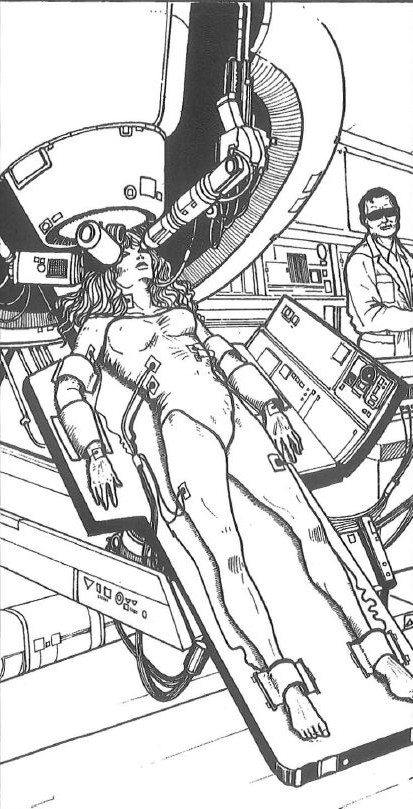
https://www.youtube.com/watch?v=_BzPbmkwHwA
With the gun fights over, it’s time to get patched up, assuming there’s anything left. We start with a revisit of the rules for dying and how to stabilize a mortally wounded comrade (they were just in the last section, guys) but we learn that failing a Death Save is not necessarily the end of the road for a character. Once they fail a Death Save, a character is in the first stage of expiring (DEAD 0), but they’re not beyond recovery until they reach DEAD 10. Death stages progress by 2 every minute, and during this time, their buddies have hopefully called Trauma Team. Trauma Team is one of two corporations in CP2020 that exist mainly to justify game mechanics. After the call is made (usually by snapping a card), then 1d6+1 minutes later a Trauma Team air-ambulance (aka an AV-4) arrives on the scene and makes a 1d10 roll. If the roll is higher than the current death stage, then the dying character is saved. Otherwise it’s off to the body bank.
Having avoided re-rolling a new character, the question now becomes how long it will take to heal up. To start, you need to make a skill check either First Aid or Medical Tech against the number of wounds taken (if left untreated, the character takes 2 points of damage each day and must make a Death Save daily if he’s past the mortal wound threshold). One oversight is there’s no time frame on how often the check can be made. Once the check is made, the rate of healing depends on a number of factors. First Aid has a base healing rate of 0.5 points/day, while Medical Tech has a base of 1 point/day. Drugs, antibodies, nanotechnology, and certain bioware can speed the rate of recovery even further. Finally we have penalties for character recovering from wounds, in case the Referee wanted to have a hospital shootout.
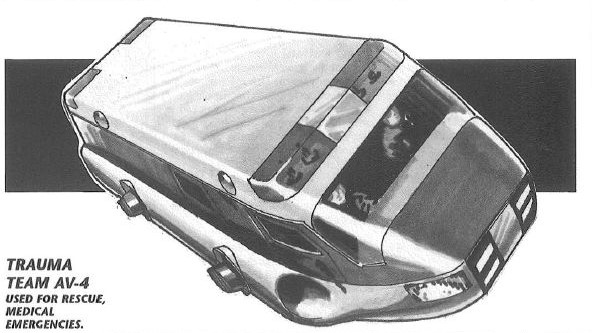
After that, we get the rules for cybernetic surgery, the same as in section 6. The only new info here is that if you want to keep the meat part for some reason, you can pay 100-200 eb a month to have it put in a freezer, but there’s a risk it’ll be sold. Hooray for useless sub-rules. By the way, the cost of getting a cybernetic arm + surgery + supporting cybernetics in this dystopian future is 7,000 eb. I’ve been fortunate enough to never have to worry about replacing a limb, but I’d be curious to know what the cost is in our actual hellworld. I’m guessing CP2020's prices are about as accurate as it's prediction of cell phone costs.
We then get several paragraphs describing Trauma Team Inc. They act as Cyber-M.A.S.H. for whoever has an account (500 eb/month). When called, the Trauma Team will Kool-Aid man their way into a situation, and if there’s a firefight still going on, they have plenty of firepower to keep any idiots from interfering with their work. As I said, Trauma Team Inc. exists as a game convenience so characters don’t need to be replaced the first time they get unlucky in combat. Honestly, I’m alright with that, as much as I can make cracks about affordable healthcare being the least realistic aspect of the setting.
The next section is on the cost of meat body parts, both selling and purchasing (twice selling cost). Theoretically a fully intact body will bring in about 9,000 dollars, though it’ll probably be a lot less owing to the work needed to make the body dead. On the purchasing side, there’s a 30% chance there’s no compatible donor, and a 20% chance that it doesn’t match. It’s possible to grow a replacement, but doing so doubles the price. Still, it’s an alternative to cybernetics that doesn’t carry any Humanity Loss and is usually cheaper even if vat grown (eyes and ears are the big exception).
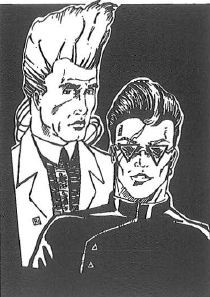
Medical technology can do more than heal wounds and replace limbs. There’s the option of changing appearance. The more you spend, the harder it is to tell you had plastic surgery. This only affects the way you look, so you can’t recreate Face/Off (yet). You can also increase your Attractiveness stat for 600 eb a point, further cementing it as a dump stat.
Cyberpunk 2.0.2.0 posted:
Want to decrease your Attractiveness? A straight razor costs ninety-five cents.
And finally,
 we get rules for Exotic Fashion, or in today’s parlance, how to be a furry in this game. Facial scults, tails, paws, fur or scales, everything you need to become your fursona. There’s no benefit for doing this, and some even have penalties (-2 Reflex, or a 10% chance of getting skin cancer). While it’s only a small section in the core book, Exotic Fashion will be expanded on in Chromebook 2, i.e. the supplement where CP2020 lost its goddamn mind. If I get to that book, I may need to self medicate for that part. Speaking of which...
we get rules for Exotic Fashion, or in today’s parlance, how to be a furry in this game. Facial scults, tails, paws, fur or scales, everything you need to become your fursona. There’s no benefit for doing this, and some even have penalties (-2 Reflex, or a 10% chance of getting skin cancer). While it’s only a small section in the core book, Exotic Fashion will be expanded on in Chromebook 2, i.e. the supplement where CP2020 lost its goddamn mind. If I get to that book, I may need to self medicate for that part. Speaking of which...Next Time:

2020/2020 Count: 4
Dude, Where’s My Editor?
Original SA post
Part 9: Dude, Where’s My Editor?
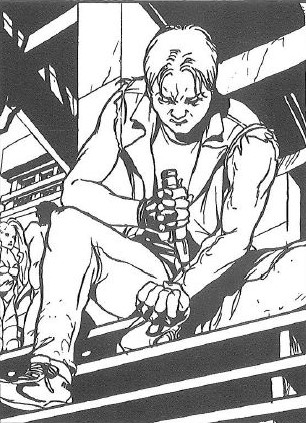
https://www.youtube.com/watch?v=vory0ErGW3w
Like pretty much every game written in the eighties not that wasn’t fantasy, Cyberpunk 2.0.2.0 has rules for drugs. In all these systems, drugs are either going to have so many drawbacks that characters are never going to use them, or they’re going to be so beneficial that characters are never going to be off them. CP2020 somehow manages to be both. CP2020 also falls into the same trap as a lot of media, particularly in this time period, of going into great detail as to how drugs can be destructive, but never exploring why people do drugs, which I think is a big failing for a dystopian setting that includes them. Drugs feel like setting dressing to justify why this group of gangers isn’t running away after you’ve mowed down half a dozen of them in 3 seconds.
Cyberpunk 2.0.2.0. posted:
As any fan of Miami Vice (or a player who watches a lot of real life cop shows) drugs are a great way to get people on the streets with lots of automatic weapons; the perfect “McGuffin” for a mean, nasty, lowlife adventure.
Aside from the tonal issues, the rules for drugs are a mess. The section starts with a selection of common street drugs. But then there’s rules for making your own custom drugs, and it’s pretty clear that these rules can’t duplicate the drugs provided. You have to flip over to the next page to figure out all the effects of the drug. A couple of drugs are defined as “stimulants” but the effect of stimulants are never defined (is it a stat booster? I have no idea). There’s implications in some of the drugs that there are rules for checking if you get addicted, but it’s never spelled out and the Referee is just left to guess. There’s a combat drug that improves CL, a stat that doesn’t help out with combat. The drawback is that it reduces your EMP like it was cyberware, an effect not listed in the custom rules. Etc, etc.
The only thing spelled out clearly is the side effects, which seems like all the authors thought of drugs. All of them are nasty. Temporary stat loss, permanent stat loss, going catatonic. None of the drugs provided are worth taking. That’s not why we’re here. Instead, we’re going to make our own drugs. And not just any drugs, or any Hisenberg wannabe. This is a drug Jamie can make just by purchasing a Pharmaceutical+3 skill chip.
We get a list of effects that a drug can produce. These will set our base difficulty. The most difficult are stat boosters (15) which increases the stat (REF, INT, or CL) by 1 per strength of drug. Other effects include enhanced perception, improved stun saves, improved healing, and, ahem, aphrodisiac, which is “-Strength to resist Seduction test”.
 This game is nowhere near as gross as other games, but sometimes...
This game is nowhere near as gross as other games, but sometimes...Back on subject! A drug can range in strength from 1 to 3, which each point adding to the difficulty. After effect and strength, you select side effects, which reduces the difficulty of the drug (can’t go lower than 2). Finally, you select the drug’s duration, which multiplies the difficulty. 1d6+1 turns is x1, 1d6+1 minutes is x2, and 1d6+1 hours is x3. With all the rules explained, it’s time to hit the lab. The street cost of the drug is the difficulty times 25 eb.
The drug we’re going to make will give +3 Reflex. That puts the base difficulty at 18. How do we reduce the difficulty? Well there’s a side effect that’s perfect for Jamie: Death. Every time a drug with this effect is taken, the user must make a death save with a penalty “equal to the drug’s strength number minus one”. So for a +3 strength drug, that’s a minus -2. But Jamie’s Death Save is 12, which means she is always going to make this save. Meanwhile, taking this side effect reduces the difficulty by 15, so now we’re down to only 3. With an x3 multiplier, the drug will last 1d6+1 hours, and the difficulty is still only 9. Jamie’s TECH stat is at 6, so between it and the Pharmaceutical skill chip (and discounting the 1-in-10 times RAW says she just shakes a container of Drano and chucks it on the floor), Jamie has effectively added +3 to her REF at the cost of 75 eb a session.
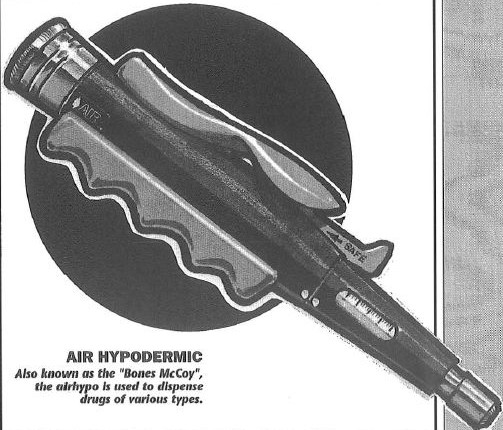
Lots of Star Trek references as it turns out
Now what about someone that’s not as min-maxed as Jamie? There’s one side-effect that has negligible effects: Sterility. Taking a drug with this side effect has a 30% chance of making the user permanently sterile. That’s -8, which will reduce the difficulty of our REF booster to 10. With an x2 multiplier, it lasts 1d6+1 minutes, which can get through several combat scenes. This drug costs 500 a dose and has a creation difficulty of 20, which is attainable for a Med Tech optimized to make drug. Alternative, just make a REF booster with no side effects that lasts 1d6+1 turns, costing 450 a dose. Most combats are decided in the first couple turns, so even on a poor roll, a player will get major benefit out of it.
As for making drugs with higher difficulties, I’m pretty sure there are later supplements that have drug labs that give bonuses to Pharmaceutical
I won’t detail any of the other side effects, because they are really punishing, either giving temporary or permanent penalties to important stats or taking control away from the player (including attacking other players). No player would ever take drugs that have these affects, though I could see a clever one using these rules to create poisons to make enemies fight themselves.
Back in part 4, I said that I was unsure how much mechanical support the Med Tech got. After these last two sections, I’d say that while the execution is lacking is some areas, there are enough levers for someone who wants to play a Med Tech to feel like they’re contributing.
However, as much as I complained about this last chapter, I feel like that’s going to pale compared to what’s coming next. Grab your cyberdecks, kiddies - it’s time to hack the planet.
Next Time: Loading....
Shall We Play A (Different) Game?
Original SA post
Part 10a: Shall We Play A (Different) Game?
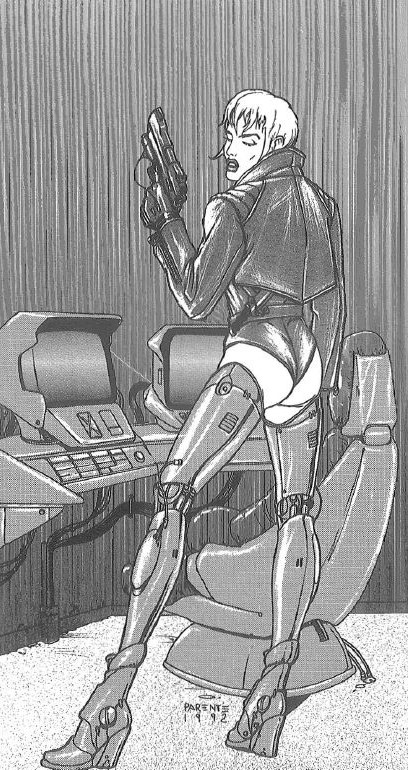
https://youtu.be/aPJGn3XURhw
Netrunners and the Internet (called NetScape or just The Net) are supposed to be a big part of Cyberpunk. It’s just that, well, there are certain flaws with how it’s implemented. Very big and very fundamental flaws. The Netrunner’s job is to hack computer systems, either to steal or alter information or to take over systems to assist the other players. The Netrunner does this by using a cybernetic interface and a specialized computer called a Cyberdeck to plug his mind directly into the Internet. Inside NetScape, they follows a separate rules system that no other role can interact with, and have to confront challenges that no other role can contribute to overcoming. Narratively, the Netrunner is doing his hacking in tandem with the rest of the party. In terms of how gameplay flows, the Referee either needs to resolve the Netrunner’s side of the session before addressing how things go for the rest of the players, or have two seperate maps and encounters going on at the same time. Either way, the game is going to slow down immensely.
Before I go further, there’s evidence that someone at R.Talsorian saw that there was a problem even back in 1990, and made some attempts to address the issue by giving Netrunners ways to contribute to an encounter without having to make a deep dive into the Net. While these are a step in the right direction, they ultimately don’t fix the core issues with this system. If someone on the writing staff types this into an advice sidebar (emphasis mine):
Cyberpunk 2.0.2.0. posted:
It’s only when you’re cracking systems that you have to stay in the ‘face for a long time and bore the rest of the party.
I feel that maybe that should have been an indicator that the whole system needed a rewrite.
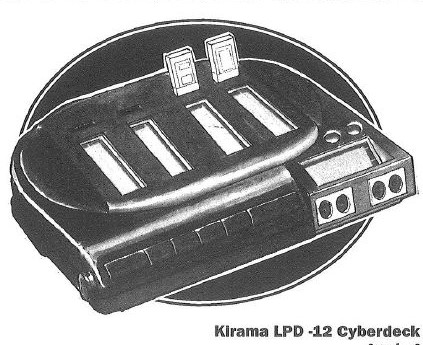
The Net of CP2020 is a virtual realm that represents all the interconnected computer networks and cables. The locations of all the computer systems correspond relatively with each other to their location in the real world (or Realspace) thanks to something called the Ihara-Grubb Transformation Algorithm. The I-G Transformation was implemented in 2014, so the overall geography of the Net is a change to CP2020 compared to the first edition (I have no idea what it was like before).
The infrastructure that supports the Net is owned and operated by the Internet Communications Corporation. Internet (the company) is comparable to a Force-of-Nature NPC like the Lady of Pain, in that it exists to explain why certain elements of the setting are the way they are, but doesn’t have any goals except to defend its insanely huge power. In the case of CP2020, Internet gives zero fucks how anyone uses the Net, as long as they pay their bills. Even other Megacorporations won't tangle with Internet. That’s not to say NetScape isn’t policed. Megacorps have pretty free reign to defend their systems (or Data Fortresses), while an international police force called Net Watch patrols the City Grids. As in the real world, how effective these protections are depends on the region. The Internet is divided into 9 regions (sometimes called kingdoms) based on shared characteristics and conditions of the infrastructure. The names of the regions are Atlantis, Rustbelt, Olympia, Pacifica, TokyoChiba, Afrikani, EuroTheatre, SovSpace, and Orbitsville.
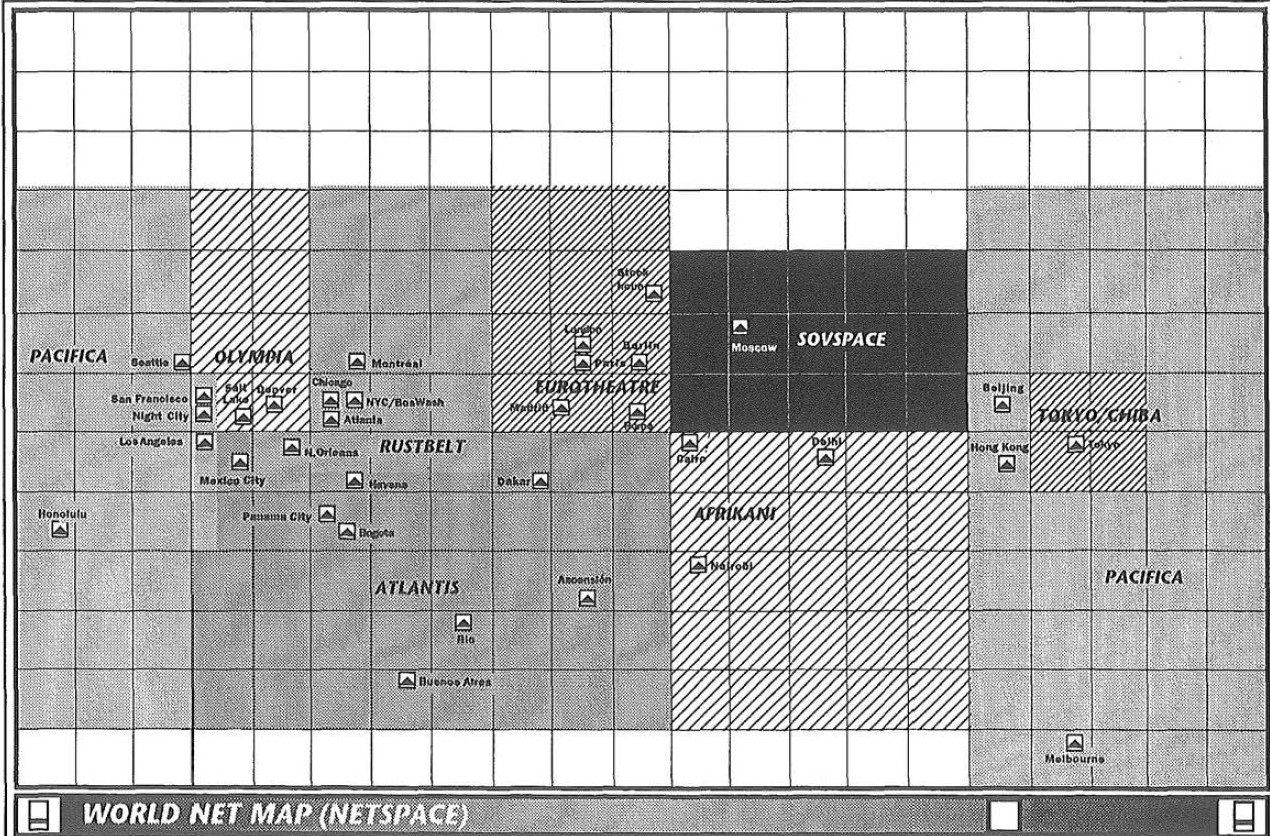
Netscape has three layers. When a Netrunner jacks in, their ICON is placed onto the City Grid, which has all the local Data Fortresses represented as their ICONS. If the Runner wants to hack into any of the local systems, then they travel to the Fortress’ ICON, which brings them to the Subgrid. This is where the Netrunner does most of his hacking. If the Netrunner needs to do business in another city, they go to the city’s Long Distance Link (LDL), which will bring the Netrunner onto the World Net Map. All Cyberdecks are assumed to be configured to allow a Runner to bypass long-distance billing (we’ll get to how that works in practice). It’s theoretically possible to move between cities staying on the City Grid, it takes a long time to do so. This space between City Grids is called Wilderspace, and whatever is out there is basically up to the Referee. Whether on the World Net Map, the City Grid, or the Subgrid, Netrunners move up to 5 spaces a turn either horizontally or vertically. (A Netscape turn is one second, compared to the 3 second Realspace turn. Have fun keeping that straight.)
While most of the entities with established Net presences frown on the activities of Netrunners, there’s one important exception. Bulletin Boards (BBS) are friendly Data Fortresses where Netrunners can go to get information, swap programs, collaborate, etc. Getting into one requires a password or encrypted key, but the main defense comes from always having a bunch of experienced hackers ready to fry anyone being a bad guest.
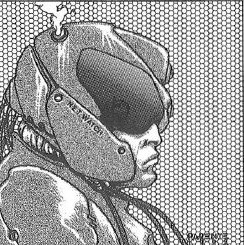
even in CP2020 people love custom cooling systems
In order to use their Role’s abilities, a Netrunner has a few unique expenses. To begin with, they need the prerequisite cyberware to use a cyberdeck: the Neural Interface, interface plugs, and Cyberdeck link. There’s a non-cybernetic option, but it sucks (-2 Reflex). In addition to having stock Cyberdecks, a Netrunner has copious options to customize their own deck. You start with a base model, which can range from a desktop arrangement to a cellular deck. Cellular decks have a special advantage of allowing a Netrunner to remain mobile while jacked in, and a Netrunner can ever use some of their programs while still engaged with the real world. Unfortunately the base Cellular deck costs 4,000eb, which is at least 40% of a starting Netrunner’s budget.
I’ll give CP2020 credit for not giving the specs of any of their computers in real life terms. All base model cyberdecks have 10 Memory Units (MU), a speed modifier of 0, and Data Wall strength of 2. These stats can be improved, and while the cost is high, there’s no upper limit to how much a deck can be upgraded.. Finally, there are options like screens and printers. The most useful of these is the chipreader.
We then get a big list of different programs. Programs come in several categories:
- Intrusion: Breaks through Data Walls
- Decryption: Opens Code Gates and encrypted files
- Detection/Alarm: Notices invisible Runners, and/or alerts the program’s owner
- Anti System: Damages cyberdecks and Data Fortress CPUs
- Evasion/Stealth: Avoid detection, or misdirect programs that can track
- Protection: Defends a Netrunner from Anti-Personnel software
- Anti-IC: Attacks programs
- Anti-Personnel: Directly damages a Netrunner or interrupts operations. Most are considered “Black Programs”, making them difficult to acquire
- Controllers: Allows control of remotes. This is part of the “fix” that I mentioned at the beginning
- Utilities: Miscellaneous, but includes some things that should honestly be standard functions like “Copy data” or “put digital lock on Cyberdeck”
- Compiler aka Demon Series: A program that stores several different programs. Has a few significant flaws.
Before I go into how Netrunner combat works, I want to go over the “fix” CP2020 tries to provide for Netrunners, and why it doesn’t really work. Among the Cyberdeck’s main menu functions are two options LOCATE REMOTE and CONTROL REMOTE. LOCATE REMOTE shows the Netrunner every remote system connected to the Net. CONTROL REMOTE gives the Netrunner the opportunity to take control of the remote device if their deck has the right Controller program. The Netrunner can do these two things without even jacking into the Net, so the idea is the Netrunner is able to run along with the rest of the team and hijack remote vehicles, open doors, and tap into security cameras. I like the idea, and I even think it was used in an edition of Shadowrun for their version of the Netrunner (until fans complained and it was reverted back because we can’t have nice things).
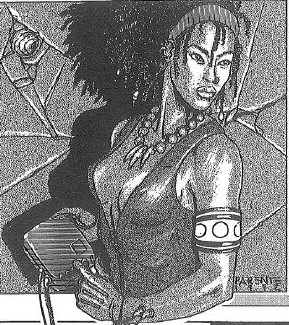
There are three problems with how it’s set up here. First, to take control of a remote, the Netrunner rolls a d10 and has to get equal or under the program’s strength. There’s no way for the Netrunner to improve this chance except to write their own program, and it’s no more difficult to take over the equivalent of a Roomba versus an AV-4. The default Controller programs are pretty garbage, but a starting character can design their own programs that would work all the time.
The second problem is that all of this is explained in one page out of a 50 page section. A Netrunner player has to negotiate with the Referee every time as to what this ability allows, and there is no guidance given to the Referee on this ability tucked away in the middle of a chapter. The referee is put in the uncomfortable position of either shutting down the player or allowing the Netrunner to morph into a D&D Wizard.
Finally, while there’s this one page for controlling remote, the remaining 49 pages are for everything the Netrunner does that will slow the game down. So even if the Netrunner wants to do this remote control character and the Referee is on board 100%, all the other players will expect the Runner to still be a regular hacker. And a starting character isn’t going to have the funds to make a cyberdeck that can handle both. This is because of Memory. The bare essentials for attacking a Data Fortress is 7 MU bare bones, and 9 if you want effective programs. To have those programs and a suite of Controller programs at the same time, you need a memory upgrade, which will be more than the Netrunner has to start if they also want a cellular deck.
This section will probably take 3 updates at least to cover. Before I end this post, I want to point out that the cyberdeck and program section offers zero guidance as to what a Netrunner needs to attack Data Fortresses. And all the referee gets is some vague suggestions and a random table for quick generating Data Fortresses. So when I gave that 7-9 MU requirement? I can be totally off the mark, but I can’t tell because of how unintuitive these rules are. And since only one player is engaging with this system in a typical group, it’s very difficult for the Referee to fine tune the difficulty without accidentally presenting something that will turbo-murder the Netrunner and completely cut off what they bring to the party.
Next Time: //run NothingInterestingHappens.exe
1337*ness matters less than you’d think.
Original SA post
Part 10b: 1337*ness matters less than you’d think.
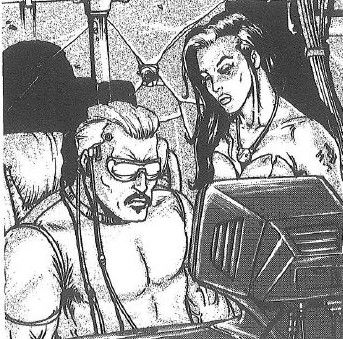
https://www.youtube.com/watch?v=mpMg1upld0w
Time to talk about the actual mechanics of hacking. While Jacked in, the only skill that matters is Interface. Even that doesn’t come into play for a lot of actions. This means that the most important choices a Netrunner makes in combat are made when selecting the programs to bring. But that can be frustrating when you have really limited deck space and one of your must-have programs takes up half the space on a starting deck. Also, there’s not any tips given on how a Netrunner gets the information needed to make intelligent preparations. On the City Grid, each Data Fortress is coded to one of five levels - Grey System, Level 1, Level 2, Level 3, and Black System. This coding just indicates the deadliness of the programs used to defend it, and what sort of organization would operate it. There’s no mention of how a Netrunner is supposed to find out more about a specific target, so they are left picking the strongest general-purpose software for runs.
I already discussed the LOCATE REMOTE and CONTROL REMOTE functions in the main menu. Here’s a quick description of the other LOG ON/OFF punches you in and out of the Net. A Runner has to roll 8 or lower to LOG OFF, and NetWatch have programs to stop them from logging off. RUN PROGRAM lets the Runner execute his programs. LONG DISTANCE LINK is used to trick LDLs into thinking the Runner is making a local call. COPY copies files. ERASE erases files. READ reads the file. EDIT changes the file. Finally, there’s CREATE/DELETE, which is specifically for creating Virtual Realities, which have their whole separate rule set to them.
The first decision point comes as to whether or not to use LDLs to interfere with tracing. Every LDL has a Trace Value, and each one you pass through increases the difficulty of programs like Hellhound tracing you. The program must roll 1d10 + Program Strength and beat your cumulated Trace Value. But using LDLs is expensive. It costs 0.20 eb per square traveled on the World Net Map per turn. The Netrunner can instead try to fool the LDL into thinking the deck is making a local call. The Netrunner has to roll a 1d10 and get equal or higher than the LDL’s Security Level. Otherwise you attract the attention of NetWatch. The Runner’s skill has no impact on whether or not they can do what should be a fundamental hacking trick.
When combat begins, a NetRunner rolls 1d10+Deck Speed+REF to determine initiative. If an AI is involved (yes there are AIs we’ll get to them), it rolls 1d10 + its INT. Each turn, a Netrunner can move 5 spaces and take one action, usually running a program. A computer or AI gets one action for its first CPU, plus an additional action for every two additional CPU in present in the system.
Cyberpunk 2.0.2.0 posted:
This is why Netrunners team up to tackle big systems
Well that’s the first I am seeing this tidbit in the book. So is it assumed that there’s going to be more than one Netrunners in a group? There’s no suggestion that on these big runs other players play the Netrunners recruited. Even if the Referee goes this route, the result of this design is that any campaign end point is going to take twice the time to get through. Otherwise the Netrunner will likely have to ignore the core of their class when the campaign hits its peak.
A Netrunner or program can see and attack anything within 20 spaces “unless it’s blocked by some other obstacle (as determined by the Referee of the game)”. Thanks CP2020. Programs can move 5 spaces, but unless they’re in the Dog Class, they can’t leave their home system. They can move at most one space away.
The check made to see if a program succeeds depends on its type. For Stealth and Detection programs, the check is Strength+10. For Intrusion, Anti System, and Encryption, the check is Strength+1d10 vs Code or Data Wall+1d10. Anti-Personnel and Anti-IC programs are the only ones where the Netrunner’s skill matters. The roll is Strength+Interface+Int+1d10. In all these rolls, ties go to the attacking program. Anti-IC programs damage other programs on successful hits by reducing its Strength. When the program has 0 Strength, it de-rezzes.
And that is how you hack in Cyberpunk 2.0.2.0. There are no useful decisions to be made, not even different ways to distinguish one Netrunner from another, just pure numberslam. And it’s not even visceral or satisfying numberslam. Take something like RIFTS. The combat is certainly a slog, it can still be entertaining to roll a boatload of dice and then place a meaty multiplier on the final number, and the players and GM can at least have fun describing guns three times the size of the shooter firing and hitting opponents. But here in Netscape, all the Player and Referee do is roll a d10, add some modifiers, and maybe roll a couple of extra dice for damage. And when a program or Runner is defeated, they’re just de-rezzed. The only time things can get more descriptive is when it’s the player’s Netrunner that kicks the can, and it’s very easy for this to come off as mean-spirited.
After combat, the book moves onto designing Data Fortresses. But rather than saying what would be reasonable challenges or what would be appropriate for rewards for compromising a Data Fortress, we get the rules for how much components cost and the rules for laying them out, as though this was something players were going to build! And the prices are just for what the computer components are, not what is needed to house these supercomputers or the electricity needed to power them. And these computers are pretty super. The relevant detail is that each CPU in a Data Fortress gives it 3 INT, and it can have 21 INT max. At 12 INT and higher, the system is an AI and can act independently of any operator. There are notes on the kind of personality it might have and how the referee should roleplay it. In addition to placing programs to defend the Data Fortress, a computer can be given skills. These skills can be raised to +10, and can even include TECH and REF skills, including weapons (the computer uses INT as the base stat). The only thing missing is how an AI controlled weapon determines initiative. It’s implied that an AI uses Interface, but it’s not on one of the skills listed. I think the idea is that the AI just has the abilities granted by Interface. Finally, it should be noted that a CPU only costs 10,000 eb.
It’s a wonder this setting hasn’t already been Judgment Day’d. Perhaps Skynet is stuck on determining initiative for the nuke launch.
After all those honestly pointless rules, we get a random roll table for quick generating a Data Fortress. After the last two parts, I need some random nonsense to relieve the pressure.
Cyberpunk 2.0.2.0. posted:
A system filled with office gossip files and ten Hellhounds is pretty bogus.
You can’t tell me how to have fun!

My first roll (1d6) is for the number of CPUs. I get a 5. This gives my system an INT of 15 and is an AI. I also have 20 Memories (for 200 MU), 5 Code Gates, and 5 Terminals. For the AI’s personality, I roll a 4: Intellectual, Detached. For its ICON, I get a 5: Technic, ie a robot. To determine the Data Wall Strength and Code Gate Strength, I roll 1d6/2 and add the CPUs for each. The result is 5 for the Data Walls and 7 for the Code Gates. I then roll 1d6+4 to determine the ranks for 5 different skills. I’ll pick the skills after the Data Fortress is finished, but the levels are 8, 8, 9, 5 and 7
Each memory has two files. That’s 40 files in this Data Fortress. I roll 1d6 for each to see what type of file these are, and get these results:
-
1 Interoffice: 9
2 Database: 6
3 Business Records: 10
4 Financial Transactions: 4
5 Grey Ops: 8
6 Black Ops: 3
-
1 3-4: Bloodhound
2 1-4: Bloodhound
3 4-6: Pitbull
4 0-4: Knockout
5 9-3: Brainwipe
6 1-3: Bloodhound
7 4-1: Watchdog
8 8-2: Poison Flatline
9 5-3: Manticore
10 1-4: Bloodhound
11 7-6: Murphy
I have an idea for this Data Fortress. It’s an off-the-books manipulator of financial data that’s used to commit wire fraud, insider trading, and other financial crimes. The Autofactory is there to forge documents. The Fortress is designed to alert whoever set it up rather than fully defend itself because it’s builder wanted to reduce the risk of the AI going rouge. So far, the AI is content to do mess around with the VR. It’s skills are Stock Market 9, Forgery 8, Accounting 8, English 7, Driving 5. All that’s left is to determine the layout. I roll a 1, which gets me this:
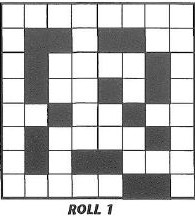
Well it looks like there isn’t near enough room to fit all the components. There are some options that have more space and might work, but it’ll be a tight fit at best. If I had 6 CPUs none of these would have been able to fit all the components it would come with.
Well I feel better after that. We’ll finish off Netrunning next time by discussing Programming, which is important to playing a Netrunner, and Virtual Realities, which is a waste of space.
Next Time: Causing phones to explode really is a feature
“WOW! President Bartmoss!”
Original SA post
Part 10c: “WOW! President Bartmoss!”
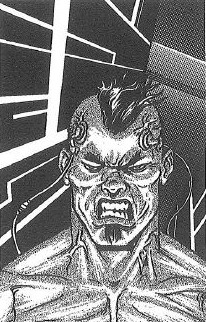
The rules for designing custom programs are pretty good for what they are. You start with a base difficulty depending on the class of program, then select a number of different options, and then choose a program strength (which increases difficulty on a one-for-one basis). It’s not perfect, admittedly. Having the quality of a program’s ICON as an option will mean players never give their programs an ICON (this doesn’t make them invisible, but not having it saves resources). Also the example they give is for an existing program and its options don’t quite match up with what the program can do back in the description. But otherwise it covers everything you need. The size of the program and the number of hours needed is based on the final difficulty, and the cost is based on a combination of the class of program and difficulty. With the pricing rules it’s possible to back out the difficulty to create any program, and this gives the player and Referee ample references for setting modifiers to programs. There are even rules for collaborating with other programmers, allowing players a means of getting past really high difficulties.
Overall it’s a solid set of item creation rules, even if its in service to a part of the game I’ve been dunking on heavily. On the other hand, an enterprising Referee can use these rules as a template for house-ruling how to build items other roles care about, like guns and cybernetics. It wouldn’t be easy, but the framework is reasonable.
There’s one exception to my praise of the programming rules, and that’s the special rules for the Compiler class of programs, aka Demons. The rules here, along with the provided example, not only make Compilers effectively outside of what a character would normally use but give the impression that the pre-made programs require a lot of futzing with and aren’t plug-and-play like the program description implies. On top of that, the Demon programming rules tell us that using Demons gives a -1 penalty to your deck speed for every program loaded on it. It’s unclear whether this penalty is always applied or only on turns a Netrunner uses a subprogram on the Demon. In either case, it’s really egregious that this penalty is introduced 30 pages after Demons are presented as a program a character can buy in order to get around the MU limits on their decks.
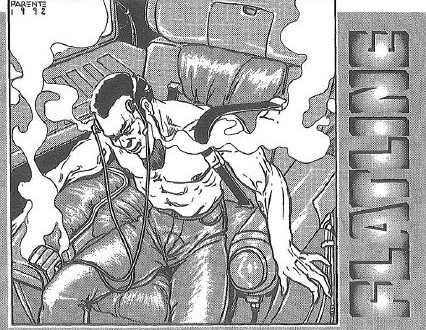
Me after reading this section
The last subject in this section describes Virtual Realities. VR spaces exist in the Net, but can be visited by any character (non-Netrunners would use a set of electrode). There are a bunch of rules for how to create them, what they cost, how realistic they could get, how many objects exist in them, what the possible objects are, and how Netrunner programs interact with the VR. It takes up 5 1/2 pages, and it is completely useless.
There no reason for the Referee to bother with these rules. If they want to set a scene in a VR, then they’ll describe what it looks like. No player is going to audit what is and isn’t possible based on the base price (which the Ref can make up). Defensive and offensive programs in a VR still follow the Netrunner combat rules, and characters are otherwise unaffected by what happens in the VR. There’s also no reason given for players to set up a VR. Some of the flavor says that NPCs use VR to train Black Ops teams, but there’s no description of how this would actually improve skills, if there are any limitations overall or specific to the level of realism, nothing. Whether VR training is something players can do is totally up to the Referee.
With that, the Netrunner section comes to an end on a wet fart. The Netrunner section is last the of the rules needed to run Cyberpunk 2.0.2.0. The rest of the book gives more details on the setting and its history (including Night City, the default setting for Cyberpunk), a section with advice for running the game, and adventure hooks with varying degrees of detail.
Next Time: In The Not Too Distant Future
I can drive my jet-car with my mind and send faxes at the same time? How convenient!
Original SA post
Part 11: I can drive my jet-car with my mind and send faxes at the same time? How convenient!
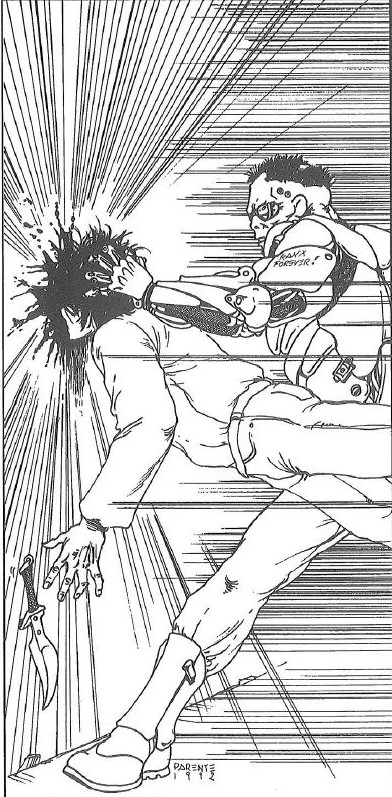
https://www.youtube.com/watch?v=Zfivq3Ou4_M
It’s not really clear when events in Cyberpunk 2.0.2.0. split from actual history. The timeline at the beginning of the chapter starts in 1990, and while there are some real life events (like the reunification of Germany and the breakup of the Soviet Union), events are already going pear-shaped. The meat of this section focuses on what happened to the U.S. Basically everything goes bad for the U.S. short of dissolution or a second Civil War. The economy crashed in 1994, and the government followed in 1996. While a civilian government is in place again, things aren’t close to being back to normal. Every big city may as well be the setting for a G.T.A. game, while anything outside of the big metro-zones has been abandoned. Agricorps have effectively taken over all the rural areas, and the highways are dominated by Nomad packs. The one bright spot is that after 30 years of misery, most of the population is ready to wheel out the guillotine. And presumably, it’s going to be the PCs and their allies that spark this “Cyberpunk Revolution”.
There is an overview of the rest of the world, and it’s written in a way to provide a starting point for Referees that wants to set a plot there. The one area where this isn’t the case is Western Europe. The European Economic Community got through the turn of the millennium more or less intact. Consequently, there’s really nothing interesting to do in the EEC except to have it hang around as the one prick with way more money than everyone else. Except for Britain. The U.K. went to shit alongside the States, I presume because they Brexited a quarter century earlier.
After the Soviet Union fell, the former republics remembered that this setting was based on Eighties media, and so they quietly reformed. Today, the Neo-Soviet Union is a mix of the USSR as pictured in Rocky IV and something closer to IRL China. To the south, the Middle East disintegrated in a Nuclear Exchange that happened in 1997, taking a large percentage of the world’s oil reserves with it. Egypt, Israel, and Syria were the only countries to survive. The rest of the region has gone full Mad Max mixed with, uh, islamophobic stereotypes. I hate to put it that way, but when you print “Rumors of jihad - the Holy War - are on the radioactive wind,” I don’t know what else to call it.
After the shit hit the fan in South Africa and elsewhere, Africa is managing to unite thanks to a partnership with the E.E.C. to colonize space. The equatorial belt of Africa is now home to the majority of spaceport facilities and construction areas, and nearly one third of all space construction workers are African. For their part, the European Space Agency has built permanent space habitats at the Lagrange points and set up a pair of moon bases. The lunar mass drivers have the added benefit of being able to drop rocks on Earth, giving the Euro-Nations the upper hand over the arsenals of the U.S. and U.S.S.R.
Japan has entered the new millenium on solid footing, but it isn’t quite the juggernaut that economists had predicted. It faces rising competition from China, Korea, and the New Philippines. In response, Japan is working to mend relations with the U.S. after the trade wars from the 90s. The paragraph on Japan is surprisingly light, considering that it’s where Arasaka is headquartered. Lastly, Central America has united against the U.S., driving it out of everywhere except the Panama Canal Zone. South America has been less fortunate, and is now stuck in Forever War mode.
After this history, we get some more details about life in Cyberpunk America. Specifically, the book focuses on law and order. Police departments have added two departments: the Psycho Squads, which I described in the section on cybernetics, and Corporate Cops, who patrol the city centers and are more corrupt. The criminal code became a lot harsher after the Crash, though comparatively it’s no more draconian than what exists IRL. The main twists come with technology used for punishments: personality adjustments, exile implants that shock felons trying to re-enter a city, and braindances for prison terms. There’s even a table for randomly determining sentences On the other hand, guns have gotten easier to acquire after society collapsed, to the point that guns are openly sold and marketed to kids. Enjoy this bit of pre-Columbine writing:
Cyberpunk 2.0.2.0. posted:
The new CyberteenTM line includes airbrushed casings with colorful shapes and artwork molded right in-the perfect gift for the young consumer interested in personal defense.
After the legal stuff are vehicles. The most common mode of transportation is still the automobile, and it looks basically the same as it did from before the Crash. The major changes are under the hood. Cars run on a methane fuel called “CHOOH-2”, and an increasing number of cars are equipped for cyberlink interface. The Osprey became commercially viable instead of a boondoggle. The biggest innovation to transportation is aerodyne vehicles, or AVs. AVs are jet cars They use a futuristic version of the Harrier VTOL engines, and are slowly phasing out helicopters. The AV-4 is the most common variety is the AV-4, a general purpose vehicle that can be outfitted for a number of uses. The AV-6 is a larger version that is primarily used in military units. And then there’s the AV-7, a personal transport for the obscenely rich.
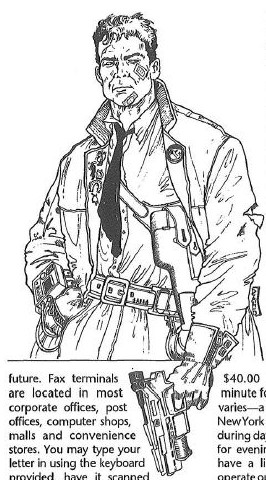
There are a couple of other tidbits about the world of CP2020 I find fascinating. One, Fax is the “letter writing mode of the future”.
 , just
, just  . Also fax letters cost 1 eb per page, so that’s one thing IRL managed to do better. The second is Screamsheets. In order to stay competitive, newspapers transmit their articles to Data Terms and sell them by the article. My brother was an avid newspaper reader who’s dropped all of his subscriptions over the years, and he’s told me a number of times that if the papers had a more a la carte model, they’d do a lot better. I don’t know if he’s right, but reading about Screamsheets made me think of that.
. Also fax letters cost 1 eb per page, so that’s one thing IRL managed to do better. The second is Screamsheets. In order to stay competitive, newspapers transmit their articles to Data Terms and sell them by the article. My brother was an avid newspaper reader who’s dropped all of his subscriptions over the years, and he’s told me a number of times that if the papers had a more a la carte model, they’d do a lot better. I don’t know if he’s right, but reading about Screamsheets made me think of that.The section ends with some drawings of some of the everyday objects characters would see in a Cyberpunk city. Not anything they would buy (at first), but visual aides as to what’s around them.
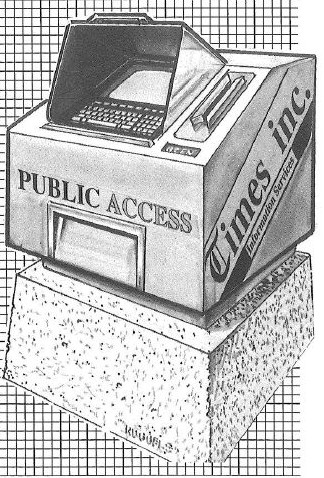
Next Time: The most amazing thing I found in my re-read
2020/2020 Count: 8
Scrounging for help like an anteater in a Raid warehouse
Original SA post
Part 12: Scrounging for help like an anteater in a Raid warehouse
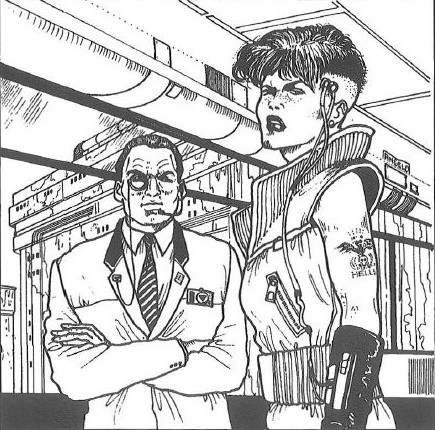
”Maximum” Mike Pondsmith posted:
Life in 2020 isn’t just all guns and drugs. If it was, we woulda named the game Dungeons & Drug Dealers.
The best Cyberpunk games are a combination of doomed romance, fast action, glittering parties, mean streets and quixotic quests to do the right thing against all odds. It’s a little like Casablanca with cyberware...”
The section on how to run the game is pretty short. Some of the advice on setting the mood and describing the environment that I think is redundant because the book has done an excellent job of setting the mood. There’s a paragraph encouraging the the Referee to play for keeps, which I don’t even think is worth commenting on. It’s an Eighties RPG, of course it’s going to tell GMs to be adversarial. That’s not to say it’s good advice, but nothing they put in here rises to the level of, say, Play Dirty. And at least it’s up front with how it expects you to run things.
So are there any good pieces of advice? Well there’s a good paragraph on what it means for conflicts to be ambiguous. It’s not just betrayals, or heroes making Hard Choices. Sworn enemies can be forced by circumstances to work together. A villain might have to do good once in a while. While this doesn’t really work in conjunction with the adversarial tone (“lol you took Bob Evil’s offer what did you think would happen? Roll new characters!”), on its own I think a good starting point for GMs used to running dungeon-crawl on how to be more nuanced.
The other piece of advice is to start with a reason why the PCs are working togethers. These “Teams” have the benefit of giving a through line for what the initial campaign goals are. The teams that are suggested are a corporate team, a band, a Trauma Team, a mercenary group, a gang, a nomad pack, a police department, and a media team. There’s even suggestions on how to adopt different roles for specific team (a Corporate can be a police captain, or a gang’s covert sponsor), but also point out that any role can find themselves in any setup due to weird circumstances. A few of the groups have a lot of player slots, and it would have been helpful to point out that not all of these have to be filled. And some roles have more representation than others (*cough* Solos *cough*).
There’s one more piece of advice in this section, and that is for the Referee to immerse themselves in the genre. As I’ve said, the book is chock full of flavor, and there’s a short story included to show how it all fits together. The book also recommends the Referee read books and see movies that Cyberpunk took inspiration from. The bibliography contains the usual suspects: William Gibson, Walter Jon Williams, Bruce Sterling, George Alec Effinger. Likewise, Filmography has the cornerstones of Cyberpunk as of 1990: Blade Runner, Max Headroom, Mad Max, Robocop, and Overdrawn at the Memory Bank.
Wait, what?


For those who’ve never heard of this move, Overdrawn at the Memory Bank is a really awful made-for-TV film from 1983, produced by RSL Productions in Canada and financed by WNET and New Jersy Public Television. It stars Raul Julia and no one else you've heard of. The plot is beyond description, but for most of the movie he inserts himself into Casablanca and pals around with himself playing Humphrey Bogart as Rick Blaine. Almost no one would know about this movie except it was riffed by Mystery Science Theater 3000 in 1997. And yet here in 1990, Mike Pondsmith is telling Referees to go and watch Overdrawn at the Memory Bank in order to better get Cyberpunk.
I have so many questions about why this is in the Filmography. The biggest is why this low budget public television movie made the list when there are so many movies that didn’t. Not Repo Man, not Escape from New York, not The Warriors, not A Clockwork Orange. Nah let’s send our fans to watch a minute long staring scene between Raul Julia and a guy with only 7 credits on IMDB, because that screams “Cyberpunk!” And the worst part? After typing this out, I think I know why. Overdrawn is the only film on the Filmography that depicts hacking anywhere close to what it’s like in this game. There were other hacking movies out in the Eighties, like War Games, but they didn’t plug the hacker’s brain into a computer. Or at least none that the staff at R.Talsorian had seen. I don’t know if you knew this, but there were a lot of movies made from that decade.
Aside from that one surprise, I don’t really know what to say about the Referee section. The advice is threadbare, but this was still from a time where “GM Advice” meant giving a map of a town and a random encounter table. The adversarial advice is irritating, but I get the desire to recreate the scraping-by aesthetic of the genre. The one thing that I would say needs to be added is that if the players are supposed to play protagonists that don’t trust each other (a common occurrence in Cyberpunk stories), then the book needs to tell the Referee how to set up that dynamic in a way that won’t jeopardize real life relationships. CP2020 just says “Cyberpunks don’t trust each other” without setting up relations and why they wouldn’t trust each other. And the frustrating thing is that the game is half-way towards setting this all up with the Lifepaths. Jamie has people from her Lifepath that like or hate her, including a former love that turned out to be a professional rival. But those are all NPCs. CP2020 could cut all the nonsense about VR creation for guidelines to interconnect all the player’s Lifepaths and still have room to talk about setting appropriate boundaries.
Next Time: Local Celebrity Destroys Office Building, Fridges Own Girlfriend
Still a safer concert than Fyre Festival
Original SA post
Part 13: Still a safer concert than Fyre Festival
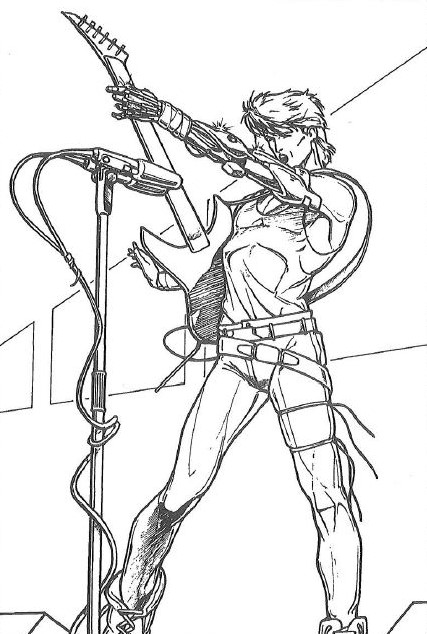
I honestly feel like I can end my review with the previous update, but we got sixty more pages. The next section is a short story titled “Never Fade Away.” It’s meant to help Referees get used to the Cyberpunk genre, in case watching Raul Julia pretend he’s a baboon wasn’t enough. To quickly summarize the story: Johnny Silverhand and his girlfriend Alt (a Netrunner) gets jumped by a group of operatives disguised as gangers after Johnny’s concert. The ops kidnap Alt and leave Johnny for dead. Johnny is saved by Trauma Team, and soon finds out the who, why, and where from a reporter named Thompson. The Arasaka corporation wants Alt to create a super-special Anti-Personnel program called Soulkiller, that can roam the Net freely, wipe the mind of targets, and save their brain pattern. Because of the processing power needed to write Soulkiller, Alt would have to be at the main office in downtown Night City.
Johnny hires a Solo/Nomad team of Rogue (also Johnny’s ex) and Santiago, and after ditching some Arasaka mooks they come up with a plan to rescue Alt. Johnny quickly sets up a concert out in front of Arasaka’s office and gets a crowd of 6,000 to riot. While the mob overwhelms Arasaka’s security and guts the lower floors, Johnny, Rogue, Santiago and Thomson (who’s tagging along cause he’s got a hate boner for the corp.) push through to the upper levels with a combination of stair/elevator switches and timed explosives.
While this is going on the story switches to Alt’s perspective as she is held in Arasaka’s main suite. An executive named Toshiro confirms Thompson’s theory on why she was kidnapped. We also learn from Alt that Soulkiller is actually a seed AI that needs a human brain pattern to operate independently - and that if she completes it, that pattern will be her. While pretending to cooperate, Alt uses the program writer to start rewriting the mainframe. As soon as she completes Soulkiller, she uses it to kill the three Netrunners watching her and then commands the suite’s defense turrets to fry Arasaka’s head of security (Akira, the Super Goon from part 7). Alt has the situation under control when the last set of explosives jars Alt’s body and disconnects her interface plugs, trapping her mind inside Soulkiller.
Johnny and his Scooby Gang finds Alt’s body and immediately recognize what happened. Feeling very sad, Johnny blows out Toshiro’s brains before shuffling out, while spoopy cyberghost Alt watches from the security cameras. Fin.
While primarily a story, the section also provides stats on how to run this as an adventure, starting from when Johnny hires Rogue and Santiago. The book even says players can even take the role of NPCs, which I think is a nice improvement over most games where such characters are off limits. Rogue is pretty OP. The rest, well, aren’t Solos. But like the goons, their stats are incomplete, and Rogue also has an impossibly high REF like the Super Goon.
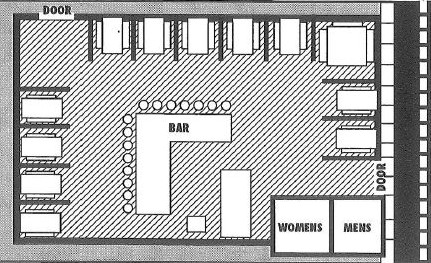
The book provides lots of maps. Maps of the bar Johnny meets Rogue in, maps of the concert plaza, and maps for each of the floors of the Arasaka office. There’s a rule for playing out the concert scene and the face off between the concert crowd and the security force, but it’s really perfunctory and there’s no way to apply it to other situations.
There’s not much to say about this. While it’s pretty threadbare as an “adventure” it admittedly wasn’t meant to be one to begin with. It’s still better than the other adventures presented later. I’ll finish up this update with my favorite hobby: dunking on the Media role. Here’s how reporter Thompson concludes his arc when he reaches the top of Arasaka tower:
Cyberpunk 2.0.2.0. posted:
His green cyberoptic winks bright as he transmits live and direct to his news net; his head swivels right to left with practiced ease as he subvocalizes the opening to his story; the story he will use to break Arasaka in Night City.
Now the events of this story are actually on the timeline from two sections ago, so this all happens in 2012. After their office got trashed, Arasaka replaces their twenty-two story office with a proper 100-story doom tower and are still the dominant corporate power in Night City.
Good story, Thompson!

Oh and the only reason Arasaka doesn’t call the cops to break up the riot is because it would be a loss of face. Just wanted to mention that.
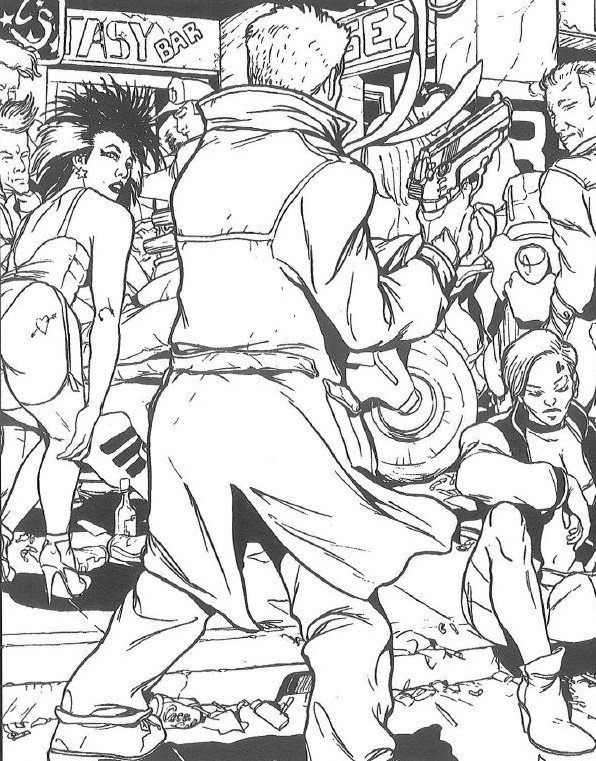
not really a scene from the story, but it was included here
Next Time: Big Business of the Twenty First Century
MegaBusiness 101
Original SA post
Part 14: MegaBusiness 101
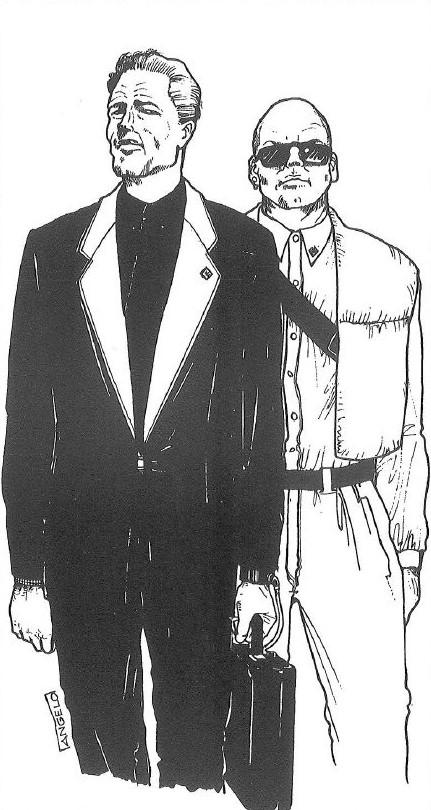
https://www.youtube.com/watch?v=o9gK2fOq4MY
The chapter on Megacorporations is pretty boring. In part because about a fifth of it is explaining basic concepts about corporations. The main problem, though, is that it’s telling the attentive reader little that is new information. A good reader will already know that corporations are able to bend governments to their will and are almost countries in their own right, but they don’t yet have the ability to just ignore the law. They already know that Cyberpunk corporations are closely tied to organized crime and have black ops ninja teams and even armies. They know that the corporations control the downtown areas of major cities and their surrounding suburbs and let everything else fall about. While all the information here is in one place, most of it doesn’t add to the setting.
There are a few details that are new. While corporations now have armies, they are not big enough to challenge large nations. While the governments of the U.S., Japan, and Western Europe are okay with Megacorps doing a lot, they draw the line at waging open warfare on their soil. Consequently, the three Corporate Wars have either been fought under proxy flags or in weaker countries that have even less ability to stop. The U.S., Japan, and Eurosphere also aren’t cool with police officers getting killed by corporations, which happened after one corporate exec was caught being a sex pest. Now there’s a complicated extraction process for when an exec does something dumb like that again.
There are of course some predictions of how corporations evolve for our 2020 counter. Some our pretty prescient, particularly about Mediacorps. Entertainment companies have been heavily consolidated, resulting in not just a homogenized product for the public, but the limited news voices gives mediacorps a lot of sway in politics.
Cyberpunk 2.0.2.0 posted:
While no major government is yet directly controlled by a mediacorporation, most socioanalysts suspect that it is only a matter of time.

There are other predictions that didn’t quite pan out. Instead of corporations preferring temp employees and exploiting at-will employment laws, Cyberpunk corps have went the other way and lock employees in with life long contracts. Since hiring away talent is no longer an option, “Corporate Headhunting” has taken on a very literal meaning.
There’s a history of how illicit corporate practices developed, and the short of it is “It’s Japan’s fault.” Because using organized crime and conspiracies to get an edge in business is only something that can be invented by moon language speakers. Who ever heard of the Sicilian Mafia doing legitimate business?
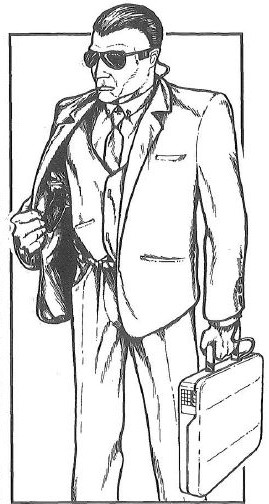
Is that a Comptroller? HE’S GOT A GUN! *bang!* *bang!*
Well that was mostly a waste of time. The rest of the section is devoted to portfolios of the major corporations in Cyberpunk 2.0.2.0 and what they do. They actually vary in size and prominence quite a bit, and some of them seem to be written from the idea that players would run them. I don’t know if that was the intent, but even when I was young that was where I thought they intended. There’s some useless details, like the exact number of AV-4s a company has available, or what specific cities they have offices in. We get the name of their largest shareholder, but little about them (if anything) They’re not listed in any particular order either.
Eurobusiness Machines Corporation (EBM) is a computer and electronics manufacturer. While nothing they produce is extraordinary, as a company they have been absolutely ruthless in absorbing competitors. The major stockholder, Dr. Kurt Muller, is described as a master corporate raider who orchestrated the biggest free market hostile takeover in the nineties.
Zetatech is a manufacturer of cyberdecks and other specialized computers. They’re a small but fast growing company in Silicon Valley that’s being eyed by other businesses. Zetatech is one of the companies that feels like it was meant to be something players could run as key officers or it’s sole covert ops teams. Bob Rosemont is the majority owner of Zetatech, and while I suspect he’s might be a Steve Jobs analogue, there’s no detail about him to say.
Network News 54 is a wavelength monopolizer and is more like a WGN than a CNN. They have offices in every U.S., but nothing outside of it. The major stockholder is Michelle Dryer.
Orbital Air has an effective monopoly on travel between Earth and the various orbital platforms, be they small LEO shacks or the Lagrange habitats. It’s resources are devoted to maintaining that monopoly. Orbital Air was involved in the First Corporate War. Their major stockholder is Antoine DuBois.
Microtech manufactures mainframes. “They are to the 2000s what Cray was to the 1980’s and 90’s, but on a larger scale.” Mircrotech is the company building the big computer cores that Netrunners fuck with. Microtech is focusing its resources on defending against takeover. Their major stockholder is Stephen Lew and family.
Biotechnica is a very important company despite it’s small size. It invented CHOOH2 just as the fuel crisis hit. It is incredibly wealthy thanks to sales of the license, and it is now working on the next big biotechnical breakthrough. It’s major stockholder is Nicolo Loggagia.
Infocomp is a think tank, providing scientific, technical, and personal data from researchers and Microtech mainframes. It’s also the smallest company with a profile, less than 10,000 employees. The majority stockholder is Robert D Alvarez.
Merril, Asukaga, & Finch is an exclusive investment and brokerage company. A lot of Eurodollars move through their hands, which presumably would make them a juicy target for Netrunners. Howard Merrill is the majority stockholder. I wanted to see if that was a real person at Merrill Lynch, but it turns out Howard Merrill is a pretty common name, so I didn’t look too hard.
World New Service (WNS) is a mix of AP and a freelance news gatherer that sells stories to the highest bidder. Its major stockholder is Mahmet al Hamedi, who lives in Riyadh despite it presumably getting nuked.
Petrochem was once just an oil company, but they were one of the early adopters of CHOOH2. Today, they’re one of the largest Agricorp in the U.S. and largest producer of CHOOH2. Petrochem has the largest remaining oil reserves. It devotes a ton of resources to protecting both, and it was involved in the Second Corporate War. Petrochem’s major stockholder is Ellen Trieste, CEO IIIINN SPAAAACE!
I’ve already explained what Trauma Team International does. Even this section keeps it short. Its major stockholder is Carrie Lachannan.
WorldSat Communications Network has a monopoly on large scale satellite communications and transmissions, and has put a lot of resources into making sure they don’t get disrupted. Raymond Rousseau is the major stockholder.
This section saves the most prominent corporations for last. Arasaka provides corporate security, police, and “specialists” for hire. It then uses this security to obtain insider information and acquire more power. It has 100,000 troops, tied for largest of any corporation. Arasaka embodies every dumb caricature and fear of Japanese corporate culture from the eighties. While this is getting into spoilers of Corporate Sourcebook 1, all I’ll say further is that Saburo Arasaka, the major stockholder, is a WWII veteran. Yup.
Arasaka’s main rival and military equal is Militech. Militech manufactures military weapons and equipment of every grade, from personal arms to tanks. They also provide mercenary services across the globe. Militech’s major stockholder is General Donald Lundee, USMC (retired). Amusingly, the Militech profile puts its equipment before the description, unlike the other profiles, and I can’t tell if that is intentional or not.
Next: Who wants a random encounter table?
2020/2020 Count: 10
A Night On The Town
Original SA post
Part 15: A Night On The Town
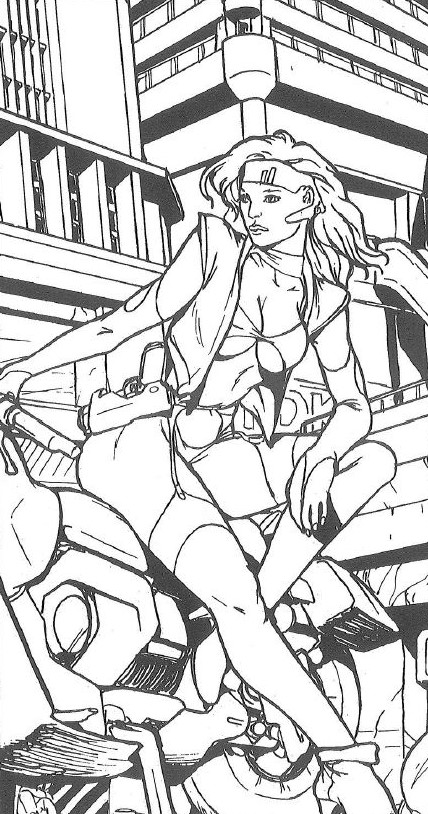
https://youtu.be/KONdZzgxE4o
Night City is the default setting for Cyberpunk 2.0.2.0. It’s located between Los Angeles and San Francisco, near San Jose according to the Cyberpunk 2077 wiki. The metro area has a population of about 5 million, and the city itself is situated on a large bay. There’s a sidebar that explains that Referees are encouraged to export the “feel” of Night City to craft a CP2020 version of their own city. However, the detailed maps are provided for gaming groups that don’t live near a big city. Also, it’s the 80s/early 90s; an RPG company is going to publish all its campaign notes.
Night City was founded in 1994 by a developer named Richard Night in response to the Collapse. Night incorporated a group of suburbs on California’s coast into an urban center free of the blight that was damaging the rest of the country’s cities. The corporate dream city does not go as planned, and in 1998 Night is assassinated by the mob. Following the assassination the mob-controlled Night City goes to shit, as rival gangs and mobs turn the entire city into a war zone. In 2009, the Corps decide they’ve had enough and use covert strike teams to break the mob’s control and revitalize Night City - or at least the parts they care about. By 2020, Night City is pretty comparable to all the urban centers: a pristine core, a well guarded shell of suburbs, and a mantle of shit in between.
The current mayor is Mbole Ebunike, a corporate puppet. He’s currently up for re-election, so outing him could be a good campaign hook. The police force is mostly corrupt save for the Psycho Squad. Night City has public transportation, but there’s no information on what it costs to use. The airport can handle international flights, but not sub-orbital. The city is on State Highway 828, which connects to I-5....hey remember that the focus is on the feel?
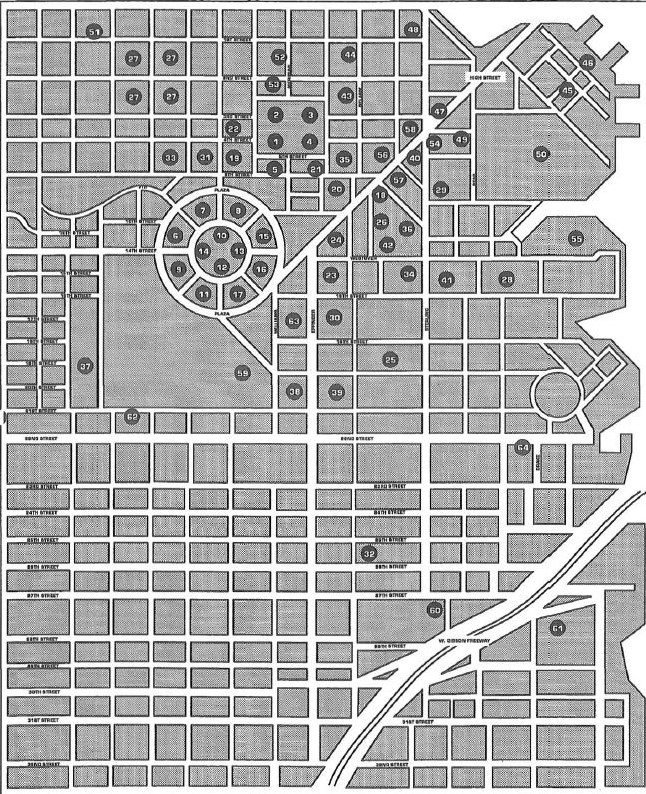
The map of Night City describes a variety of locations. The places that get the most descriptions are bars. Because despite the game saying otherwise, it’s the Eighties and you got to start an RPG in a bar. There are 10 on this map, each different in ways that are pretty inconsequential. Other locations highlighted are warehouses, the specific street corners gangs meet, department stores. Like the sidebar said: the feel of the city!
After the map comes a random encounter table. There are three depending on the time of day, but there’s no distinction for where the PCs are in Night City. The Referee rolls on the same table whether the PCs are in the Corporate Plaza or in the Combat Zone. So let’s roll a set of encounters for a day in Night City. Jamie, Kimmy Chi, and maybe a couple other PCs are doing a job that starts them off getting the mission from a bar in the Combat Zone in the early afternoon, picking up a trail outside an exclusive Chinese restaurant that evening, and then finally making a delivery in a garage under Arasaka Tower after midnight.
The group doesn’t waste a lot of time with the broker offering the job. The Referee feels she ought to do something to spice up the scene. She rolls a 48, indicating that the group runs into two Corporate Execs from a mid-sized firm, here in the Combat Zone. The Ref rolls to see what they are doing and gets a 6 - they are lost and ask the group for directions to a restaurant. One of the players assumes this has something to do with the mission (even though the Referee is careful to use a different restaurant) and it takes about a half hour to drop the tangent.
The group gets to the restaurant and are in place to set up a trail. The Referee decides to inject a bit of nightlife that might complicate their efforts. The Ref rolls a 25. Six street punks, “looking for credits to feed their habit”. Since the group is broken up, the Ref rolls to see which character they approach, and gets Kimmy. The description says they’ll rush anyone not in Corporate or Booster colors. Kimmy has neither, but he is wearing full body armor and brandishing a heavy SMG. The punks are armed with knives. The referee doesn’t even run the fight, but just has the street punks walk up, realize this is dumb, and then leave.
The group eventually get the item they need and arrive at the garage for the drop off. The Referee sees there’s still some time left before the players need to head home, and momentarily forgetting where this garage is located, makes a roll on the after midnight encounter table. She rolls an 92. And so our heroes arrive at the drop-off point only to find that it’s currently the site of a gang war between neo-fascists and Brady Bunch cosplayers! The characters help the Brady family, and it’s only after the fight is over that one of the players says “wait, aren’t we supposed to be under Arasaka Tower?” The table goes silent before everyone bursts into laughter. The rest of the campaign is now about Corporate-sponsored bum fights.
(The above chain of event presumes that our good Referee has taken the time to prepare stats for all the possible encounters, because the book sure hasn’t! And the different types of gangs are different enough that as written you can’t reuse stats. A Booster isn’t the same thing as a Crhomer, that’s insane!)
The section ends with 18 NPCs living in Night City, compressed into two pages. The info on these NPCs is pretty threadbare, and only a couple of them have enough to form into a plot hook. The NPCs come with a list of attributes and nothing else. Also the Solos have Reflexes above 10, indicating they were copied from 1st edition without change.
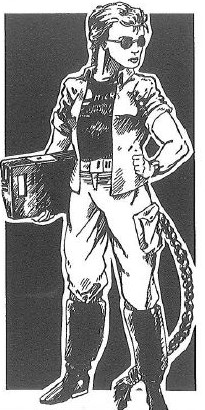
Next Time: and the rest
I Have No Scenario And I Must Screamsheet
Original SA post
Part 16: I Have No Scenario And I Must Screamsheet

The final section of Cyberpunk 2.0.2.0. starts with a bunch of news articles written in-universe. The first set of articles are music articles and reviews. This is one of the few points of frustration with Cyberpunk’s worldbuilding. For the most part it does a great job even if it gets redundant at parts. But they put in a lot of words into how important Rockerboys are, and I dig that. But I have no idea what they sound like, and it bugs the hell out of me! These articles don’t help the matter, because they’re in universe and assume the reader knows what type of music so-and-so plays. Just tell me someone these Rockerboys are comparable to, I can figure out the rest.
Besides my general frustration there are two notable tidbits from these otherwise similar articles. First, a year after trashing Arasaka’s main U.S. office, Johnny Silverhand has shifted gears entirely and is bitching about cloning. No wonder Arasaka was able to bounce back. The second detail is about a different band discussing how a corporation tried to discredit them with false rape allegations. Uggggggh.

After the Rockerboy stories we get two articles on how individual Nomad packs formed. These are at least useful for someone trying to flesh out a backstory and wants to borrow elements from it. Then there’s a couple of articles about the gangs of Night City. We get the names of several of them. The only one that really stands out are a neo-luddite, anti-cybernetics gang called “The Inquisition”. They’re played straight by this book, but I’d bet a Eurodollar they were added just so even this game wouldn’t be free of Monty Python references.
There’s one article here that I actually enjoyed, which was “One Night with the Trauma Team” which gives the daily log of a Trauma Team AV-4 barging into dangerous situations, rescuing who they can, recycling who they can’t, and fighting off their big competitor, “R.E.O. Meatwagon”. The article makes playing a Trauma Team sound very fun.
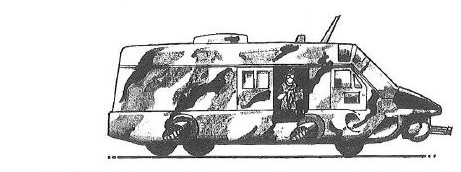
The book concludes with 9 Screamsheets and 10 Scenarios along with them. The Screamsheets have a few related articles, and on the flipside is a scenario. Despite a lot of space seemingly given to each scenario, a lot of the times it’s used on stuff that won’t be important to running the scenario. So we get to know all these specs for a made-up semi, but not the stats of the mooks being sent to intercept it.
Here’s a summary of the ten scenarios:
- The characters are hired to drive a truck carrying plant growth enzymes and protect it from competitors trying to steal it. The fact that they have a decoy doesn’t matter and has no way of being discovered by the character.
- A fixer hires the group to protect her while she sells evidence pinning a serial killer to his murderers. The players basically do nothing until the killer shows up at the very end.
- A pirate radio station hires the characters to defend it from a booster gang hired by a mediacorp.
- Someone is selling sabotaged cyberware on the black market, and there is a sizable bounty from multiple parties (including cops that don’t want more Cyberpsychos) to put a stop to it. This is pretty open ended, with the culprit turning out to be those Inquisition nutsos.
- The characters are hired to cut illegal cable hook-ups. Some tappers will be more defensive about it than other.
- The group’s Nomad friends (You will have Nomad friends!) hire them to protect them from harassment by Petrochem. It turns out the reason for the harassment is that the Nomads are camping over a spot where Petrochem dumped a bunch of toxic shit. As soon as the Nomads stumble on the shit, Petrochem sends in the kill squads.
- One of the characters is framed for a terrorist attack in Newfoundland and is subject to a massive manhunt. This feels like something that sounds cool as a movie premise but would just feel like a dick move to pull on a gaming group.
- The group has to steal palladium! That is, the element. This is a heist mission in the middle of a snow storm. I kept waiting for the jab at our favorite RPG publisher, but it never came.
- Netrunners hire the characters to plant transceivers at a money-clearing site so they can siphon off money.
- The characters are hired to perform a counter-extraction from a well-guarded corporate research site. This is the toughest sounding mission, as the site is defended by lots of armored guards and an elite solo. However, there are no stats for any of them.
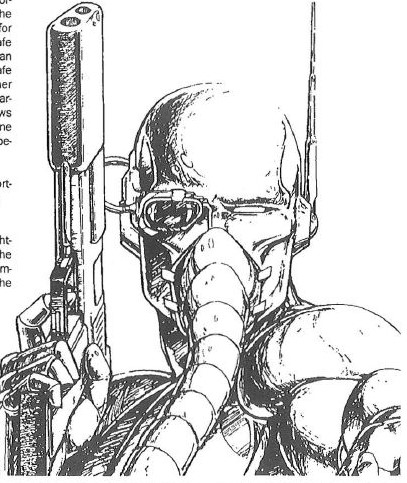
And that’s the end of the book.
Final Thoughts: Even when I was still a kid, I could tell that Cyberpunk 2.0.2.0. was a game trying to be something bigger than just fight scenarios, but didn’t really know how to achieve that. I always go back to putting the Rockerboy as the very first role in the book. Being able to grab a guitar and move thousands was supposed to be important, but it ultimately can’t be when it has only a half a page of rules compared to dozens given for shooting guns. And giving Rockerboys the same rules space would not have helped matters either - the role would just have the same problems as the Netrunner.
Like many RPGs, the story of CP2020 is incomplete without the supplements. In the core book, the authors are able to stick to a consistent tone, and capabilities can remain within set bands. But that changes when it comes to selling supplements. The core sets an upper limit to how much cyberware a player can expect to carry around, until the supplements let them be Robocop 2. The game is set in urban environments, until supplements fling the players out into space. And there are still limits to what a Megacorporation can get away with, until supplements have them nuking each other. But that is a tale for another time.
The End
https://youtu.be/OP63BRzKmB0
Final 2020/2020 Count: 10